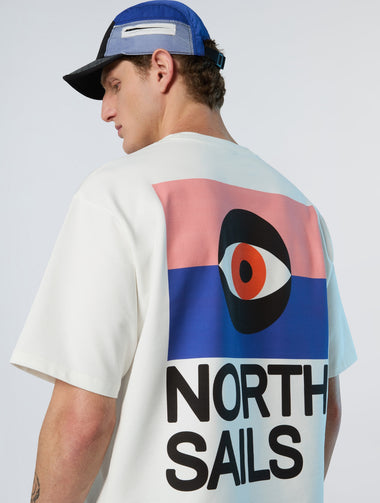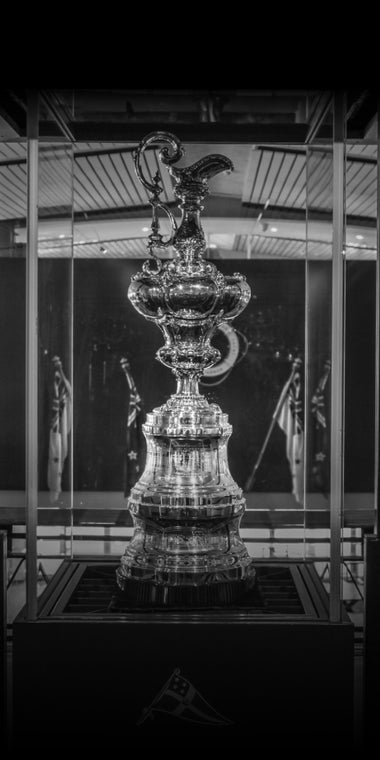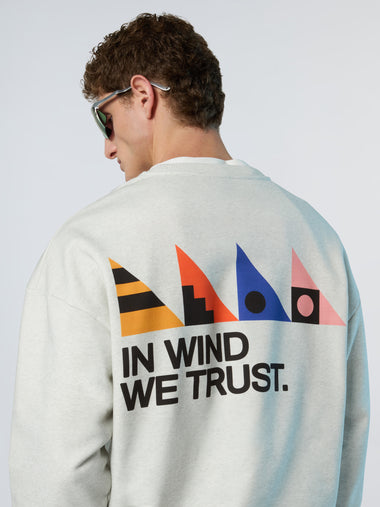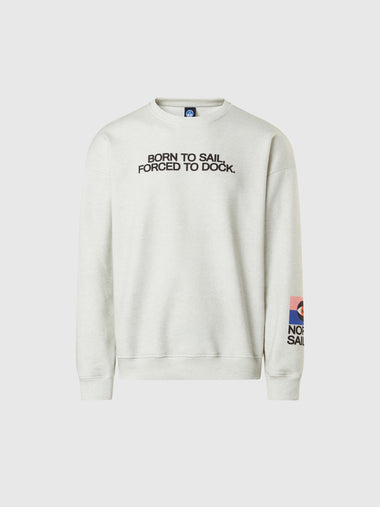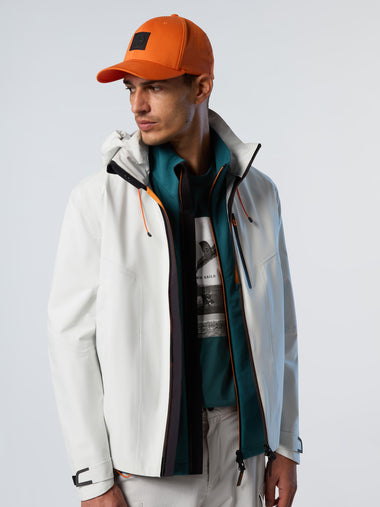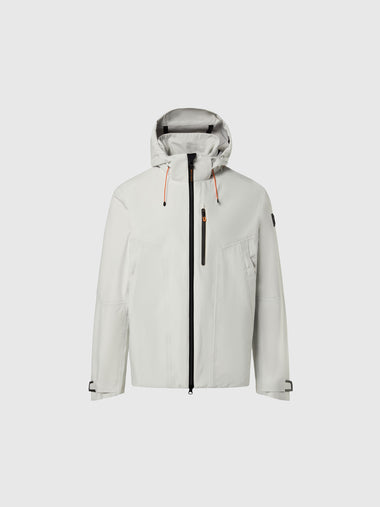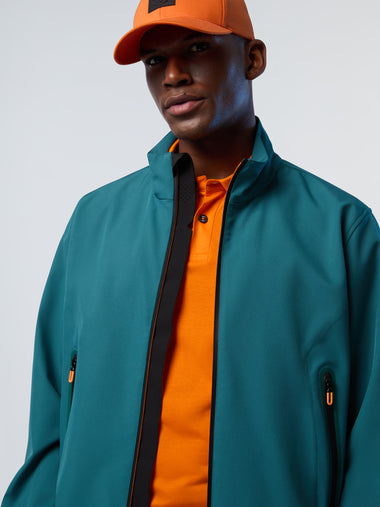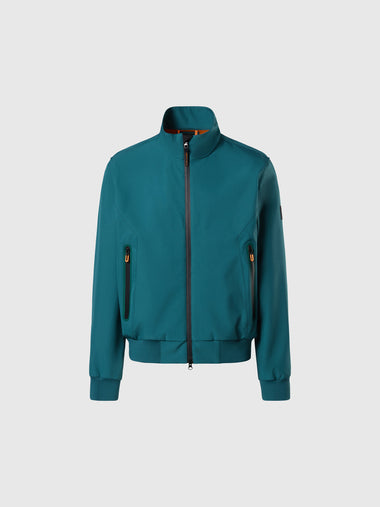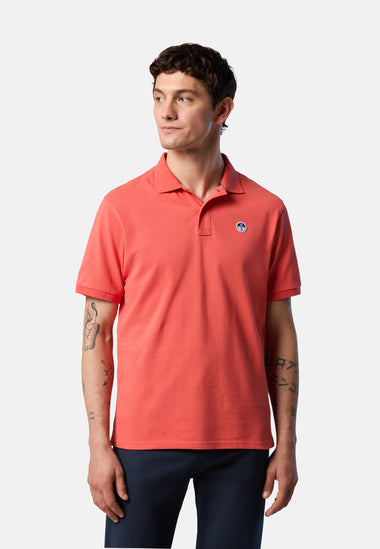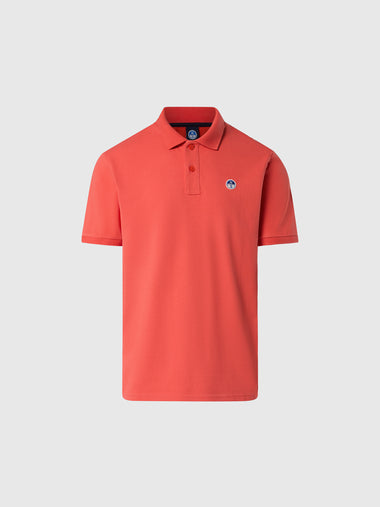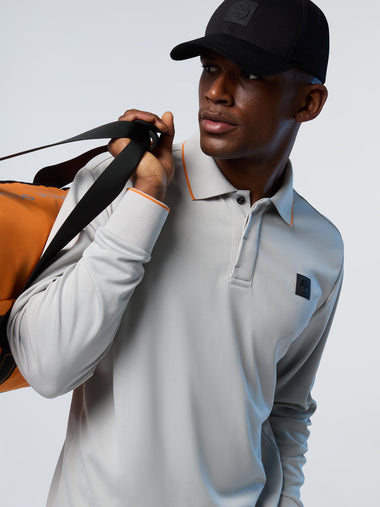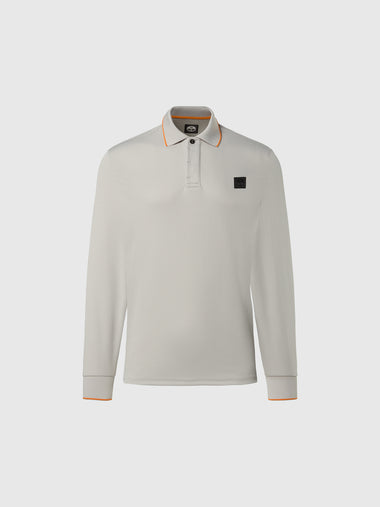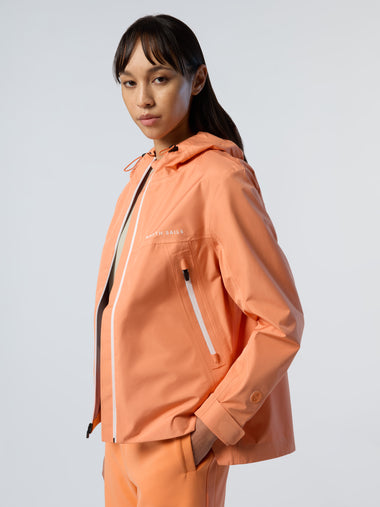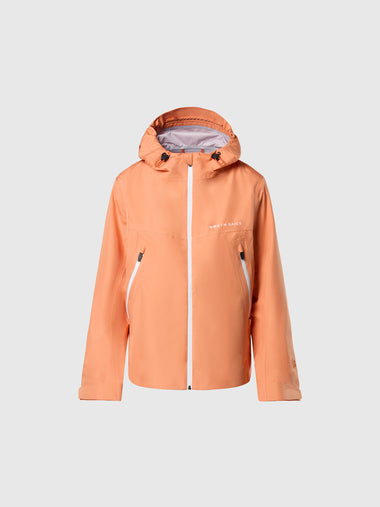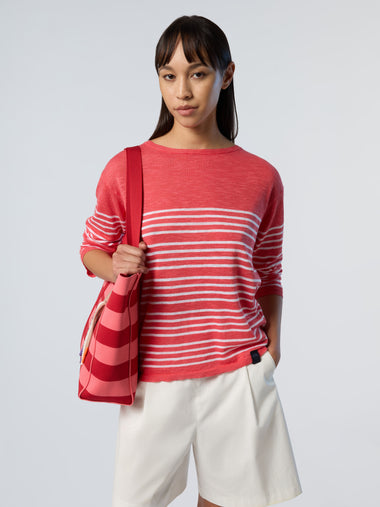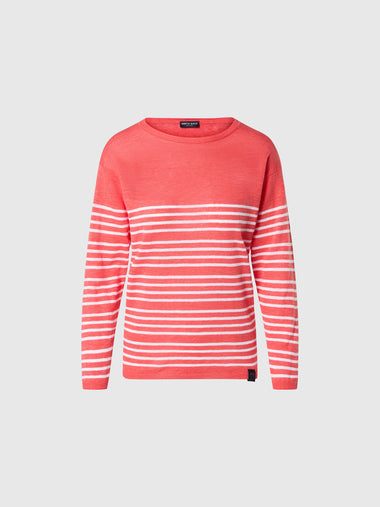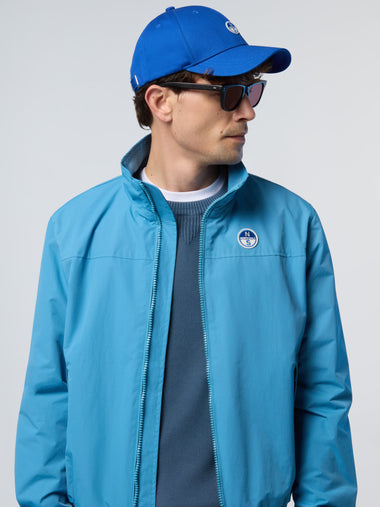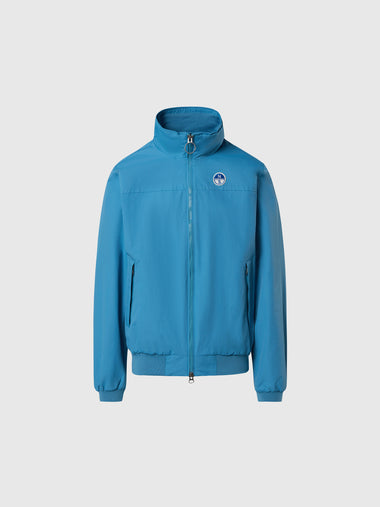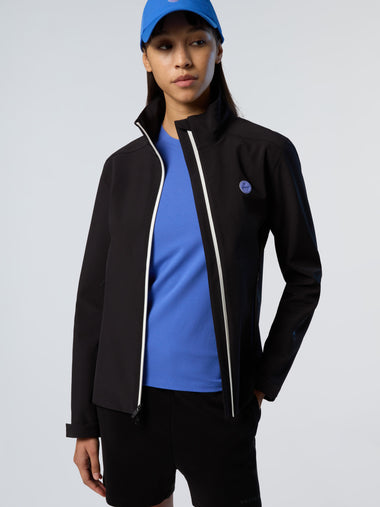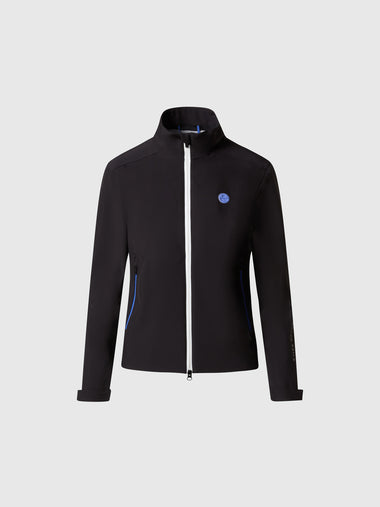NORTH SAILS BLOG
Alle
Events
Guides
News
People
Podcast
Sustainability
Tech & Innovation
Travel & Adventure
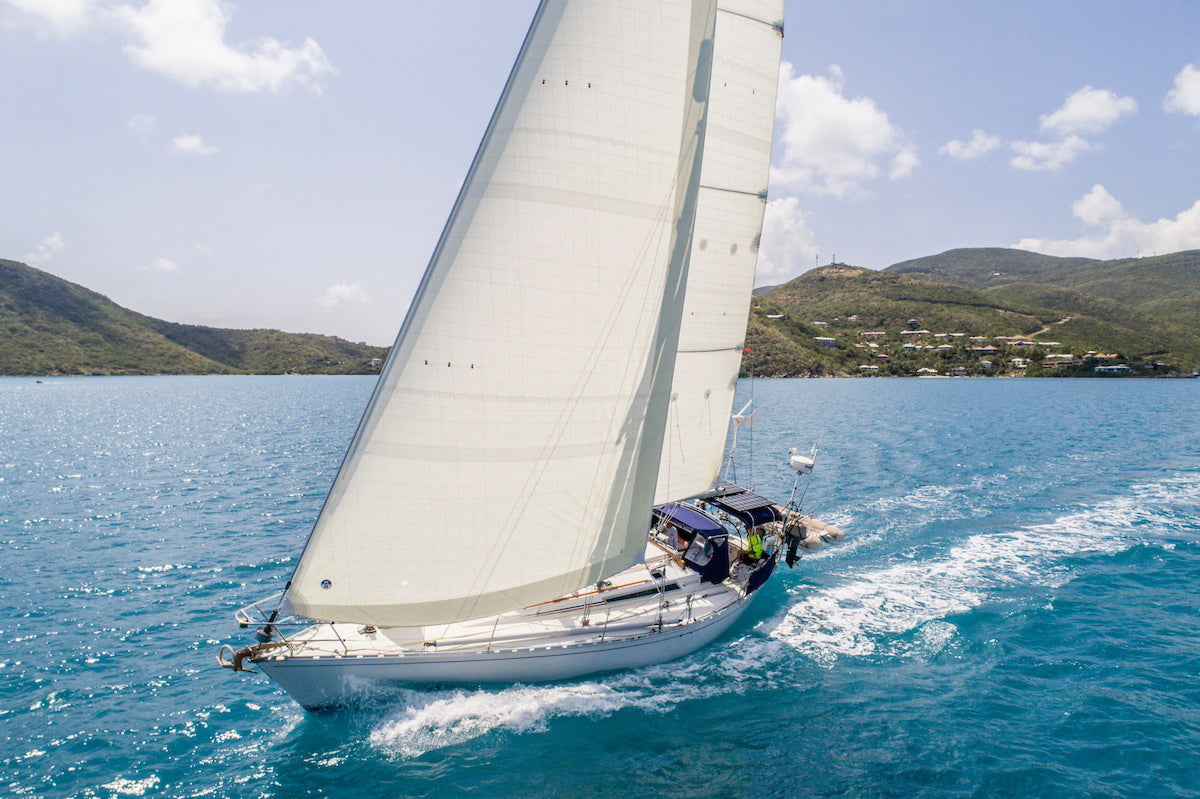
SOMMARENS ÖPPETTIDER
SOMMARENS ÖPPETTIDER
North Sails Stockholm
Vecka 28
Måndag - Fredag 9.00 - 14.00
Vecka 29
Stängt
Vecka 30
Måndag - Fredag 9.00 - 14.00
Vecka 31
Måndag - Fredag 9.00 - 14.00
Vecka 32
Måndag - Fredag 9.00 - 14.00
Vecka 33
Måndag - Fredag 8.00 - 17.00
Vi önskar alla en fin sommar!
READ MORE
READ MORE
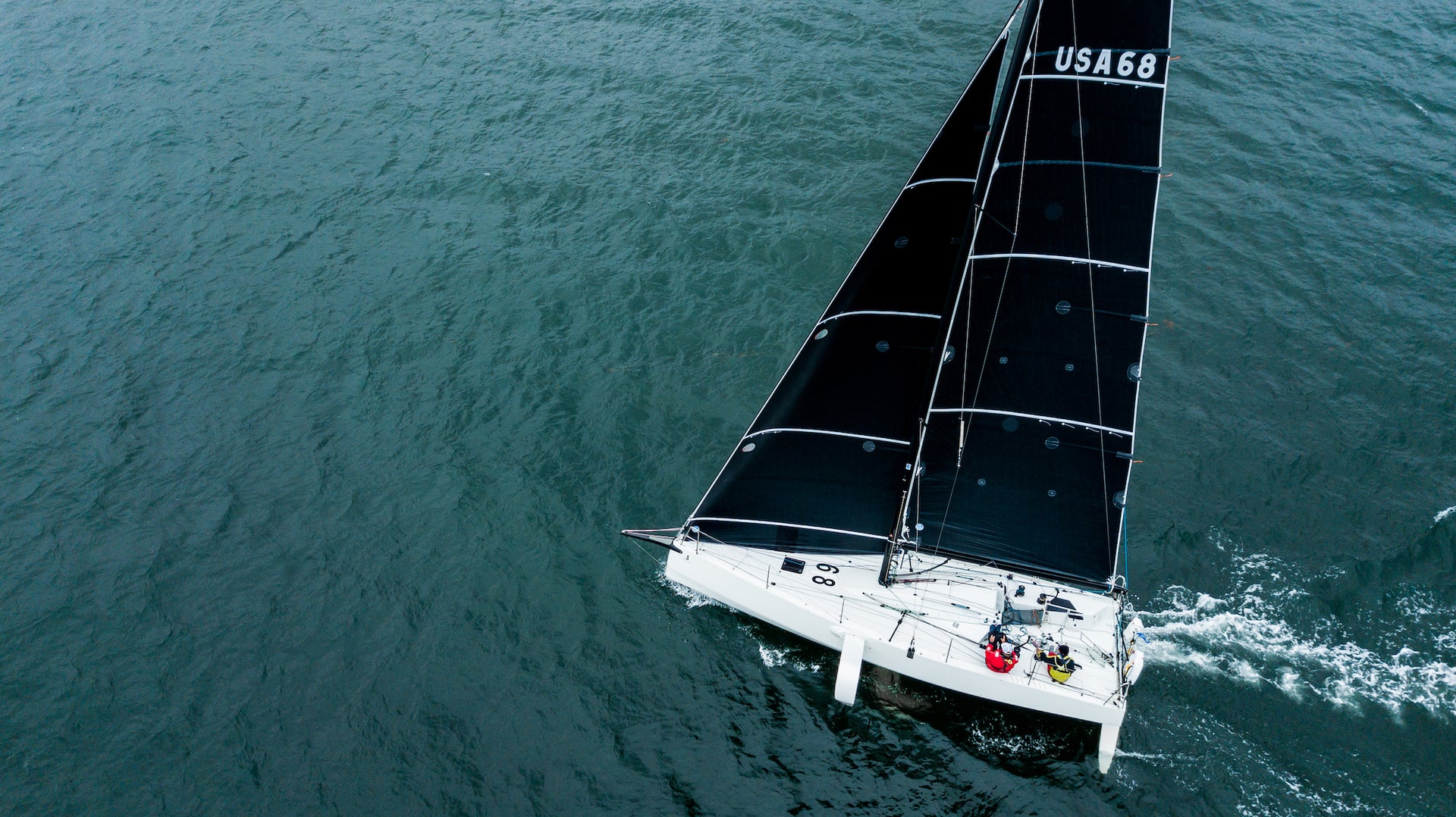
DOUBLING DOWN ON DOUBLEHANDED
DOUBLINGDOWN ON DOUBLEHANDED SAILING THIS SUMMER
North Sails Recommended Events for Shorthanded Sailing in New England
Last year was rough for sailing, but one bright spot was the surge of doublehanded sailing. For countries like France and the UK, double and shorthanded sailing is ingrained in their culture. This style is still catching on here in the US, but we highly recommend giving it a shot.
Interested and wondering how to get started? It’s simple really, find a friend and sign up for an event. We have three events dedicated to, or featuring doublehanded divisions for those of you in the Rhode Island area. There is something for everyone in the mix; a sprint-sail, an offshore overnight, and one day race.
Below are three events North Sails recommends for doublehanded sailing this summer.
Edgartown Race Weekend 'Round the Island Race
July 22-24, 2021
Edgartown Race Weekend is one of the nation’s oldest distance races, occurring every summer on and offshore the island of Martha’s Vineyard. A staple on the East Coast racing calendar, the highly competitive and exceptionally fun race weekend includes buoy racing and ‘Round-the-Island segments. Given the popularity of doublehanded racing at last year’s weekend, the event team is again offering doublehanded scoring in 2021. Doublehanded scoring will utilize PHRF-NE rating for spinnaker and non-spinnaker settings.
Race day is approaching. Sign up today!
New England SOLO/TWIN Championships
Friday, July 30, 2021
Hosted by Newport Yacht Club, this racecourse consists of ocean triangles ranging 65-125 miles in length. This annual race begins and ends in Narragansett Bay. Course lengths vary based on race division; Monohulls, Multihulls, and Cruising Canvas divisions.
Registration is Now Open
Ida Lewis Distance Race
August 19-21, 2021
The 17th edition of the annual Ida Lewis Distance Race offers something for every type of big-boat sailor. The popular Newport-based event features classes for ORC, PHRF (including Cruising Spinnaker) and Double-Handed (Mixed Gender and Open), and Youth and Collegiate challenges. In addition, entrants have a choice of racing in either the traditional OFFSHORE overnight distance race, starting on Friday (August 20) or the shorter IN BAY distance race, starting and finishing Saturday (August 21).
Get Your Name on the Entry List
READ MORE
READ MORE
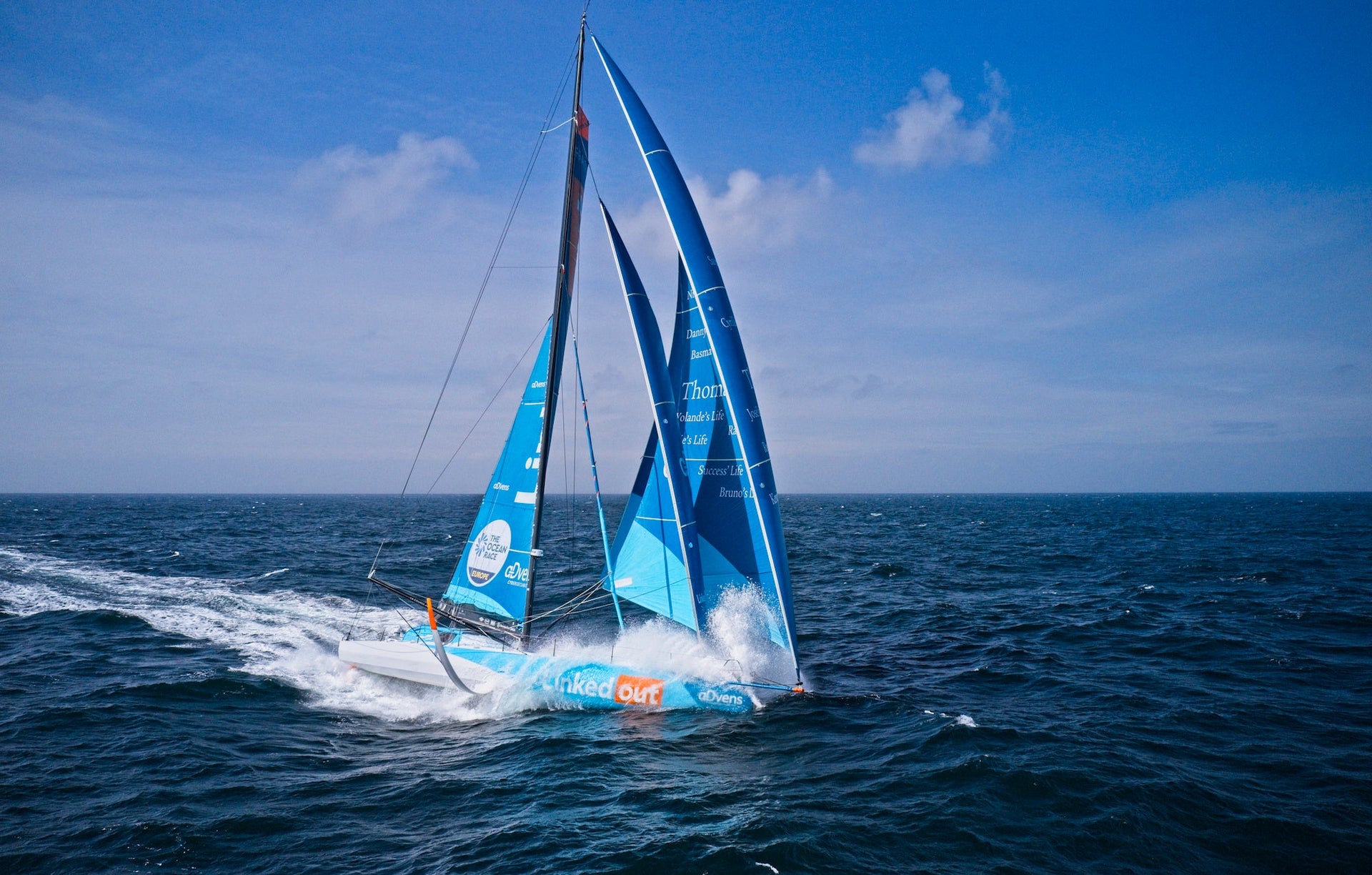
SAILING OR DESIGNING?
SAILING OR DESIGNING?
Why choose when you can have both (and benefit from it)
📸 Pierre Bouras
For North Sails designer Quentin Ponroy, creating the sails for the LinkedOut IMOCA 60 didn’t stop once the plans left his desk. A keen sailor, the Frenchman took it one step further and joined Thomas Ruyant and his crew for The Ocean Race Europe, a committed way to put the theory to the test – and think of solutions for the future.
“I’m a field designer”, says Ponroy in his distinctly analytical tone. “I work with computer models, but I’ve got a racing background and I need to go onboard and connect the theory to what’s happening at sea.”
Having wrapped The Ocean Race Europe on June 19 in Genova, Italy, Ponroy is so modest he plays the whole thing down by focusing on the technical aspect of the race and the learnings he’s bringing back to North Sails. The reality is though, he did join a professional crew of four sailors (skipper Thomas Ruyant and fellow Vendée Globe 2021-21 finisher Clarisse Crémer, Morgan Lagravière, Laurent Bourgue and François Pernelle ) during an offshore race from Lorient to Genova via Cassis, Portugal and Alicante, Spain. In a way, he’s used to it: he’s more of an inshore and coastal racer, but he’s crossed the Atlantic on maxi multihulls before, including during The Bridge on Francis Joyon’s IDEC Ultim.
“This was a first for me in many ways though,” he adds. “I’m not used to this style of boat and competition.”
📸 Pierre Bouras
It went well, very well for Ponroy– the conditions were varied, allowing them to try all the sails and trim non-stop, and the crew eventually took third overall. But Ponroy doesn’t dwell on that. As he steps back into his office routine he has tons of learnings he can use going forward.
“We’ve already designed two sets of sails for this boat together with Antoine Koch (who’s in charge of the sails at LinkedOut) and France-based North Sails designers Gautier Sergent and Yann Andrillon: one set for the last season, and one set for the 2020-21 Vendée Globe. That’s eight sails per set. But those working sessions on the water were short. Boats are often at the boatyard or out racing and we, the technicians, don’t usually have much time to work onboard.”
That’s what convinced Ponroy to join the team– well that, and his love for sailing. To have a good period of time onboard, in actual racing conditions, to help him see the things he just couldn’t anticipate back on land at the computer.
“In offshore racing, there are uncertainties related to the sea conditions, the time of day, the weather, the manoeuvres… The models can be far from reality, I think, and we see that in the sailors’ feedback. Sometimes, the sails aren’t behaving like we thought they would. We’re confident in our upwind sails, but some of our downwind sails have a lot more volume and are harder to design. We must be doing better, in particular in rough seas where the boats accelerate and slow down a lot.
“At North Sails, we want to find answers to these questions.”
#1 Reliability
Reliability. It’s “one of the most important factors when designing a sail” according to Ponroy. It needs to last– especially when it’s going around the world.
“We already noticed some unusual things after the Vendée Globe, in particular on the sails of the new foiling boats. In light winds, LinkedOut behaves like a traditional IMOCA 60 equipped with only a keel and daggerboards. When she accelerates though, the foils create a lot of power and the boat feels like a multihull. The loads, the speed, the sounds – everything is higher. But the hull remains the same big monohull so when you hit a wave you’re brought to a violent halt.
“I think I now understand some things that we didn’t quite foresee in our models: on foiling boats like these, it’s not just the boat but the sails that are submitted to higher loads, too.”
The loads are higher and the speed range wider. When their target sailing speed was 25 knots, Ponroy observed the boat’s speeds actually fluctuated between 20 to 30 knots– and no that wasn’t because of a novice helmsperson.
“This impacts the sails in two different ways,” he says. “First, when the boat stops in a wave and suddenly loses 10 knots of speed, there is a load peak in the sails that’s very high. That was my first strong impression and it’s something we need to take into account in our design.”
Because the crew tend to trim based on the lower speed range, the sails aren’t trimmed enough and flap a lot whenever the boat accelerates. The Stay Sails suffer from that more than the others.
“Sails don’t particularly love flapping,” he jokes, “so we need to implement solutions to stop it from damaging the sails.”
📸 Pierre Bouras
#2 Sail shape & Helix Structured Luff
A North Sails exclusive, Helix Structured Luff sails are designed to redistribute rig loads from a cable or headstay into the sail membrane, placing more load on the luff.
“The IMOCA 60 class started to adopt it a couple of years ago,” Ponroy said. “We’re now noticing that Helix Structured Luff is good when out at sea with the auto-pilot on, but could be better. That’s exactly why it was so beneficial to be onboard.”
“Having observed it onboard LinkedOut, I think a full, 100% Helix sail isn’t quite realistic on these boats that are mostly single-handedly sailed. If the loads are entirely placed on the sails, it causes luff instability. I think 50/50 is a good target for now, allowing us to benefit from Helix’s main quality, an optimal and evolutive sail shape.”
With these boats performing faster every year, Ponroy reckons we’re heading towards very flat sails with forward volumes. “The downwind sails look more and more like upwind ones these days. The surface difference between the main and foresails is key and needs to be calculated properly.”
📸 Pierre Bouras
#3 Manoeuvres
“I did almost all of them at the bow with Thomas,” he smiles. “It’s been great. I knew most of the moves but learned how long and how complex some of them are. We were a five-person crew so it’s not even single-handed sailing, but it was really enlightening and will allow me to be more precise and think of more coherent sail selections going forward.”
For Ponroy, allowing more overlaps between every sail is a key learning from these weeks at sea. “It allows the sailor to delay some manoeuvres and not always have to change a sail. It gives them more options.
“The more versatile a sail is, the more you can use it, the further you can push it.”
📸 Pierre Bouras
READ MORE
READ MORE
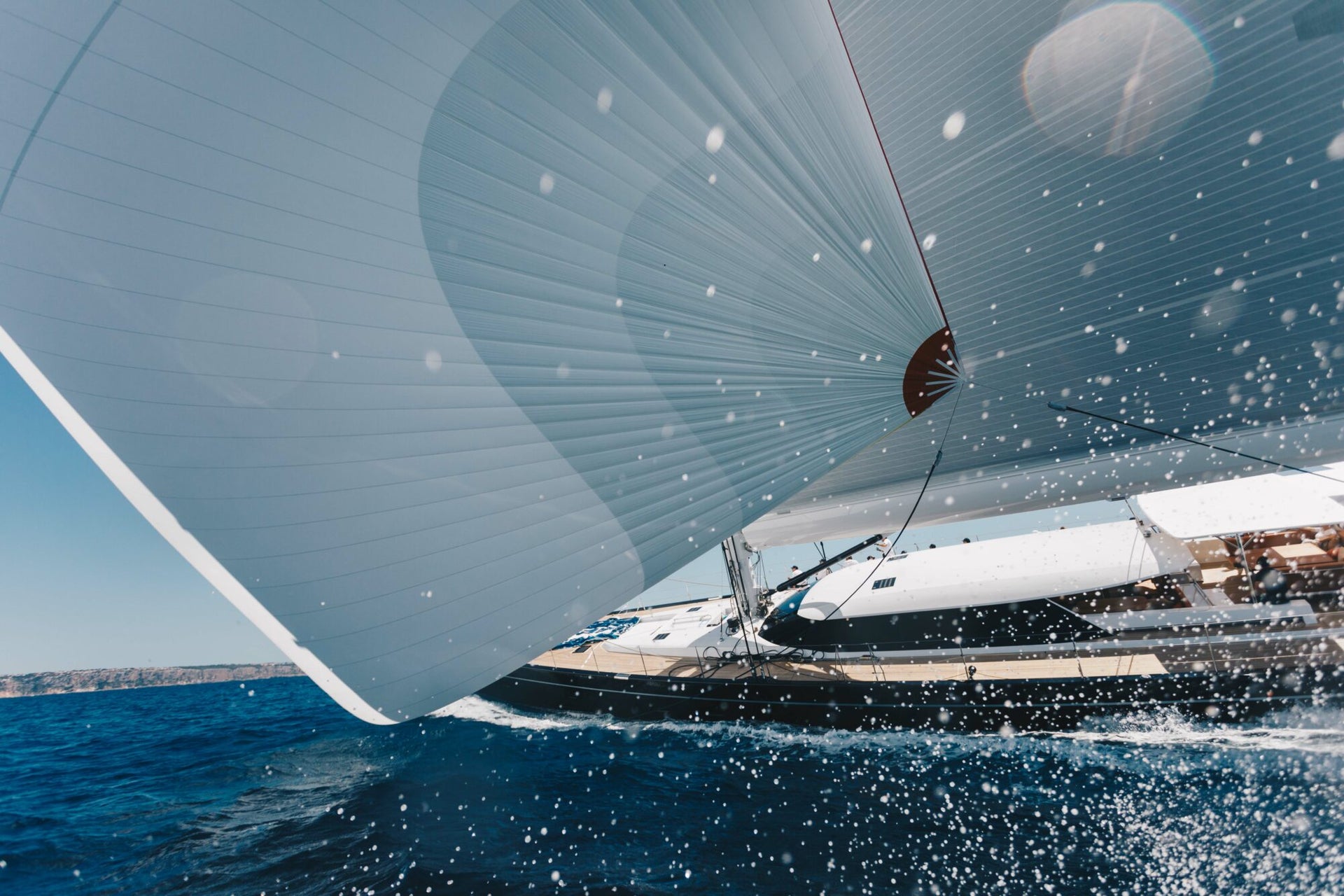
DELIVERING A WINNING COMBINATION FOR SUPERYACHTS
DELIVERING A WINNING COMBINATION FOR SUPERYACHTS
The right people, and product paired with a heavy dose of passion
📸 Atila Madrona
I think if you asked Lowell North, he’d be pleasantly surprised by the growth of superyacht sailing but not shocked that North Sails is the leader in this segment of the sport. That’s because his founding philosophy is particularly well suited to outfitting the biggest boats in the world; get the best people, commit yourself to make the best product, be clear, creative, methodical, and competitive, and surpass your wildest expectations.
There is no such thing as a production superyacht; each owner has their unique concept, which requires a unique solution. Reflecting on the past 15 years, the size and power of superyachts have slowly been creeping up, demanding our team to work hand in hand with owners, yacht designers, shipyards, captains, and project managers to find solutions to challenges that never existed before. You take these projects one-by-one but then quickly remember that the 3Di sail we molded last month broke a new manufacturing record, set by the previous 3Di superyacht inventory we delivered.
A handful of the North team recently participated in the Superyacht Cup Palma. This long-standing regatta is always a much-anticipated event on the superyacht racing calendar. Both in 2019 and then again this year, the fleet was entirely powered by North Sails. Hosted in the heart of activity, the Superyacht Cup is a whole team effort for North Sails. We have our sail experts and sail designers onboard many of the competing yachts. In addition, our Palma loft is onsite with sail service. We work closely with our sister company Southern Spars, to make sure all our clients have access to the necessary support.
During the event, our team sat to share their thoughts on how here at North Sails, we deliver a winning combination.
READ MORE
READ MORE
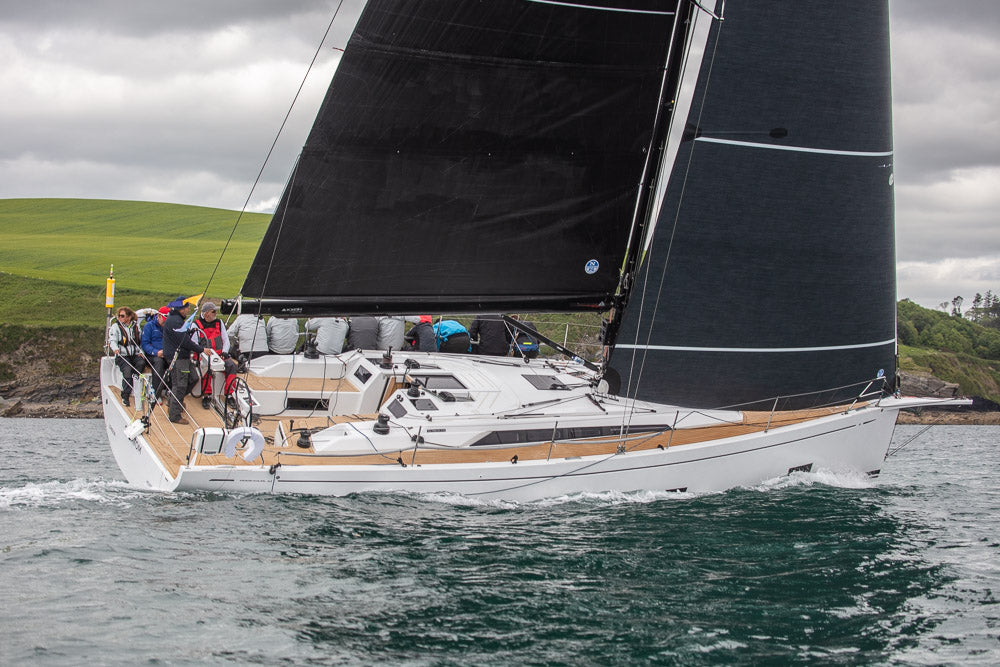
NORTH SAILS CLIENTS AT THE SOVEREIGN CUP IN KINSALE
NORTH SAILS CLIENTS AT THE SOVEREIGN CUP IN KINSALE
A Report from North Sails Ireland
📸 Bob Bateman
Well, what an amazing event that was!
Congratulations to the team in Kinsale Yacht Club for another fabulous Sovereign Cup. We had a nice mixture of wind speeds and directions, tons of shifts, plenty of sunshine, and the odd light smattering of rain. We were thrilled to see so many of our customers on the water and you were all flying!
Your North Sails Ireland team was all afloat and racing hard. I had a fantastic time doing the tactics on Conor Phelan's Jump Juice in the Coastal fleet, North expert Shane Hughes was mainsheet trimmer on the IRC 1 winner Snapshot and North expert Nigel Young guested on the GS37 Frank Caul's Prince Of Tides, Fiscala the Jeanneau Sun Odyssey 49 owned by James Matthews and the Elan 37 Cappella Of Howth owned by Graham Vickers.
We had fun each day catching up with our friends and customers every day after sailing in Kinsale YC.
North Sails powered so many class winners and stacked the podiums. It was great to see Mike and Richie Evans winning both their class and the overall trophy in their first event "out of the box". Here's what Mike had to say after the event:
"We chose North Sails for our new J/99 Snapshot. We were looking for all-around performance with a focus on inshore racing. The team at North sails worked with us to provide us with a wonderful suit of sails which gave us really competitive upwind and downwind performance. We are delighted with our results at our first major regatta here at Sovereigns Week."
"The team at North sails worked with us to provide us with a wonderful suit of sails which gave us really competitive upwind and downwind performance. We are delighted with our results at our first major regatta here at Sovereigns Week."
Another winner "out of the box" was Bob Rendell's GS 44 Samatom. Here's what owner Bob Rendell had to say after his epic win:
"We were delighted to take the coastal class win at Sovereigns Cup. Certainly, the new North Sails inventory made a big contribution to Samatom's performance across the range of conditions we experienced. The service and support from Shane and the North Sails Ireland team has been crucial in getting this project off the ground so successfully.''
Here is a quick summary of our North Sails clients' wonderful results - thank you everyone and well done!
IRC Coastal Fleet
1st Samatom - GS 44 - Bob Rendell - Howth YC
2nd* Nieulargo - GS 40 - Denis Murphy & AnneMarie Fegan
3rd Jump Juice - Ker 37 - Conor Phelan
IRC 1
1st Snapshot - J99 - Mike & Richie Evans - Howth YC
2nd* Artful Dodger - J109 - Finbarr O'Regan
3rd Storm II - J109 - Pat Kelly
IRC 2
2nd* Kind One - 1/2 Tonner - David Kelly
IRC 3
1st YagottaWanna - J/24 - David Lana - Royal Cork YC
White Sails 1 IRC
2nd Price Of Tides - GS37 - Frank Caul - Royal Cork YC
3rd Valfreya - Sigma 33 - David Riome & David Leonard
White Sails 2 IRC
1st Shillelagh - Blazer 23 - John Twomey - Kinsale YC
3rd* Miss Charlie - Tofinou 8 - Patrick Beckett
White Sails 1 ECHO
1st Fiscala - Jeanneau Sun Odyssey 49 - James Matthews - Kinsale YC
2nd Capella Of Kinsale - Elan 37 - Graham Vickers - Kinsale YC
3rd Prince Of Tides - GS 37 " Frank Caul - Royal Cork YC
* denotes partial inventory
If you would like to discuss any aspect of your boat's performance, then please do not hesitate to get in touch with us. We're always delighted to chat!
📸 Bob Bateman
📸 Bob Bateman
READ MORE
READ MORE
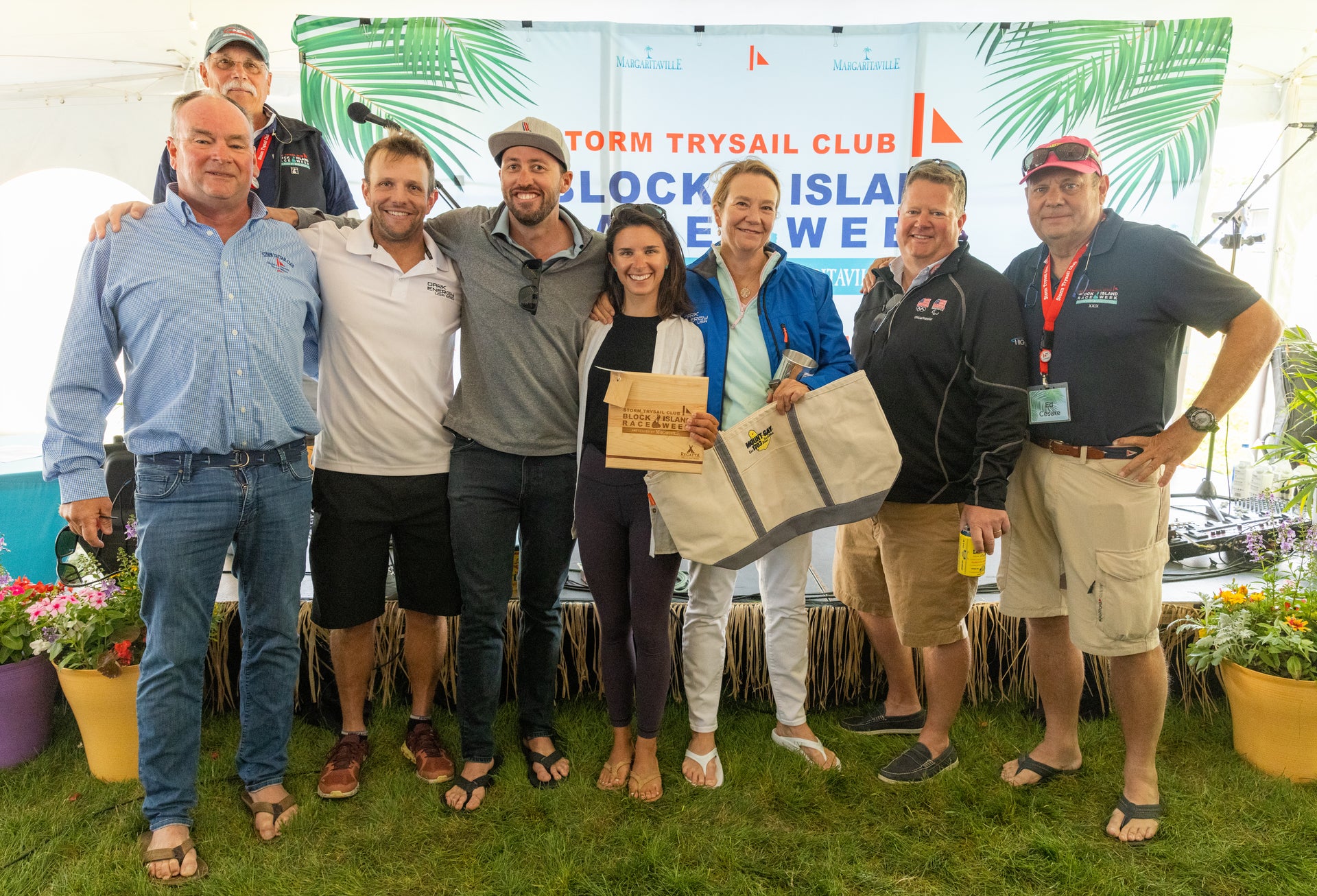
DIALED-IN WITH DARK ENERGY
DIALED-IN WITH DARK ENERGY
Smallest Boat at Storm Trysail Club BIRW Makes Waves in PHRF Division
📸 Storm Trysail Club Block Island Race Week 2021
Not every day was easy for the smallest boat, a Melges 24, competing at Storm Trysail Club Block Island Race Week. Still, Laura Grondin's Dark Energy was well seasoned to take on the PHRF 2 division, which was an exciting change compared to her typical one design fleet race. After six races in her 17-boat fleet, Dark Energy secured first overall by nine points ahead of second place, Farr 30 Seabiscuit.
"Each day, executing our routine, e.g., practicing maneuvers, checking mast tension, upwind angles, pinging the line, assessing tide and wind, was part of our usual schedule," said Laura. "If we could find another comparable boat, we would've done some boat on boat upwind and downwind speed testing to see how we were going."
When things didn't go their way, they didn't look back. "We don't spend a lot of time looking back when things turn south," says Laura. The team stays focused and tries to pass boats on each leg until the very end." On the way in, they go over the highlights of the day to prepare for the next. "We try to make a note of our mistakes and learn from them, but we don't dwell." Taylor Canfield, Dark Energy tactician, commented, "As the smallest boat in PHRF 2 and the regatta, we had plenty of obstacles. We worked hard to sail in clean air as much as we could. So starting at the boat was key to tack out if needed and not get rolled by some of the 40+ footers. We had some good battles and got put in some tough spots by some of the boats in our fleet but getting away from other boats was always a good way for us to reset during a race if needed."
"During BIRW we tried to have a quick chat between races and then also a short talk over dinner," said Taylor. "In handicap racing, you know when things don't go perfectly, but since all the boats are going at different speeds, it is hard to tell when and where the most costly race points were. In contrast, in one design racing, it is undeniable how costly a mistake is because the number of boats that pass you is recognized immediately. At this event, we tried to keep it positive, not always knowing how the previous races went, and talk about our rig and sail set up to make sure we would be fast for the races to come.
Race week was a bit different since we did not have any other boats to tune against leading up to racing to ensure our speed and settings were dialed in. That said, we just went through our usual routine of checking in at the committee boat, doing an upwind to have a look at our sail shapes, get compass bearings and tacking angles, and get used to the conditions and sea state for the day. Following the upwind, we go downwind and test the angles and practice a couple of jibes. When we arrive back to the committee boat, we get our line pings and start determining a game plan for the race, where we want to start, what the line bias is, and what the big risks for the day are. The sea state made quite a big difference most days of the event. On the first day of racing, we had pretty large swells, so the difference in wind speed between the crest and trough of the waves was significantly different, so we made sure we were set up to make sure we had enough power in the bottom range. We also had a day where the sea state was much more on the nose on one tack, so making sure the boat was set up more powerful on port tack was necessary."
"What my team does well," says Laura, "is that we all have clear roles on the boat, and we stick to our jobs no matter what." It is pretty crucial on the Melges 24 as things can get wild, but Laura and her team do it quite well. Taylor adds, "I think we have done a great job as a team getting off the start line. A lot of this comes down to communication and trust that everyone will do their job as best they can. We have developed a playbook that contains different terms and phrases and what each person should be doing and focused on during that time. For example: "high kill" vs. "high slow." Laura is also great at keeping the boat going well at all times. Her focus and attention to driving the boat is next level and does not go unnoticed when the conditions get hard."
Dark Energy trusts and relies on North Sails. "We have developed a close relationship with North Sails and view North as a key partner to our program and our success," says Laura. "We strive to understand the technology behind our options and make the best choices for our team." Taylor comments, "we use the J-7K jib and AP3K. We use the P-1 spinnaker all the time, which is the flatter of the two available. It has been great working with North Sails in the Melges 24 class. They have always been open to feedback and are always willing to share thoughts about setups and ways to get faster."
North Sails expert John Bowden has been working closely with Laura's team. He commented;
"It has been great working with Laura over the last few years. It's exciting to see her improve so dramatically. I think her time on the water with Taylor has been huge as we have seen her sailing not only the Melges 24, but the J/70 and the Melges IC37 as well. Time in the boat is so important and as the International Melges 24 Class President it is great to see her out enjoying the Melges is something other than just strict one design racing. Congrats to her team and I look forward to helping her continue to get stronger in all the classes she races."
📸 Stephen R Cloutier
READ MORE
READ MORE
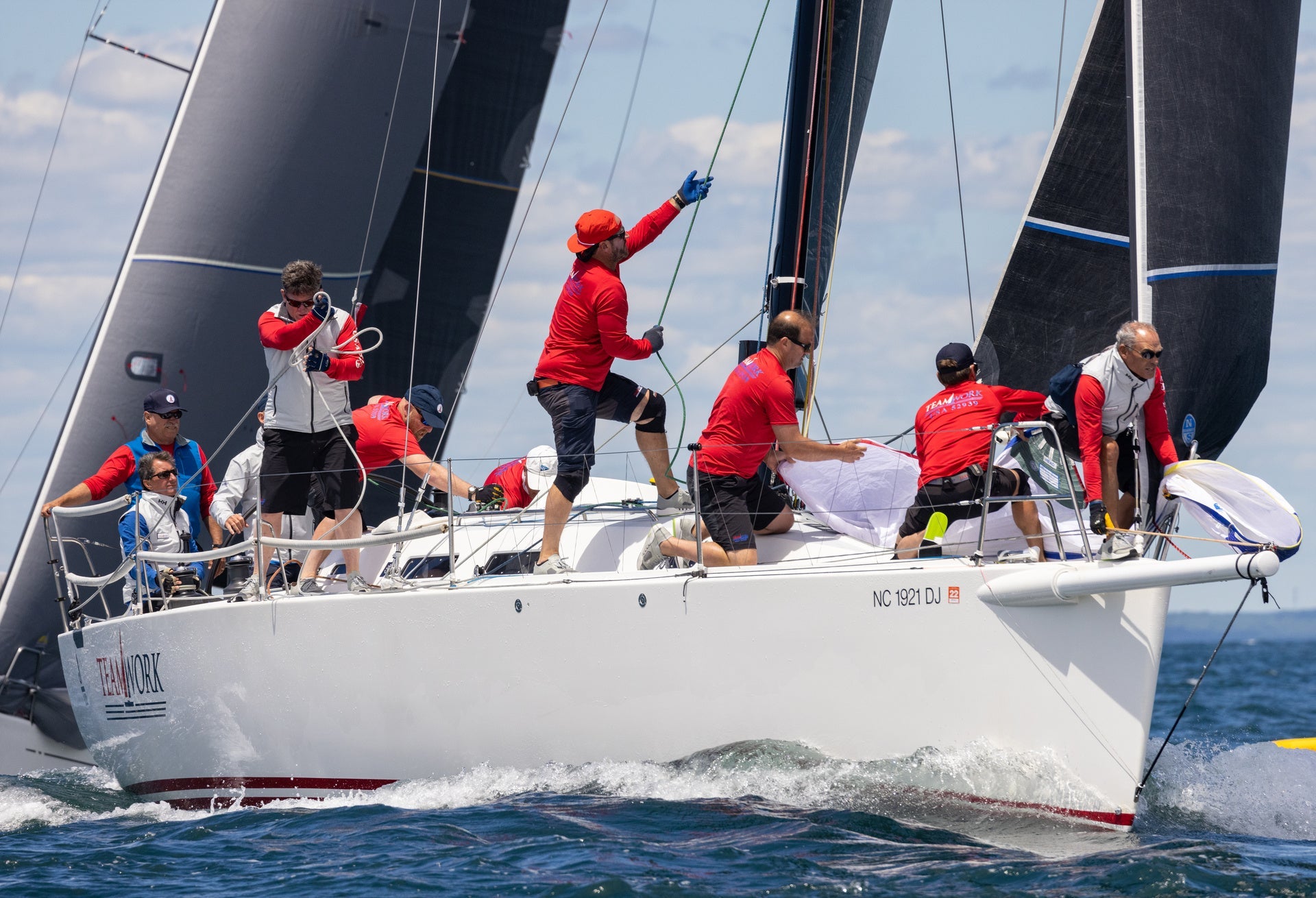
THE DEFINITION OF TEAMWORK
THE DEFINITION OF TEAMWORK
Robin Team’s Teamwork Has it All Figured Out
📸 Stephen R Cloutier
Robin Team, skipper of J/122 Teamwork, finished second in the ORC D Division at Storm Trysail Club Block Island Race Week. Robin says they focused each day on sail selection that would match the day’s forecast and expected courses, but they also tried to stay flexible and remain positive when things didn’t go exactly to plan. “Everyone is always complimenting the others,” he explains. After racing, Robin says they discuss the day’s racing and what they could’ve done better. Though it’s not a formal debrief, they always keep things positive. “We focused on improvement, even though our crew has sailed together for a very long time.” As for the crew work, he says "It’s spectacular. We consistently have the first kite set and drawing, and always carry it further into the downwind gates than almost anyone else. We have confidence in each other that allows us to be aggressive in the corners. Our upwind speed always seems to be very good, especially when the wind is above 15kts. He calls 12kts their 'break point'; below that we have a harder time keeping pace with lighter boats. Above 12, we are in a groove all our own."
What did you focus on going into each day at BIRW?
"We prep the boat and sail selection based on the SI’s and courses expected. We take wind pressure into consideration on sail selection of course, but also plan sails for the unexpected. We brief the crew on what we expect, and talk about any unusual goals for the day."
How did you and the team overcome obstacles (bad results, missed a shift, bad starts?)
"We try to remain positive throughout a race and regatta. It comes from different individuals on the boat, from the bow, all the way back to the “brain trust”. Everyone is always complimenting the others. Also our North Sails expert and tactician, Jonathan Bartlett, is a master at keeping our head in the game and focused on recovery and maximizing our potential for each circumstance."
Each day after racing, do you debrief together on the way in? What are some things you talk about?
"We don’t have a formal debrief as such, but our chatter usually covers the days racing, and what we could do better, and where we may have made mistakes. It is usually very positive, and focused on improvement even though our crew has sailed together for a very long time."
What are some things your team is especially good at? (Whether it be technique, conditions, starting in big fleets)
"Our crew work is spectacular. We consistently have the first kite set and drawing, and always carry it further into the downwind gates than almost anyone else. Again, sailing together for a long time, we have confidence in each other that allows us to be aggressive in the corners. Our upwind speed always seems to be very good, especially when the wind is above 15kts. 12kts is our break point, where below that pressure we have a harder time keeping pace with lighter. Boats, and above 12, we are in a groove all our own."
What sails do you have in your North inventory and can you share a few thoughts on how you work with North Sails?
"Jonathan Bartlett is our North guy, our tactician, and our coach. He is what really makes Teamwork go, and has always helped us reach our potential as Cat 1 sailors. We carry a full North inventory, mainsail, two different # 1’s, #2, #3, staysail, Code Zero and a full quiver of downwind kites, A1,2,3,4 and my favorite, our A6. We also have North Spectra cruising canvas, although we now typically just use this on deliveries. We started with our J/122 14 years ago with 3DL sails, then 3Di ENDURANCE, and now a full 3Di RAW 780 package. We love our North Sails and our Jonathan. Nuff said!!"
📸 Stephen R Cloutier
READ MORE
READ MORE

#NSVICTORYLIST: STORM TRYSAIL CLUB BLOCK ISLAND RACE WEEK
#NSVICTORYLIST: STORM TRYSAIL CLUB BLOCK ISLAND RACE WEEK
10 Class Wins and Three Podium Sweeps for North Sails Clients
Around the Island Race 📸 Block Island Steve
Storm Trysail Club Block Island Race week is always a much anticipated and highly-competitive regatta that attracts a mixed-class entry list from Maine to Annapolis every other year. This year a number of first-timers joined the record-breaking fleet of 158 boats, a positive sign for sailing after so many events in 2020 were cancelled due to Covid restrictions.
For North Sails, this event showcased both our sailing expertise and full-service support. Preparations for the 2021 edition began in early spring with a webinar to help participants prepare for a week of Block Island Sound racing; topics included local knowledge, sail recommendations and race-winning tips and tricks. Service and support continued on the island, where North Sails set up a Certified Service pop-up sail loft at the Block Island Maritime Institute that provided overnight repairs for all regatta participants.
Incognito, winner of Performance Cruising 1 Spin 📸 Stephen R Cloutier
North Sails inventories and experts helped several clients win their division and added 30 new results to the #NSVictoryList. Below are the highlights from a great week of sailing.
Ken Read sailed with Jim Grundy on the Dunning 44 Rigadoon, winner of ORC B.
Jim says that winning Block Island Race Week was a goal established in 2019, after a tough regatta in their previous Harry Dunning-designed 42. “The new 44 was planned to compete at a much higher level, with extensive design support and performance analysis from K&D engineering and North Sails. We chose North to support our design team recognizing their ability to support the entire aero package and design development. Mike Marshall, a brilliant young sail designer, delivered near perfect sails out of the box. Ken Read, who was onboard for our BIRW win, backed up our program with his infinite knowledge and generous on-the-water support. I’ve always recognized preparation and practice are essential components of winning. Our mostly family and amateur team put in the time, and all our effort came together at Block Island.”
Rigadoon, winner of ORC B 📸 Stephen R Cloutier
North Sails expert Tom Castiglione sailed with Jonathan “JR” Rechtschaffer, owner of the J/109 Emoticon*, won the J/109 East Coast Championships as well as the regatta’s One Design Trophy. The secret was the excellent crew work that only comes with a consistent team, JR says—combined with excellent speed and height across the wind range.
“We were lucky to sail with the same team that we had at the Cedar Point One Design Regatta, and we sailed a near perfect regatta as far as crew work was concerned. We have developed an upwind sail and rig tune package with the North team that allowed us to get ourselves out of sticky situations. Steve Kenny’s team Gossip sailed a heck of a regatta and it was a great battle from the very first race. They kept the competition tight and were about a boat length apart for just about all of the Around the Island race.”
📸 BIRW 2021
Bill Clemens, owner of Bolt 37 Coyote, winner of the PHRF Div 1 commented;
“Our Block Island win was a special one. We have never won- placed many times but never won, and we did it with my children, their friends and my close friends of thirty-plus years. No pros! And totally old school, because of course our new instruments weren’t working. The boat was doing what it was supposed to do and the sail development since we started sailing her has proven very fast. This was truly a team family effort from onboard crew to shore crew.”
Coyote, winner of PHRF 1 📸 Stephen R Cloutier
Robin Team, skipper of J/122 Teamwork, finished second in the ORC D Division with North Sails expert Jonathan Bartlett onboard.
Robin says they focused each day on sail selection that would match the forecast and expected courses, but they also tried to stay flexible and remain positive when things didn’t go exactly to plan. “Everyone is always complimenting the others,” he explains. “Our North Sails expert and tactician, Jonathan Bartlett, is a master at keeping our head in the game, focusing on recovery and maximizing our potential for each circumstance.”
Teamwork, second place ORC D 📸 Stephen R Cloutier
FIND A LOFT FULL RESULTS REQUEST A QUOTE
Banjo, winner of Performance Cruising Non-Spin Pursuit 📸 Stephen R Cloutier
Peacemaker, winner of ORC C 📸 Stephen R Cloutier
Ramrod, winner of J/111 One Design 📸 Stephen R Cloutier
READ MORE
READ MORE
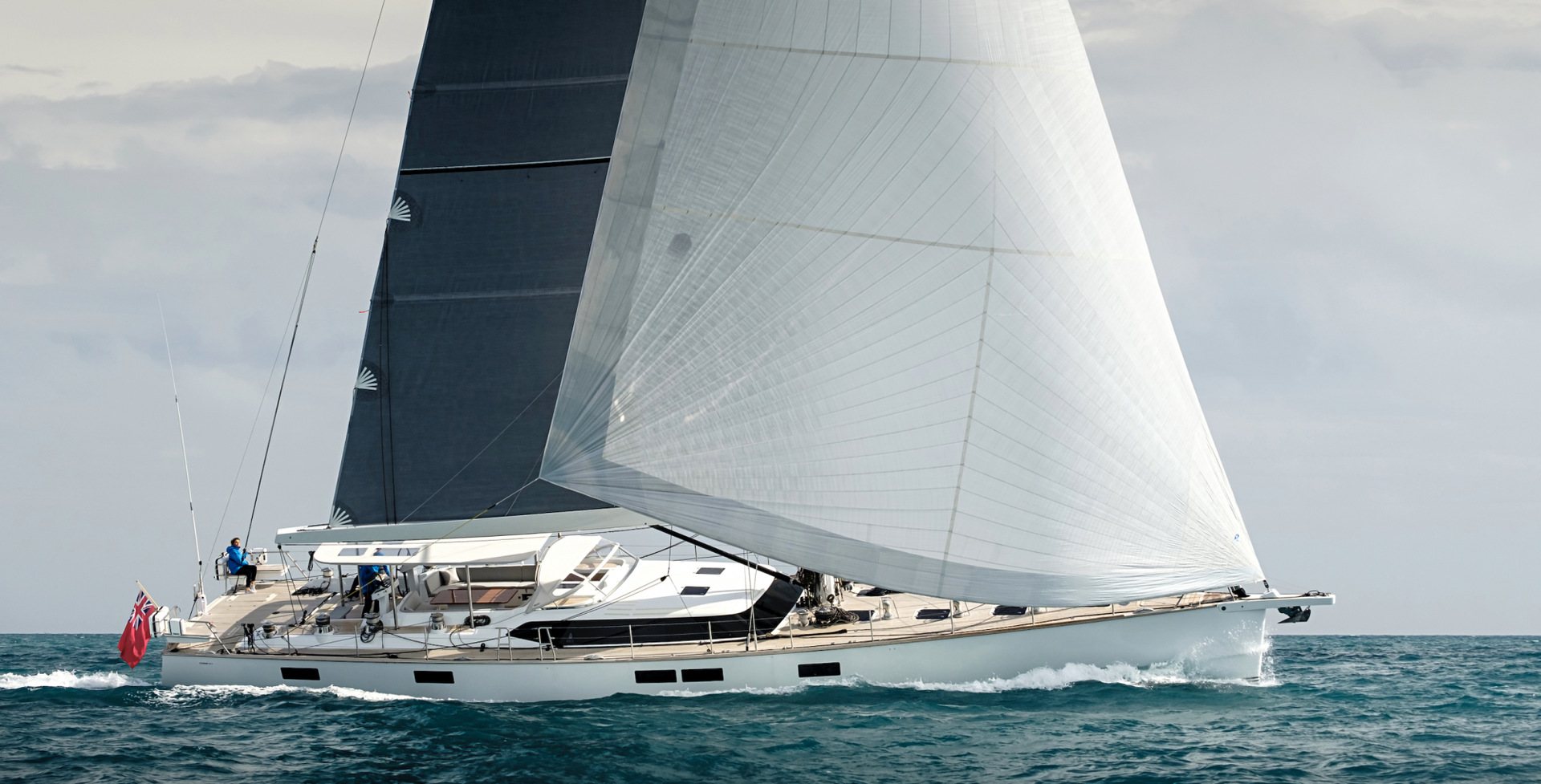
FULL-BATTEN VS. STANDARD CRUISING MAINSAILS
Here’s a summary of the differences to help you understand which sail type is best for you.
READ MORE
READ MORE

RAVENGER CLAIMS WIN AT THE SUPERYACHT CUP PALMA
RAVENGER CLAIMS OVERALL WIN AT THE SUPERYACHT CUP PALMA
Premier Superyacht Sailing in Palma with a Full North-Powered Fleet
📸 Atila Madrona
Superyacht Cup Palma’s 25th Anniversary Regatta has concluded in dramatic fashion with a first-time entrant, 43m Ravenger taking home their class and the overall regatta win. North expert and Palma local Quinny Houry was onboard trimming Ravenger’s newly installed North 3Di inventory.
Finishing behind Ravenger in Class B was Ganesha in second, Baiurdo VI in third, Scorpione of London took fourth and Aquarius rounded out the fleet in 5th.
📸 Atila Madrona
Nilaya won Class A. Crew member Bouwe Bekking stated, “the competition has been really good, and everyone sailed well. Missy is extremely fast upwind, a real weapon, and Shamanna also – we had some excellent racing.” Missy took home second, Shamanna in third and Umiko in fourth.
35m Frers designed Nautor’s Swan Shamanna won the special North Sails ‘Spirit of the Event’ award at the prize-giving in memory of North Sails founder Lowell North. Baiurdo VI was also a special prize winner, having the best race start in the event.
The 25th Anniversary of the @superyachtcuppalma is officially complete. We’ve already blocked the dates on our calendars for next year. Superyacht Cup Palma 2022 will be held from June 22-25.
READ MORE
READ MORE
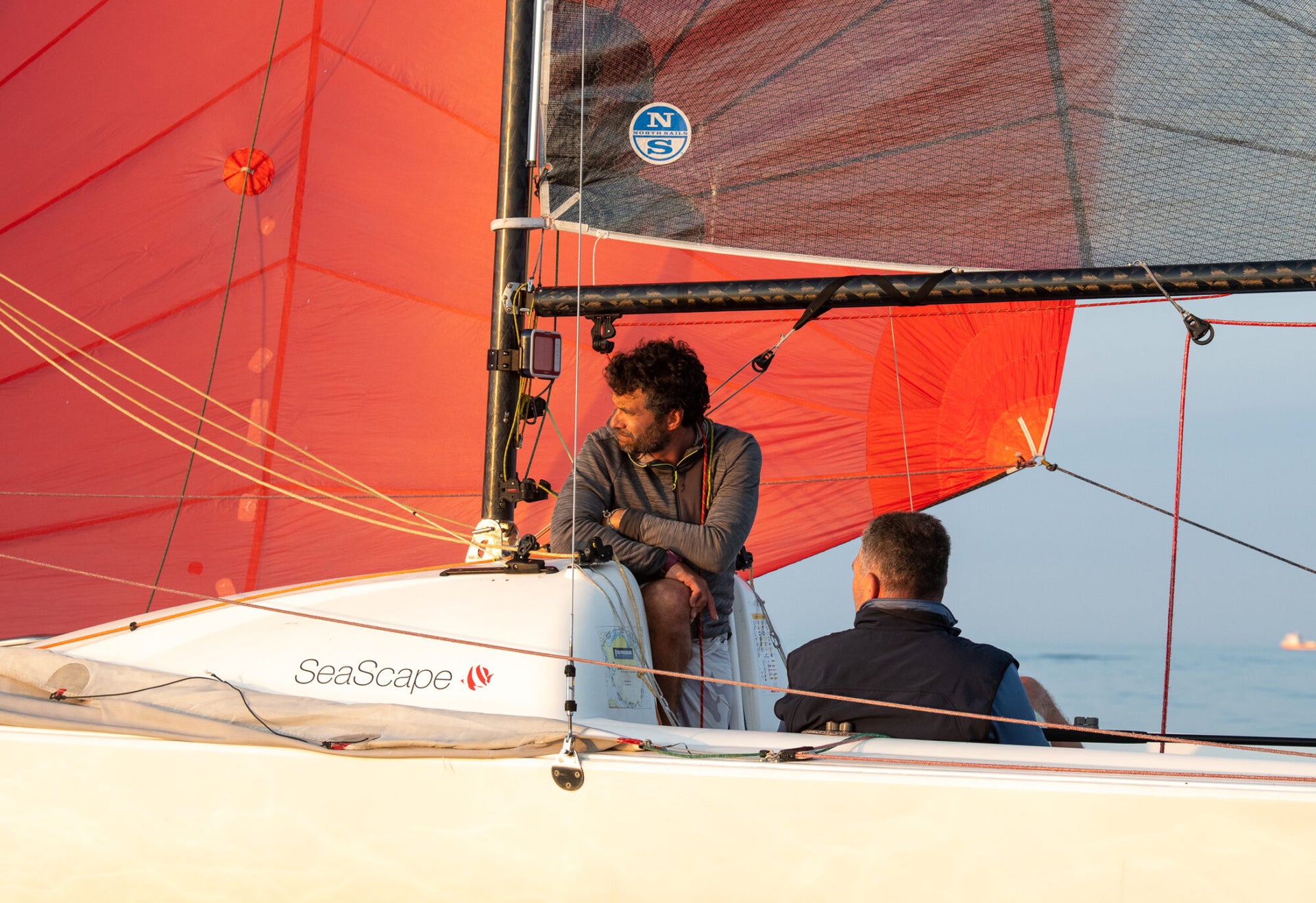
FIRST & SEASCAPE CHALLENGE
FIRST & SEASCAPE CHALLENGE
Race Debrief
I can't explain sunrises on First & Seascape Challenge. When we visit the boats that have just spent the night on the water, the feeling in the air is so delicate that it dissipates into thin air when I try to catch it. The small, speedy RIB has a massive advantage of making it possible to visit more than one set of sailors in the dawn, giving us an exclusive chance to feel the overall atmosphere. We see everyone's tired eyes looking at the support boat with depth you don't get sleeping with a roof over your head and a pillow under. They have changed for a tiny bit of wisdom, which now quietly shines out of them, while they casually tease you with a famous line; „Do you have coffee?“
It has been more than a year without this kind of events, sunsets and sunrises (except for the Silverrudder 2020) - things we mostly took for granted have begun to show their actual value. It was only Friday, a whole week before the race, when I was ready to sit in any given car to take me to Jezera as soon as possible. Full four days later, or what felt like an eternity, I finally got there, only to see that many have had a similar itch. When I ran into Lukas and Philipp, they proudly exclaimed that the two days sailing in the Kornati they already had were so spectacular that the trip has paid off, even if we cancel The Challenge right now. But cancellation was finally not an option.
We did have to postpone it. The original idea of The Challenge was to make the long-distance race, in the Kornati archipelago, in early spring, which will give sailors 'challenging' conditions to sail in, quite some miles, and stretching their comfort zone. However, we live in interesting times, where we often have to adapt. This mid-June edition didn't come with the usual challenges, but some new ones – at the forefront, patience for low, low wind zones and the power of the summer sun.
By the time of the start, on Friday at 11 AM, everyone was fully aware that the race will be a battle of nerves. Nonetheless, at 11:00 sharp first twenty-nine of the 18s started marching through the inner bay of Murter, closely followed by the 24s and 27s. It took only fifteen minutes, and the aquatorium became richer for 44 sailing boats. I know it sounds like a lot of numbers, but just imagine 44 of anything moving harmoniously through some of the nicest places you have ever seen, and you still won't quite get the right picture.
The race itself was a windy road. Soon enough, the wind died out, and sailing skills came secondary to the navigational ones. This year the marks in the race weren't set to close a narrow passage for everyone but had more of an open character, which allowed everyone to choose their fate. All of the teams chose the wrong path, at least once, apart from the 27 Czech Mermaid. While the leaderboard on the tracker was changing rapidly for everyone else, Czech Mermaid seemed to be the only constant in the race, always sailing in front of everyone else, somehow avoiding the frustration others might have felt. Still, when we passed through the fleet at sundown, no one was in a really bad mood.
I dare you to be in a bad mood when sailing in the sunset in the Kornati. The yellow islands with small dark green spots served as a mirror for the light show that was going on in the sky. There wasn't only one epic red-pink side of the view to look at, but 360 degrees of „oh wow“. Still, once the night has fallen completely, and the glorious scenes remained behind, and no wind appeared with sticky moisture in the air, the high spirits have fallen. More than a sunrise, the fleet needed wind. But first came one, then the other.
The second day of the race started with a slow windless part for many but turned for better after the Blitvenica lighthouse in the middle of the day. The wind finally picked up, and the barely moving boats lifted and started flying to the finish ahead. Once again, many of them arrived simultaneously, with the first three 18s – Blue Sardina II, Corna and Lenčina being a minute apart. The winners in the 24s – Franz and Falko - were actually debuting on First SE boats, which didn't stop them from having a spectacular race. The Czech Mermaid won the 27 category by such an advantage that the others decided to pretend they were sailing in a different class. And some came later, but just in time for the ceremony and party we had on the pier.
Official results
It's a funny thing that party. Keep in mind that people who participate in it didn't sleep more than short naps last night, and the organizers had the luxury of stretching that to a couple of hours. But nobody wants to go to sleep.
The next morning I woke up, many hours after the dawn, the usual shore life was already up and running and the stillness of yesterday replaced by plans, obligations and what we tend to call normal life. Still, another Challenge sunrise got locked up in every single person, building a different code, a different look, and something else I can't really explain.
Ana Šutej
READ MORE
READ MORE
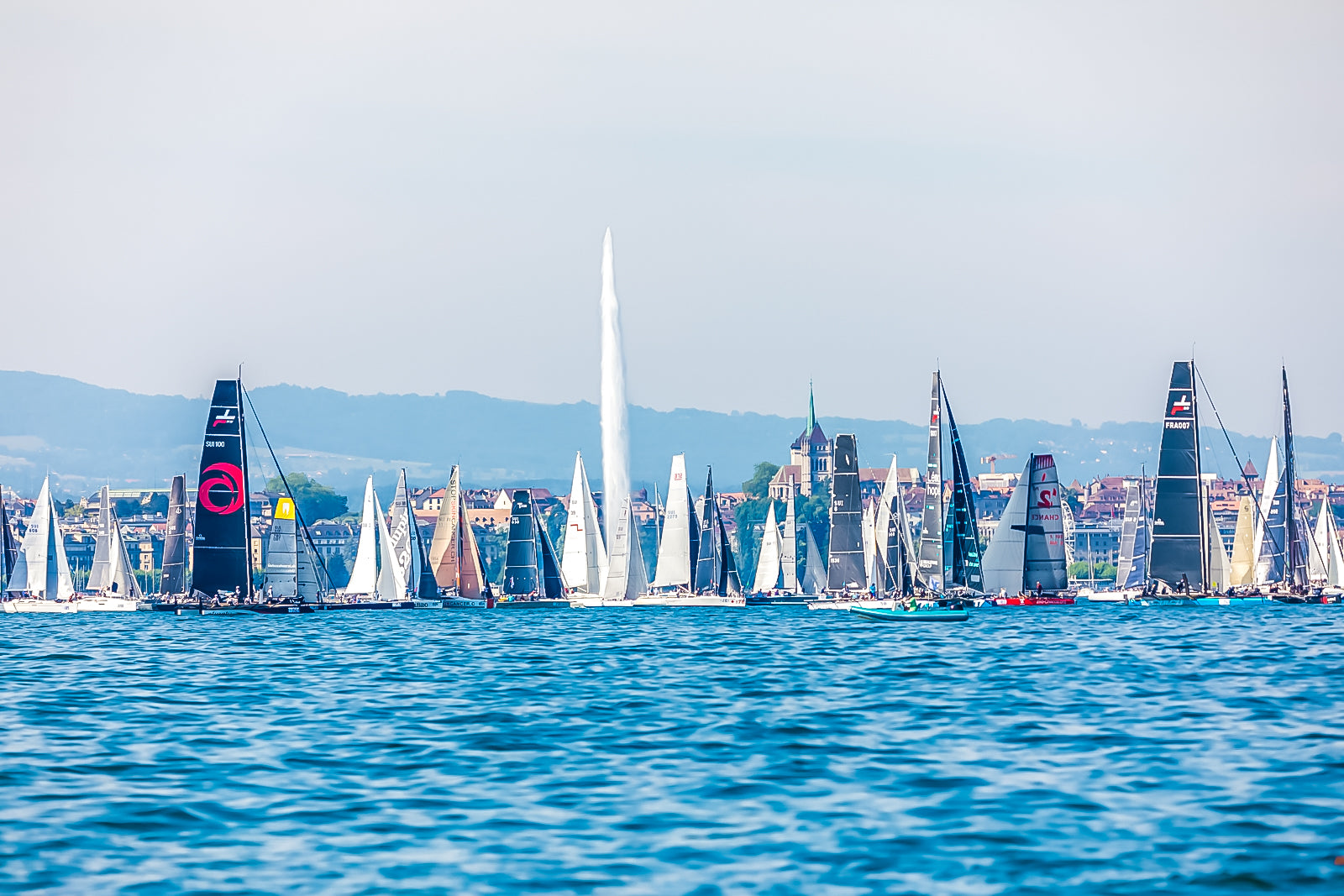
BOL D'OR MIRABAUD : LA PLUS COOL DES RÉGATES EN BASSIN FERME
BOL D'OR MIRABAUD : LA PLUS COOL DES RÉGATES EN BASSIN FERME
La régate annuelle de voile la plus importante et la plus populaire d'Europe
Le Bol d'Or Mirabaud a débuté en 1939 et est aujourd'hui l'un des événements nautiques annuels les plus importants et les plus populaires d'Europe. Le parcours de 66 miles est d'une simplicité déconcertante : départ de la Société Nautique de Genève (SNG), navigation jusqu'à une marque au large du Bouveret, à l'autre bout du lac Léman, puis arrivée sur les quais de la SNG. Mais chaque année, le parcours offre un défi différent, qui incite les marins professionnels et amateurs à revenir.
Les monocoques et les multicoques partent sur des lignes séparées et contournent des marques différentes afin de minimiser les interactions entre les flottes. Le lac est connu pour ses vents légers et son eau plate, mais de temps en temps, de forts coups de vents viennent des Alpes. En 2019, une tempête à mi-parcours a apporté des conditions dignes des océans du Sud avec des rafales à 60 nœuds qui ont soulevé d'énormes vagues, ainsi que de la grêle qui a réduit la visibilité à presque zéro. Les concurrents ont été contraints de s'abriter et de baisser les voiles, mais grâce à des prévisions météo précises, les seuls dommages qui ont été causés étaient matériel.
© Jean Michel BILLY
Pour le Bol d'Or Mirabaud 2021, une nouvelle flotte monotype de TF35 à foils était de la partie pour la première fois. Pierre-Yves Jorand, directeur de North Sails Suisse et directeur d'équipe d'Alinghi, a travaillé avec son équipe et en étroite collaboration avec les concepteurs de ce catamaran innovant pendant plus de deux ans. "Le TF35 est un foiler monotype muni d'un système de contrôle de vol assisté électroniquement pour une meilleure stabilité de l'assiette.
Le TF35 est un descendant direct du Decision 35 du lac Léman et peut décoller avec une brise de 6 nœuds seulement. Ils ont été conçus pour être transportés dans le monde entier, mais l'un des objectifs déclarés est d'être performant sur les courses les plus longues sur les eaux suisses.
Pour y parvenir, les conceptions des voiles et des foils ont été soigneusement coordonnées. "Pour réussir, des échanges constants d'informations et une coordination permanente est essentiels", explique Patrick Mazuay, designer chez North Sails Suisse. "La surface des foils détermine la vitesse de décollage. Si cette surface est trop grande, cela ralentit le bateau à haute vitesse car le foil en forme de "T" reste tout le temps dans l'eau. Cela a une incidence sur les voiles qui étaient adaptées... donc, tout est lié." Le plan de voilure à été réalisé en 3Di 870 RAW et comprend une grand-voile decksweeper, deux focs et un Gennaker 3Di Downwind 600.
© Jean Michel BILLY
Résumé de cette édition 2021
News complète sur le site du Bol d'Or
Victoire au bout du suspense pour le TF35 Ylliam XII Comptoir Immobilier Les 6 premiers sont arrivés en l'espace de 2 minutes : 19 secondes entre le vainqueur et le second, perchés sur leurs foils à plus de 25 noeuds pour leur premier vol de nuit à quelques mètres de la ligne d’arrivée ! Le grand vainqueur, Ylliam XII Comptoir Immobilier de B. Demole, aura eu besoin de 12 heures 49 minutes et 27 secondes pour entendre enfin le coup de canon libérateur. Le TF35 s’est imposé avec 19 secondes d’avance sur Zen Too, barré par Fred Le Peutrec, et 25 secondes d’avance sur Artexplora, barré par Loïck Peyron. Alinghi a franchi la ligne 9 secondes plus tard, Realteam 14 secondes après et Spindrift avec encore 6 secondes de plus… Autant dire que le moment était intense. Avec ces nouveau catamarans TF35, mais aussi d’autres monocoques très spectaculaires, le Bol d’Or Mirabaud est très clairement entrés dans une nouvelle dimension cette année. A noter que les 8 premiers bateaux en temps réel sont équipés quasi exclusivement d'un inventaire North Sails 3Di.
Bol de Vermeil
Le Libera hongrois Raffica s’est imposé après 14 h 07 23’’ de course et a conquis le Bol de Vermeil. Détenteur du Trophée depuis 2016, et vainqueur en 2019, il sera donc à nouveau candidat pour remporter définitivement le Trophée (ce serait son troisième!) l’an prochain. Mais attention, les lignes bougent, la flotte des monocoques évolue à grands pas! Grand animateur de la course, Thomas Jundt et son QFX à foils a longuement mené les débats avant de terminer troisième, derrière le splendide Luthi 1090 Katana de Philippe DeWeck, avec à son bord Michel Vaucher et Patrick Mazuay. Ces trois voiliers bénéficient de performances très différentes et ont joué à l’accordéon, se démarquant à tour de rôle en fonction de l’angle et de la force du vent du moment. Derrière ce beau podium, les leaders habituels de la catégorie des monocoques, menés par le Psaros 40 Notre-Dame Du Lac, puis les Psaros 33 Carpediem cube (L. Munier, G. Bordier) et Pétrel (M. Wettstein), n’ont jamais été en mesure de rivaliser avec le trio de tête mais réalisent une superbe performance ! D’autres prétendants, à l’image du Monofoil Gonet, ont peiné à s’extraire de la masse dans ces conditions très légères. Reste que le paysage évolue et que la suprématie de Raffica, qui demeure un « dinosaure » avec ses douze équipiers en équilibre instable au trapèze, finira bien par être contestée par des voiliers plus modernes. Mentionnons enfin certains exploits individuels, avec le 18 pieds de Cyril Peyrot, 43è au scratch !
Surprise surprise…
La flotte la plus nombreuse de ce Bol d’Or Mirabaud, celle des Surprises (95 inscrits), a été dominée de bout en bout par Miss Tick, skippé par Sarah Jaccaud. Grâce à sa persistance le long de la côte Nord, Miss Tick a creusé une avance impressionnante et contrôlé la régate de bout en bout, même si son avance a fondu dimanche matin. Il s’impose finalement avec 3 petites minutes d’avance sur VELASCO, barré par Arnaud Machado, et quelques secondes de plus sur Forum EPFL 1 (Yann Payen). Et coup de tonnerre chez les Grand Surprise : Carolive too, barré par Fabrice Rigot, a frappé un grand coup dans la catégorie des Grand Surprises en dominant la course de bout en bout et en terminant avec près de trois heures d’avance sur Little Nemo, de Bernard Borter, le grand dominateur de la classe. Blue Moon, barré par Charles André Haenggli, se classe troisième.
Chez les M2
Emineo aura vécu une belle demi-journée de gloire, avec une fin de course difficile et le retour gagnant de ses concurrents, Degroof Petercam Banque Privée, barré par Fred Moura, vainqueur de la classe, quelques secondes devant Swiss Medical Network (Didier Pfister) et deux minutes avant Patrimonium (Yannick Preitner).
© Jean Michel BILLY
READ MORE
READ MORE
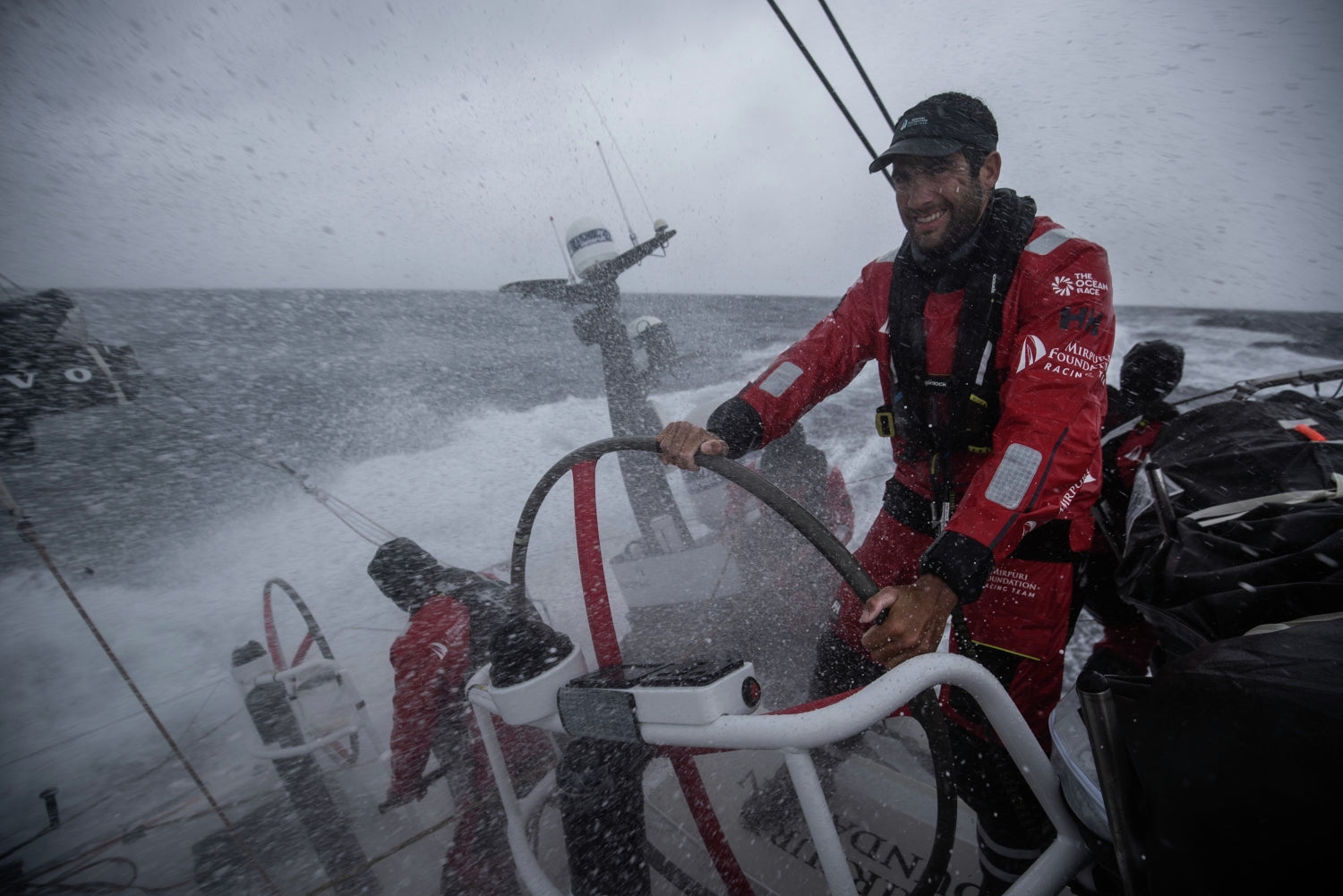
THE OCEAN RACE IS JUST BEGINNING
THE OCEAN RACE IS JUST BEGINNING
This month-long sprint provided a glimpse into the new two-class format, and we can’t wait for the around-the-world race to start in October 2022
📸 Mirpuri Foundation Racing Team / The Ocean Race
It is officially the end of the Ocean Race Europe– a really fun event that I think brought a lot of enthusiasm back after quite a long absence for obvious reasons.
So what did we learn? First of all, racing in the Volvo 65s is still incredibly intense and fun to watch– not to mention really hard. Overall, the teams clearly used this event as a trial-run for crews and strategy. They also started their long-term planning of how they want to put their programs together for The Ocean Race that starts in October 2022. It’s really an amazing opportunity if you think about it because all of these teams had many new faces onboard. This summer’s experience will prove to be invaluable. There’s nothing like learning about yourself and your teammates in tough situations and under racing conditions.
In the 65s, we also learned that new sails are faster than old sails. The A4 was clearly a big hit on all the boats that had them, which was all but one. Race winner, Mirpuri Foundation Sailing Team, was the only team with a new sailing inventory, and of course they practiced a lot before the event started. Congratulations to skipper Yoann Richomme and their entire team; well done on starting to gain some enthusiasm and some momentum for the actual Ocean Race. You can be sure the rest of the fleet will be gunning for you when you meet again.
As for the IMOCAs, that fleet was fascinating to watch. We learned that boats designed to reach and go down wind, offshore, and around big weather systems, may not be the best boats for light air, short-tacking, or light air jibing down coastlines. A few times, you would see the boats get into a situation where they could start to light it up and hit their best best angle, but probably not often enough for their liking. I’m guessing it’s quite frustrating to sail the boats in sprint-sailing conditions because they’re not made for that whatsoever. Nonetheless, hopefully more people took notice in the IMOCA class, and it will help build a new fan-base and possibly attract new entries for their class representation in just over a year.
Finally, the two class fleet is really effective. It’s reminiscent of the Whitbread days when there were the 60s and the Maxis. As they say, every dog will have their day. And in the light air weird conditions, clearly the 65s were a little bit better all around boats. But look out, when the IMOCAs get out in the ocean and get into their ideal conditions, they could be literally going 10 knots faster at certain times. How much fun will that be to watch for all of us fans sitting on the sideline?
Congratulations and thank you to The Ocean Race for putting together The Ocean Race Europe as a prelude to the big event. I know with CoVid-19 restrictions added a layer of logical-complexity, but we all applaud the fact that sailors are getting back out there and that regatta organizers are working hard to get it all done.
📸 Viva Mexico / The Ocean Race
READ MORE
READ MORE
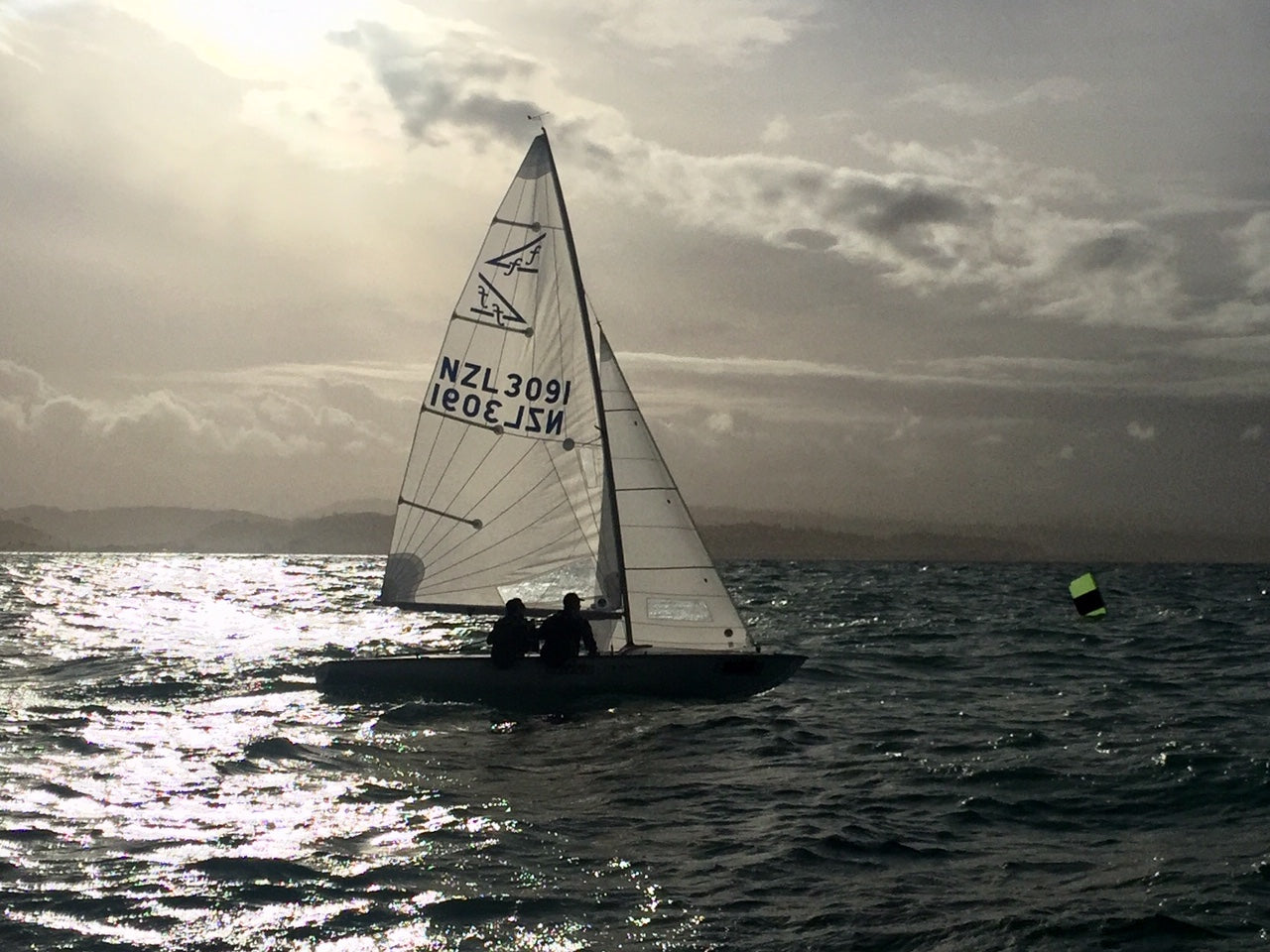
NORTH SAILS FLYING FIFTEEN DESIGNS LEAD THE WAY
NORTH SAILS FLYING FIFTEEN DESIGNS LEAD THE WAY
Triumph at the New Zealand Nationals
North Sails are delighted to see Flying Fifteen duo Hayden Percy and Scott Pedersen win in Napier at the New Zealand Nationals, with their victory made even sweeter as they raced with the FR-3 Mainsail and NGX-3 Genoa.
Conditions were variable throughout the three days of racing, putting the sails and the sailors to the test on the racecourse. This did not stop Percy and Pedersen who stayed at the top of the leaderboard throughout, despite the changeable conditions. Saturday was light, Sunday was a lumpy sea state with 15 knots of wind, and Monday was similar conditions but with the occasional 30-knot gusts sweeping through the fleet.
Commenting on the new designs, Pedersen remarks: “The sails felt nice, set up well, and easy to trim.”
“Percy and Pedersen were right on pace’’, North Sails One Design expert Derek Scott comments. “Even with their older 'silver fleet' boat that is over 30 kilos overweight, they powered out of the starts and kept pace with the brand new boats. Percy and Pedersen used the North Sails Tuning Guide to set up the sails which helped them optimize their sails.’’
Napier, New Zealand is a familiar venue for Flying Fifteen sailors. The great Hawkes Bay has a wide, open sailing area that gets the perfect sea breeze in the summer. With the New Zealand Nationals being later in the season this year due to lockdown, the 2021 New Zealand Nationals saw cold gusty NE breeze, combined with a sharp chop, making the sailing hard work on the bodies but very close racing.
With the Flying Fifteen Worlds in Perth postponed, Percy and Pedersen are now getting back into their Paper Tiger's, working towards the upcoming season. They will get back into the Flying Fifteen for next year's National and Regional Regattas.
READ MORE
READ MORE
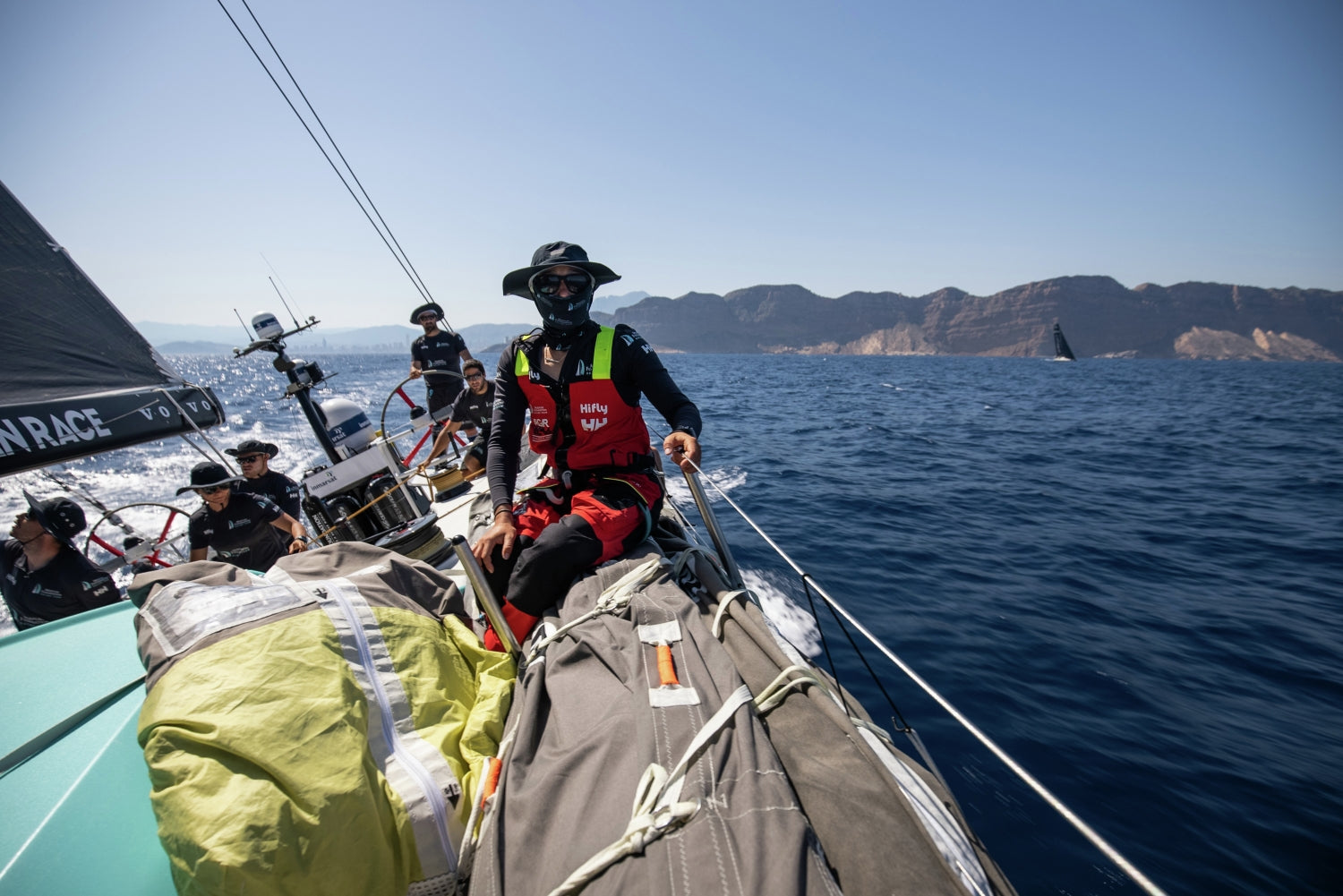
SPRINT SAILING EXPLAINED
Ken Read dives into sprint sailing, and how to best manage what little time you have to the finish line.
📸 Mirpuri Foundation Racing Team / The Ocean Race
First of all, you can really break sailing into three categories: around the buoys or laid marks, sprint sailing, and full blown offshore distance sailing. Around the buoys sailing is everything from your dinghy sailing, weeknight Beer Can racing, TP52 events or America’s Cup. Full blown offshore events are a minimum of three days, in the ocean, mostly away from land. Events like the Ocean Race Europe are classified as “sprint sailing.” But what exactly is sprint sailing and how is it different from the other type of sailing we do?
For a lot of us, it’s a fine line between sprint sailing and offshore sailing. So I’ll classify sprint sailing as typically 1-3 days, around a lot of headlands and other natural features that you wouldn’t find in the middle of the ocean. With sprint sailing you have to manage your time and you have to tweak a crew to really be able to withstand lack of sleep. It’s all about not losing a meter when the opportunity comes and gaining a meter when the opportunity presents itself. In this type of sailing, very often races are won and lost by very small distances.
📸 Sailing Poland / The Ocean Race
I personally think that sprint sailing is as hard or in some ways harder than full blown distance racing. And the reason is simple: You can’t really find your rhythm. You can’t find a good watch pattern and sleep pattern so you can replenish your batteries. In these short races, often you do it with very, very little sleep. And when the sleep that comes, it comes due to true exhaustion. Therefore, as soon as you start to wake from your sleep, you’re panicked that you’ve missed something really important because, frankly, in sprint sailing, those little things are really important.
Building a crew around sprint sailing is probably a little different as well. In our last article here, we talked about the need for fixing things and having a crew who is very adaptable to several different types of boat maintenance or types of jobs on board a boat. Well, in sprint sailing, you really can’t afford to slow down and fix things. So you’re either full bore, 100% or you’re not. Which makes it even more about speed and trimming and navigation than your typical offshore racing.
Finally , sprint sailing is reliant on navigation and often local knowledge; how and when to use the shoreline, how and when to use sea breeze, how and when to get away from shorelines and sea breeze. Local knowledge might affect a race course too, especially around headlands. And then of course, current and how current affects the race course. Because again, you’re going around places where current is probably far more of an opportunity or deterrent than what it would be in the middle of the ocean.
📸 11th Hour Racing Team / The Ocean Race
I personally think it is really hard and that’s why I love it so much. The double handed sailing that I did this past summer on Alchemist was classic sprint sailing, where you really just couldn’t sleep. Not only were you under manned onboard the boat, but the race was going to be short enough that any meter you could gain was a good meter.
For the Ocean Race Europe, my final thought is that quite a few of these teams are using this event as a try out for the main event next year—around the world. This sprint sailing is a bit of a teaser for what an individual sailor or entire team is like on board the boat. With a three day race, you start to get a good feel about what a crew person is going to be like for the long haul, out in the middle of the ocean when the chips are down or when things are good. And it’s a great opportunity for the skippers and team leaders of these programs to get a feel for who is good at what. However, they have to remember that this is still a sprint and that it is a different world once you get out, offshore, in a 20-plus day leg. I guess at the end of the day, a little bit of an interview, no matter how short the time may be on board the boat, is better than nothing.
Linked Out / The Ocean Race
READ MORE
READ MORE
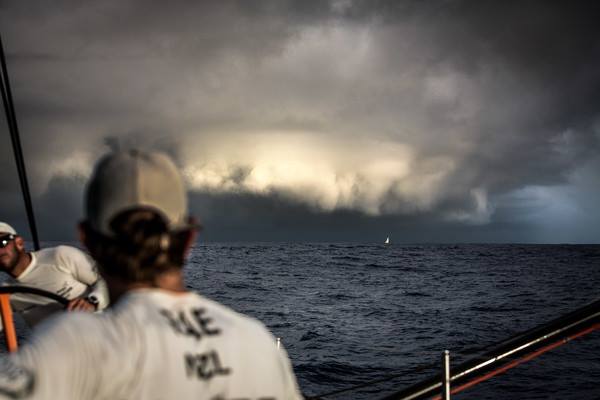
J-CUP WEATHER SIGN UP FORM
J-CUP WEATHER SIGN UP FORM
Powered by North Sails & Sailing-Weather
North Sails are delighted to be working with professional meteorologist Chris Tibbs of Sailing-Weather to offer all competitors of the Landsail Tyres J-Cup daily weather forecasts throughout the regatta.
The forecast will be delivered to your chosen email address between 07:30 - 08:00 each morning before racing. Don't miss out and sign up below before 17:00 on Wednesday, 23rd June:
READ MORE
READ MORE
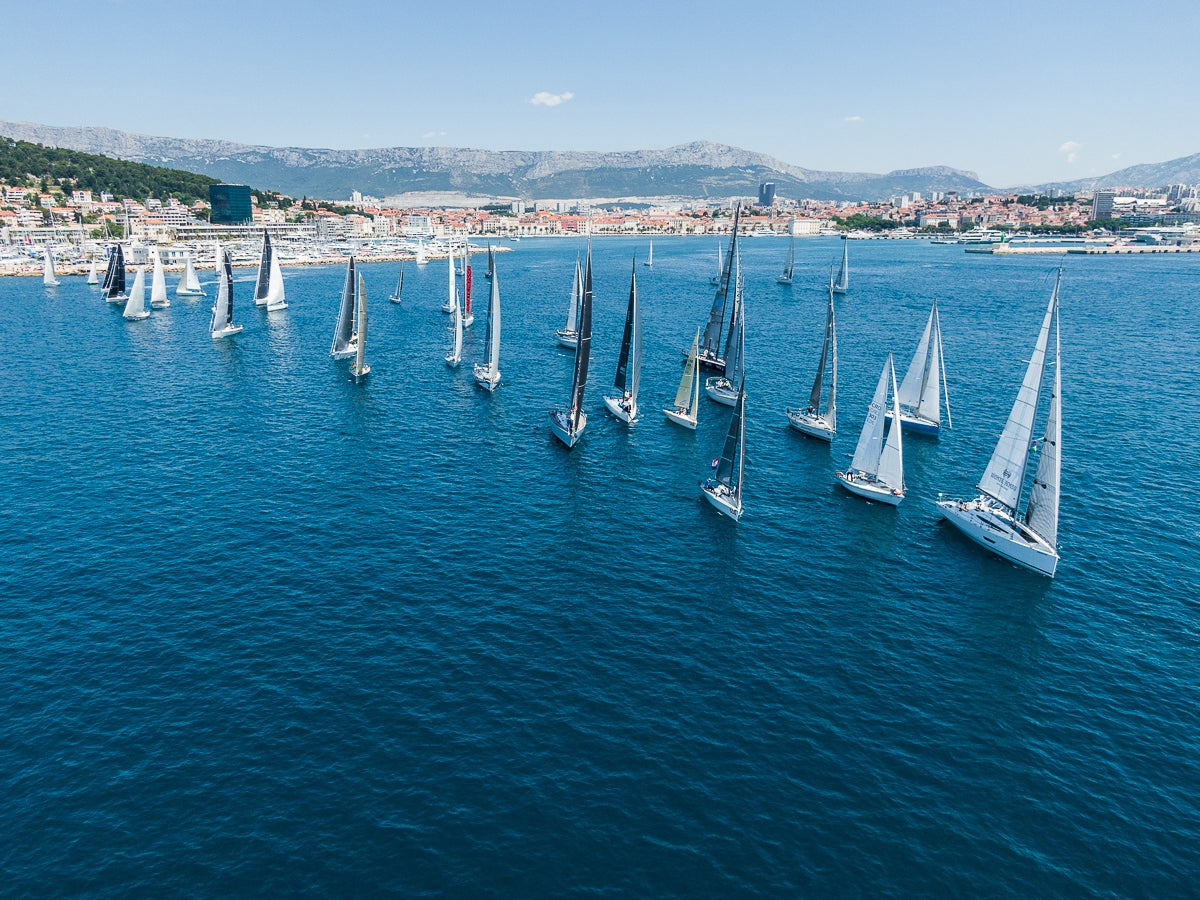
NORTH SAILS KLIJENTI NAJZADOVOLJNIJI NA OVOGODIŠNJEM SUŠCU 100X2
North Sails klijenti najzadovoljniji na ovogodišnjem Sušcu 100x2
📸 regate.com.hr
Čak 43 jedrilice bile su na startu ovogodišnjeg Sušca 100x2, regate koja se na ruti od 100 NM jedri u dva člana posade. Ruta je bila uobičajena, pravila također, sustav razvrstanja kao i svih godina ranije, većinom posade koje su redoviti sudionici, a ono što je bilo malo neuobičajeno je ogroman broj jedrilica koje su regatu završile na 13. mjestu.
Naravno, razlog je DNF u rubrici bodova, a razlog tom bodovanju lako je razumljiv s obzirom na vremenske uvjete koji su vladali na regatnom polju.
Matematički modeli koji su se generirali vremenske prognoze za period od 4. do 6. lipnja uglavnom su bili složni u prognoziranju vrlo laganih vjetrova, pa čak i bonaca koje su na kraju bile kobne za 31 jedrilicu. Čisto usporedbe radi spomenimo lanjsko izdanje regate kad su se na startu okupile rekordne 54 posade, a do cilja nije stiglo samo njih 8.
Start regate signaliziran je u petak u podne, a svi koji su dojedrili do cilja stigli su u subotu i to do oko 3 i pol poslijepodne. Isključivo je bila riječ o najlaganijim i najsportskije pripremljenim jedrilicama opremljenim s odgovarajućim laganim jedriljem. Jedini koji među njima može proći i kao jedrilica koja osigurava više nego ugodno i lagodno krstarenje za kompletnu posadu bio je Swan 45 - Damaco koji je ujedno i prvi koji je ušao u cilj u realnom vremenu. Od ostalih jedino Gringo 3 i Dubrovnik imaju još i kakve takve ležajeve, dok je preostala devetorka u kategoriji asketskih isključivo jedrenju namijenjenih bolida. A i jedan mali kuriozitet po jednom od kroničara Sušca... Damaco je prva jedrilica koja je u 26 godina regate pobijedila, a da ima tikovu palubu. Možda ovaj podatak i nije točan, ali u svakom slučaju je vrlo zanimljiv i pokazuje da je tim veći uspjeh posade Berislav Vranić i Hrvoje Petrović na ovoj vrlo zahtjevnoj regati.
📸 regate.com.hr
Znam da smo 16 puta mijenjali jedra. Gore - dolje su išla dva driftera, dva genakera, a dignuli smo čak i jedan spinaker, plus jedan flok.
Najzanimljivije je bilo pratiti što drugi rade. Na osnovu toga često smo se ravnali, pozicionirali brod i dizali jedra.
Moram reći nešto i o konkurenciji... Ovog puta Dubrovnik nije imao sreće ovog puta. Oni su htjeli proći kroz Ždrelac, ali tamo su ostali bez vjetra, pa su se morali vraćati natrag. Drugi put su došli do Sušca, okrenuli ga i stali u bonaci. Mi smo to vidjeli i napravili veliki luk oko njih.
Zatim su se ponovno vraćali, ali nisu nas više mogli sustići. Imaju znanje, dobar im je brod, ali ovog puta jednostavno nisu imali sreće.
I Gringo 3 je bio blizu nas do Sušca. Uvijek iza, ali blizu. Na Sušcu smo se odvojili i oni nakon toga više nisu niti jednom bili blizu.
Najteže mi je bilo to što kad smo stigli na dvije milje od cilja. Tek onda se prvi brod u pratnji pojavio u Splitskim vratima, a mi smo stajali u bonaci. Morali smo čekati dok cijela flota nije stigla i u cilj uspijevamo ući tek s ono malo maestrala što nam je puhnulo.
Inače vjerujem da smo imali neprekidno vjetar do kraja da bismo uspjeli pobijediti regatu i u korigiranom vremenu.
Brod stvarno ide prekrasno!
Berislav Vranić, Damaco
Damacu je do cilja trebalo 25:21:44, a nakon korekcije po Sušac openu vrijeme jedrenja im je bilo 22:38:40 i nakon usporedbe s ostalim koji su stigli do cilja to je bio 5. rezultat regate.
Drugi u cilju u realnom vremenu bili su Makarani na Otto e mezzo. Lani su bili osmi i u realnom vremenu i nakon korekcije, tako da im je ovogodišnje izdanje sigurno mnogo draže. Uvjeti su definitivno bili takvi da su Antonio i Mario Vuleta možda očekivali i bolji rezultat, ali moraju biti zadovoljni što su ove godine uspjeli napredovati i po pitanju korekcije, jer ih je korekcija dovela na drugo mjesto. Koliko su im uvjeti išli na ruku najbolje pokazuje to da su na samom startu, dok je puhalo 7-8 čvorova, morali na svojoj jedrilici staviti prvi krat na glavno jedro! Kasnije je jedro u potpunosti išlo gore, ali sigurno su imali najbolji omjer površine jedrilja i dobivene snage s obzirom na kretanje zračnih masa.
Treća jedrilica koja je u realnom vremenu ušla u cilj bila je Adriatica. Ovaj Farr 280, na kojem su jedrili Andrej Šooš Maceljski i Luka Jerčić bio je u prvoj dionici regate na samom vrhu, ali u dijelu između Splitskih vrata i Hvara, kad je bio najvjetrovitiji dio regate, prestižu ih veće jedrilice. Međutim, pametnim jedrenjem uspijevaju držati priključak, a kasnije kao što smo sad vidjeli i vratiti se u sami vrh. Na kraju je matematika pokazala da ipak nisu bili dovoljno brzi za pobjedu, a korekcija im je donijela 4. mjesto. U realnom vremenu su kasnili za Damacom 26 minuta i 11 sekundi, a po korekciji su bili brži od njega skoro sat i pol.
Redoslijed ostalih u realnom vremenu bio je sljedeći: Dubrovnik, Magnum x3, Gringo 3, Lucky, Mataran 32, Arhimed, Strilica, Yikes i Pinocchio. A trebali napominjati koliko je zanimljivo bilo nadmetanje ovih devet jedrilica, ako se zna da su nakon 100 nautičkih milja sve ušle u cilj u intervalu od pola sata! Koja su točno vremena bila u pitanju možete pronaći u službenim rezultatima po Sušac openu.
Pretposljednji koji su dojedrili u Splitsku luku, Tonko i David Kuzmanić na kraju su i službeni pobjednici regate.
📸 regate.com.hr
Iako su kasnili za Oto e mezzo skoro dva sata u realnom vremenu, uspijevaju ga prestići za korigiranih minutu i 12 sekundi. Što su točno radili da bi stigli do ovog izvrsnog rezultata ispričao nam je Tonko Kuzmanić:
Start je bio dosta dobar, jedino što je vjetar padao kako smo se približavali bovi od orce, a nakon što smo je okrenuli skroz je zabonacalo.
Tu smo upali u kurenat s kojim smo išli od boveod orce do bove od krme i tu smo mi i Mate Arapov (Strilica) najviše profitirali. Tada smo prošli sve teže jedrilice koje su bile ispred i nakon okreta bove smo odmah išli prema Vratima. Dobro, ne baš direktno jer je smjer vjetra bio od njih i vozili smo lijevo.
Mi smo prvi virali, a Mate je produžio dalje. Tutta Trieste 2 i još neke od jedrilica koje su okrenule krmu ispred nas otišle su put Čiova i tamo upadaju u bonacu.
Taj vjetar koji nam je na početku puhao iz Vrata okretao je kasnije za suncem i mi smo najkraćim putem jedrili prema Vratima. Najviše su profitirali ovi što su bili "šoto", došao nam je prije nego ovima na Čiovu, tako da je tu najviše profitirao Mate. Mi smo malo prije njega prebacili se prema desno i tu se stvorila razlika između nas dvoje. Taj dio regate jedrili smo s flokom jer nemamo drifter za razliku od ostalih koji su ga mogli koristiti.
Kad je to zapuhalo veći brodovi su nas stizali u orcu. Tada je iz Vrata puhalo između 10 i 15 čvorova i svi se prebacuju na flokove.
Većina se dala pod Brač. Neki su otišli baš ispod njega, dok je drugi dio bio malo više prema Šolti. Mate je npr. od punte Brača u jednom repiketu otišao skroz pod Šoltu. A mi smo po nekom svom, lijevom, vjetru vozili uz Brač... sredina lijevo.
Na kraju su nam se putevi spojili tako da smo došli na 50 metara jedni od drugih.
Tada u Vratima skroz pada vjetar. Mate diže drifter, a mi i dalje s flokom, a nakon što je vjetar još više okrenuo prema maestralu mi dižemo genaker. Ostali su se također prebacili s flokova na driftere i genakere.
Kako smo digli genaker prije Mate malo se odvajamo od njega u toj dionici do punte Pelegrina. On je morao prvo spustiti drifter prije dizanja genakera, jer nema dva gindaca. Tu smo ga ostavili oko 300 metara i takva razlika ostaje do Pelegrina.
Oko milju pred Pelegrinom vidimo da ne možemo izorcati s genakerom, pa se vraćamo na flok, a isti problem su imali i ostali. Da je bio maestral vjerojatno bi mogli to sve odjedriti s genakerom. Ovo je bilo nešto između maestrala i lebića.
Kad smo okrenuli Pelegrin ponovno dižemo genaker i idemo pod Paklenjake. Mate i neki drugi rade jednu pojalabandu i idu pod Hvar, međutim ostali su tu dosta, a mi odlazimo.
Sad smo na raspolaganju imali dvije opcije... ići na Ždrelac ili na Pokonji dol. Izabrali smo Ždrelac iako smo znali da nas s druge strane čeka totalna bonaca. Logika je bila da ćemo brzo izaći na otvoreno i imat ćemo najkraći put do Sušca.
Mate je vidio da smo tu stali i produžio je dale prema Pokonjem dolu.
Kad smo izašli iz Ždrelca vidjeli smo da je Damaco skroz daleko, poviše Visa, bio je naprijed, ali je stajao... u stvari, svi su stajali. Dolje ispod bili su Dubrovnik, Magnum, Mate i još neki.
Konkretno je Mate izašao oko 2 milje ispod nas i oko 200 metara ispred.
Nakon nekih sat vremena stiže par čvorova nekog vjetra za kojeg ne znam koje bi mu ime dao :) to je sve bilo nekakvo mreškanje. Inače u Ždrelcu skidamo genaker i vraćamo flok, a kroz njega prolazimo zahvaljujući kurentu jer nije bilo ništa vjetra.
Kad je to zapuhalo išli s flokom ravno na Sušac.
Prvo je vjetar počeo puniti onima što su bili ispod, put Korčule. Tek nakon njih mi ulazimo u taj vjetar, nakon što su nas oni polako stizali.
Tu Mate vozi s drifterom, mi smo s flokom, imamo manju brzinu i do mraka nas je sustigao i prošao od ispod.
Po mraku je bila bar teška bonaca. Povremeno su dolazili neki refulčići od burina... na nekih 5-6 milja od Sušca. Puhalo je i s drugih strana, tako da se genaker dizao, spuštao i on nam je tu baš dosta pobjegao zbog tog driftera.
Sušac smo obišli na jedvite jade, na kurenat... oko tri i pol ujutro.
Sad već lagano sviće. Mi smo na čelu druge grupe. Prva grupa je vozila desno, prema Korčuli i penjala se prema Hvaru po nekom burinu. Nama je kasnije isto došao taj vjetar, ali mi smo sa Sušca vozili ravno prema Visu. I kako je taj vjetar ponovno okretao za suncem vrtilo je i nas i vodilo ravno na Vodnjak. Tako da od Sušca praktički nismo ni viravali, osim kad smo bili treso od Visa dok nam nije došao kut za genaker.
S genakerom smo prošli Vodnjake... tu smo napravili par pojalabandi da možemo proći, jer smo bili malo poviše.
Mate je prošao kroz Ždrelac i nastavio jedriti kroz kanal. Tamo im je baš uz Hvar bio jači vjetar, a mi smo ga kasnije dobivali.
Kad smo prošli Vodnjak vidjeli smo da su brodovi u Hvarskom kanalu usporili, da su upali u bonacu, a vjetar koji je puhao je sad bio samo s vanjske strane. Neki su se dali na istok, a Mate je s tim vjetrom išao put Šolte.
Mi se također nismo htjeli davati mnogo istočno, već smo vozili više lijepo, po rubu, može se reći za Matom. I tu smo uhvatili dosta brodova.
Kad smo bili negdje na pola kanala prvi brodovi su došli do Vrata, a Mate ih je zaobilazio s lijeva s tim svojim vjetrom.
Kako smo vozili s genakerom prema Šolti, tako nam je vjetar dolazio sve više od maestrala... to je već oko ure poslijepodne i tada smo od Mate oko 2.5 - 3 milje.
Ovi što su bili ispred nas polako ulaze kroz Vrata i više ih ne vidimo, a u toj zoni puše baš iz Vrata. Mate je tu vozio s genakerom do granice gdje ima vjetra, baš uz samu Šoltu i onda je napravio jednu pojalabandu nakon koje odlazi skroz na puntu Brača.
Mi smo isto tako odvozili jer je vjetar tako diktirao. Da smo išli ravno put Čiova ostali bi u bonaci.
I tako smo tražili priliku kad ćemo se i mi ubaciti u reful. Bilo je očigledno da će vjetar doći sa zapada, samo često se desi da tu preskoči. Mate je tu očekivao maestral i spuštao se šoto od kursa za nekih milju i pol - dvije... ako se gleda linija punte Brača i Splita.
Mi smo to vidjeli i vidjeli smo da svi brodovi tu stoje. U jednom trenu smo spustili genaker i počeli se penjati da se uključimo u taj vjetar sa zapada. i u roku od par minuta smo zaklapali, skroz smo stali, ali uspjeli smo prvi stići u taj vjetar i nakon par minuta ponovno dignuti genaker i zajedriti prema Splitu.
Za to vrijeme ostali brodovi ispod nas, zajedno s Matom koji je bio najistočniji, još su klapali nekih desetak minuta.
Mi smo znači vozili s genakerom put Splita, a on se s drifterom penjao put gore ne bi li uhvati ovaj naš vjetar. Kad je konačno stigao do njega isto je digao genaker, a kako je bio dosta ispred i šoto, uspio je u cilj ući ispred nas za 150 - 200 metara.
Inače nije bilo spavanja jer toliko je lagano puhalo da ako ne bi iskoristili to što je puhalo ne bi stigli do cilja. Tako da ako jedan od nas dva ode šoto i ne stisne brod kad je reful brod bi išao 3.5, a trebao bi ići 5 čvorova. Ono, milja, milja i pol je razlike ako netko krivo sjedne ili legne! Tako da smo non stop radili, prebacivali se da budemo u optimalnom položaju za brzinu broda. Ono, sve izgleda da ne puše, ali ako ne iskoristiš sve te momente ostaješ iza.
Tonko Kuzmanić, Yikes
Iz ovog iscrpnog opisa s Melgesa 24 - Yikes, vidi se da je stvarno trebalo biti u regati koncentriran svaku minutu. S obzirom na prevladavajuće stanje bonace sve je bilo mnogo napornije, jer kao što je Tonko ispričao postavljanje jedrilice u optimalni balans nije ostavljalo prostor za traženje mjesta gdje se može bar malo odmoriti, a o skrivanju od sunca ne treba ništa posebno dodavati. Upravo zbog takvih karakteristika malenih i laganih jedrilica u kojima pravilan položaj posade može puno pomoći, a i pogrešni položaj odmoći, u cilj su uglavnom i stigle jedrilice u kojima je posada mogla utjecati na jedrenje svojih bolida na takav način.
Potvrda o svemu napisanom dolazi s palube jedrilice Adriatica. O jedrenju na njoj popričali smo s Adrejem Šooš Maceljskim.
📸 regate.com.hr
U zonu starta, ispred Galebova, stigli smo sat pred start. Najviše zbog našeg vanjskog motora za kojeg trebamo odvojiti nešto vremena za spremanje, ali i da ispitamo zonu starta da vidimo gdje bi moglo biti najviše vjetra.
S obzirom na veličinu našeg broda i veličinu ostalih, iako je pin bio malo favoriziran i bilo je potrebno manje manovri do bove od orce ako se starta s njega, odlučili smo da nećemo ići na njega jer smo pretpostavili da će većina velikih brodova pokušat startati na njemu. Odluku nam je olakšalo i to što smo primijetili da je stalno vjetar bio jači za oko jedan čvor s desne strane. Stalno je puhalo između 7 i 8 čvorova.
Tu smo također pažljivo pratili naše direktne konkurente, Otto e mezzo i Arhimeda.
Startat smo odlučili uz sam desni kraj linije i to s flokom. Tada je još uvijek bilo dovoljno vjetra za normalno jedriti s njim, ali kasnije kad je vjetar pao na oko 4 čvora osjetilo se da nam je jarbol manji od ostalih, kao i snaga koju smo mogli dobiti iz podignutih jedara.
Startali smo među prvima. Mataran je tu bio nešto brži od nas, ali i ispod nas i pomalo se dizao, ali kako je vjetar slabio nije uspio to držati već je počeo otpadati, dok smo se mi još uvijek dobro držali.
Ubrzo smo primijetili da vjetar ispred nas značajno pada, pogotovo s lijeve strane i tada se odlučujemo za viru. To je ispalo super jer smo dobili i povoljni dric koji nas je i dodatno podigao. Tako smo jedrili dok nismo došli blizu laylinea. Tad smo ponovno virali i vozili na bovu do koje mislim da smo stigli kao treći brod.
Genaker smo pripremili za dizanje na lijevoj strani, ali desio nam se mali problem. U trenutku dizanja genaker zapinje za križ jer je vjetar sad već značajno pao, ali brzo smo to riješili. Zbog toga smo ostali najdonji brod, svi koji su okrenuli orcu su odmah pojalabandali, a mi smo zbog toga otišli još oko 50 metara prema Sustipanu. Ali na kraju se ispostavilo da smo tu isto imali dosta dobar vjetar, a i dobru poziciju u odnosu na ostale.
Uskoro vjetar pada na interval između nula i jedan čvor, pretežno nula. Svi smo plutali...
Ja i Luka skidamo genaker jer smo vidjeli da nema šanse da se napuše, a mijenjamo ga s drifterom. Inače, za Sušac smo pripremili J0, drifter, A0, A2, flok i glavno. Kad pogledam unatrag to nam je bilo dosta dobar izbor, a jedini problem je bio što smo tri roll jedra imali na jednoj muri. To je dosta komplicirano, jer između svake izmjene moramo ići na flok.
Na kraju smo od svih jedara koristili isključivo flok, drifter i A0.
Uglavnom, uspijevamo uhvatiti par driceva do bove od krme i okrećemo ju je kao drugi, iza Damaca.
Nakon okreta Damaco bira stranu Čiova, a mi smo primijetili da se na jugoistoku formira naizgled bolji vjetar i da bi duže mogli biti u njemu, pa smo nakon bove produžili u tom smjeru oko 100 - 150 metara kad radimo viru i jedrimo ravno prema Vratima.
Kurs koji smo držali s drifterom bio je prema Splitskoj, a kako smo se približavali Vratima tako nas je pomalo dizalo. Tada vjetar počinje i jačati i moramo se prebaciti na flok, a kad smo stigli u zonu Vrata bilo ga je i oko 15 čvorova.
S obzirom na veličinu polja tu više nismo mogli držati vodeću poziciju i prolazi nas Dubrovnik koji je prvi prošao kroz Vrata. Polako se počinju šuljati i Mataran, Gringo, Lucky...
Mi smo tu napravili dvije vire koje su bile baš u pravim trenucima. S prvom smo išli prema Mini, a nakon druge upadamo u dric koji nas je i malo podizao i jedrimo ravno prema Livki. Uglavnom iz Vrata mislim da smo izašli kao 3. ili 4. brod.
Van Vrata je bilo dosta vjetra, a kurs nekakve laške orce. Veći brodovi nas polako hvataju, ali taj vjetar vrlo brzo pada. Prvo je pao na pola, a ubrzo na samo 3-4 čvora.
Kad smo vidjeli što se dešava hitno prelazimo na drifter i s drifterom uspijevamo držati smjer do punte Pelegrina. Tad ulazimo u kanal između Hvara i Paklenjaka i repiketajemo.
Tada smo se čuli i s našim glavnim savjetnikom, kraljem bonaca - Tončem Antunovićem. Vidjeli smo da je vani apsolutna nula i bojali smo se ići previsoko, premda su prognoze davale mogućnosti burina, pa čak i laganog južina predvečer. Dosta konfuzna je bila prognoza, ali nadali smo se da ćemo poslije Paklenjaka ići s maestralom koji će se kasnije ukrmiti i prebaciti u tramuntanicu koliko god da je ona slaba. Zato smo odlučili biti najdonji brod i gađamo Pokonji dol.
U jednom trenutku prešao nas je Otto e mezzo s ogromnim genakerom, a za njim i Dubrovnik... Onda smo vidjeli da je Dubrovnik pokušao ići kroz Ždrelac, ali ga je kurenat stalno vraćao, pa se na kraju okreće i ide za nama, a Gringo je vozio na nekih 20 metara od nas. Mi smo nastavili repiketavat uz sam Hvar jer je uz njega još uvijek bilo nešto vjetra, dok je uz Paklenjake sve umrlo.
Iza Pokonjeg dola bilo je sve bijelo... SVi brodovi koje smo vidjeli da su prošli kroz Ždrelac i Vodnjake su doslovno stajali.
Mi smo tada vidjeli da su uz Hvar još bili neki refuli koji su imali tendenciju da se spoje u nekakav vjetar s te strane. Kako smo željeli što duže ostati u vjetru onda smo napravili još 2-3 repiketa i produžili uz Hvar i otišli još niže. Tu nas je vodilo i iskustvo s prošla dva Sušca kad smo išli direktno na njega, pa nam se to obilo od glavu, pa smo odlučili ove godine ići što niže prema Vela Luci i kasnije s tim umirućim vjetrom se ponovno dizati.
Ostali nisu pojalabandali kad i mi, već kasnije i to je bilo dovoljno da ih sviju prođemo. U stvari osim Dubrovnika kojeg nismo vidjeli gdje je i nismo znali u kojoj je on poziciji, kao i Luckyja koji je bio negdje skroz daleko prema Italiji.
Tad smo prvi put dignuli A0. Jedro se pokazalo kao izvrstan plitki roll genaker koji omogućava da se bez nekog pretjeranog opterećenja i karinavanja da se vozi između 95 i 110° stvarnog vjetra. Mislim da se pokazao kao najbolje "Oružje" koje smo imali u ovoj regati. Ponijeli smo ga umjesto A1 i s njim smo se spuštali ispod Sušca, jer se stvarno dobro nosi s manjkom vjetra, a kako smo dobili informaciju od ljudi koji su pratili regatu u tim trenucima smo bili i najbrži brod na regati.
Kad smo vidjeli da smo najniži brod i da nema više smisla na silu pojavati počeli smo se dizati prema Sušcu.
Tu našu poziciju su kao dobru prepoznali i drugi, pa su se u jednom trenutku Gringo i Damaco spustili i ispod nas, a također i Mataran koji nam je bio u šiji.
Do Sušca prvi stiže Dubrovnik i bio je stotinjak metara ispred nas, a s Lucky-jem nam se križaju putevi nakon što je stigao skroz s druge strane. Imali smo križanje s njima doslovno ispred punte Sušca koja gleda prema Vela Luci.
S desne strane stigli su i Mataran i Magnum i bili na toj punti, a mi smo nastojali ostati što više vani jer smo se bojali kurenta, a i iskustvo ranijih izdanja regate mi je bilo takvo da uvala ispod lanterne ima tendenciju uvlačenja jedrilica i tamo se ostane parkiran dosta dugo.
Tu oko Sušca smo se dosta vodili sa savjetom Tonča Antunovića koji nam je rekao da ako nema vjetra da samo laškamo jedra i da vozimo bilo gdje, samo da ne stojimo. Kretali smo se polako, malo bi zastali, ali uglavnom smo uspjevali držati smjer i uspijevamo okrenuti Sušac kao prvi brod!
Cijelu noć smo vozili s A0. Ideja nam je bila da idemo na Vodnjak. Najavljen je bio nekakav vjetar koji nam sa strane Pokonjeg dola nije baš odgovarao, tako da smo potvrdili odluku o izboru Vodnjaka. Malo iza i ispod nas jedrio je Damaco, a dosta više iza nas vozi Otto e mezzo koji nas polako počinje stizati. Uvjeti su u tim trenucima bili baš za takav brod s toliko jedrilja, pogotovo kad smo se s A0 prebacili na drifter mi ga više ne uspijevamo pratiti s brzinom.
U toj etapi primijetili smo nekakva raz između Vodnjaka i Visa i željeli smo stići do njega. Primijetio ga je i Otto e mezzo i oboje smo napravili jedan dodatni repiket prema Visu. Za to vrijeme Damaco bira Pokonji dol.
Neko vrijeme jedrimo prema Visu i pokušavamo uhvatiti potrebnu visinu za Vodnjake i kad smo procijenili da treba virati vjetar pada na totalnu nulu. MOžda je u nekim trenucima bilo 0.3 - 0.4 i tada u odnosu na sve ostale brodove Otto e mezzo doslovno leti.
On nas je tada vrlo brzo obišao s gornje strane... mi smo tu čekali oko sat vremena da se nešto pokrene. Dočekali smo nekakav povjetarac s Paklenjaka, premda je bilo teško točno odrediti...
Oni su vozili drifter i po našem mišljenju bili su tada sporiji nego mi s genakerom. S njim smo jedrili dosta blizu Paklenjacima, toliko da smo se u nekim trenucima bojali dubine koliko smo blizu bili. I tu smo ga uspjeli sustići i biti na oko 50 metara od njega.
U jednom trenutku smo vidjeli da oni staju i da mijenjaju jedro. Promjena dolazi i do nas i bila je takva da smo se morali prebaciti na flok. Tu promjenu je Damaco izvrsno iskoristio i već okrenuo Pelegrin. Mislim da je to bilo nekakvo jugo.
Kad smo mi stigli do punte Pelegrina Damaco je već bio na pola puta prema Vratima. Otto je malo pao prema Braču, a mi se nešto trudimo i tada se dešava prokletstvo svih regata, a to je da vodiš cijelu regatu i onda se odjednom flota počne okupljati na krmi.
Na oko pola milje - milju krenuli su se okupljati Mataran, Lucky, Magnum... i u toj zoni između Pelgerina i Vrata bili smo bar tri sata.
Mi smo se malo bolje snalazili po tim refulčićima i uspijevamo se približiti Otto e mezzu.
Kad smo prošli Vrata digli smo genaker i nastavili jedriti po jugu. U Vratima je bilo stvarno dosta vjetra i tu smo razvijali brzine od 10-11 čvorova, ali kad smo izašli iz Vrata to sve drastično pada. Tad smo imali kurs prema Gospi od Prizidnice.
Ostali su gađali dosta visočije i ostali su u zoni koja je imala manje vjetra. Nama je uz Čiovo bilo dosta vjetrovitije, a primijetili smo da je čak u tim trenucima i Otto stajao, a i Damaco je tada još uvijek stajao pred ciljem.
Dosta toga se promijenilo pred ciljem. Mislili smo da ćemo moći jedriti s flokom, ali smo se morali prebaciti na drifter. Za to vrijeme cijela grupa s gornje strane je stajala i nadali smo se da ćemo ući ispred sviju. Međutim, Otto e mezzo uskoro kreće i taman su se ušuljali u cilj s gornje strane pored terminala, a mi smo s donje s drifterom.
A ovu priliku koristim da zahvalim svima koji su nam pomogli u pripremi broda, od Josipe Prosinečki, Marka Bertolina, Ante Kriletića, Kolje Dumanića s tim da posebna zahvala ide glavnom konzultantu Tonču Antunoviću, te da čestitam svima koji su dojedrili do kraja, a poseban naklon posadama Otto e mezza, Damaca i Yicesa!
Andrej Šooš Maceljski, Adriatica
Nakon ovako iscrpnih i detaljnih opisa jedrenja stvarno više nemam što za dodati, osim da su rezultati bili objavljeni i po THC sustavu razvrstanja i možete ih pronaći na ovom linku.
Još jednom čestitke organizatorima i svima koji su zajedrili ove godine i nadajmo se da će već iduće biti više vjetra i da će cijela flota prejedriti kompletnu zadanu rutu.
Foto galeriju sa starta možete pronaći na ovom linku.
A sad nezanemarivi dio cijele ove priče, jelovnik:
Damaco - ragu, grah i nudle soup, spavanje/odmor samo po jedan sat svaki od jedriličara
Yikes - pohana piletina, tunjevina u konzervi, keksi i čokolada. Puno vode i ništa alkohola. Bez spavanja.
Adriatica - pašta s tunom, slatkim vrhnjem, paprikom i kaparima, kg po osobi, te po dvije čokoladice i dvije banane. Puno vode. Pola sata spavanja po jedriličaru.
A zašto je naslov napisan baš ovako pokazat ćemo vam na sljedećem popisu:
Damaco: kompletno 3Di NS
Adriatica: djelomično 3Di NS
Yikes: NS downwind sails
Strilica: kompletno NS
Pinochio: većinom 3Di NS
Arhimed: djelomično 3Di NS
Gringo 3: kompletno NS
Dubrovnik: kompletno NS
Lucky: kompletno NS
Ili statistički gledano 75% onih što su dojedrili do cilja bili su opremljeni North Sails asortimanom!
READ MORE
READ MORE
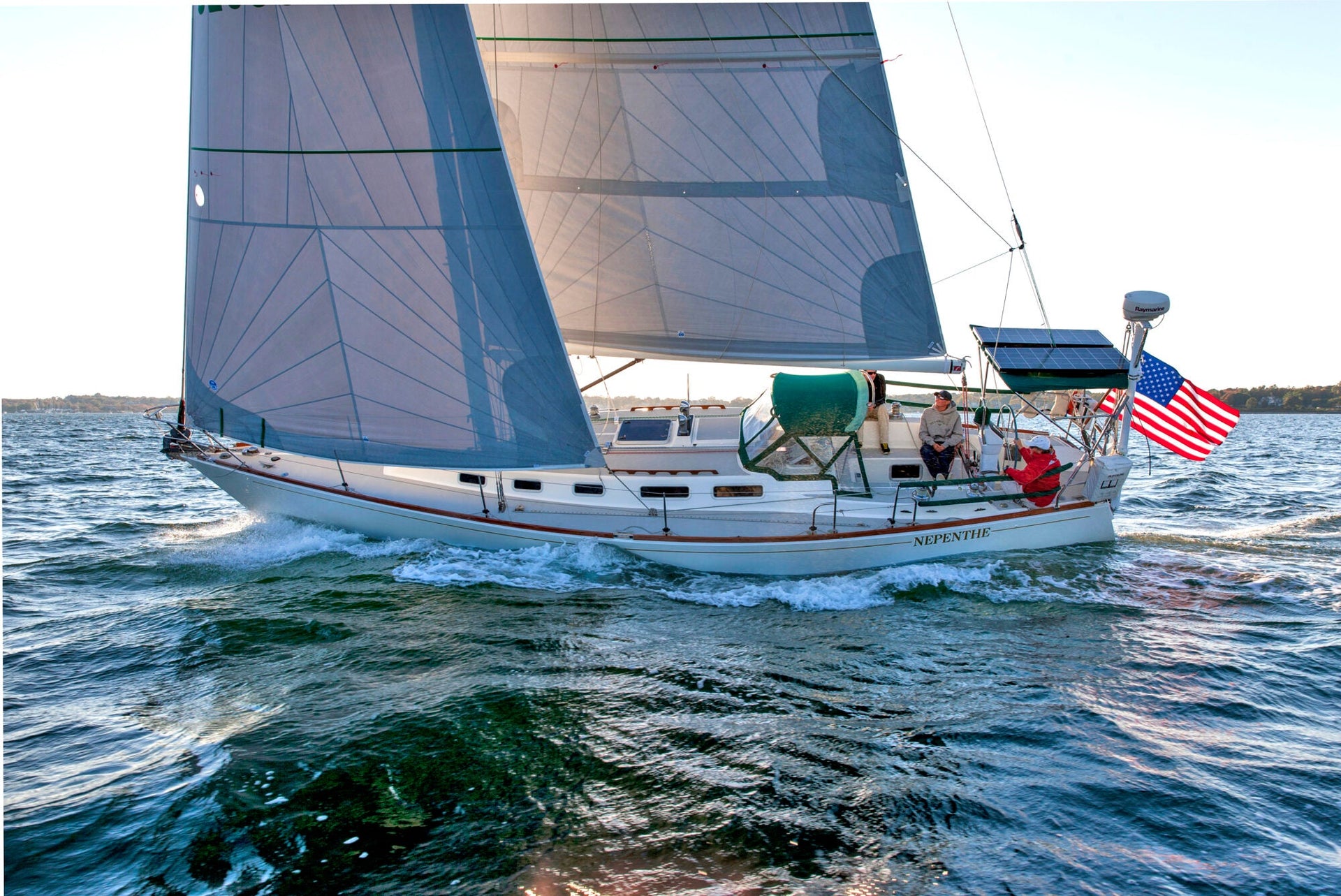
BEST SAIL INVENTORIES FOR CRUISING
NPL TOUR
Day Sailing vs. Coastal vs. Bluewater
One of the many great things about sailing is the ability to choose how long you want to be out on the boat. Day sailors prefer to sleep on dry land, while coastal cruisers might go off for a weekend or even longer. Bluewater sailors like to get away from land altogether, some for as long as they can. Free time and sailing experience do play a big role in determining the type of sailing you do; often, beginners start off as day sailors and increase their time on the boat as their skills improve.
Though a wide variety of sailboats could be adapted to fit any of these time-based sailing specialties, some will obviously be better qualified than others for each one—especially if you’re looking to head offshore. The same is true of your sail inventory. For maximum enjoyment, it’s important that both boat and sails match the time frame you choose, which is why the North Sails cruising experts put together the following summary of what you’ll need for each type of sailing adventure.
Best Equipment for Day Sailing
Cruising daysailers are typically 25-40 feet long, though there are some purpose-built models as big as 50 feet. Day sailing is a great starting point, because it prioritizes a relaxed time on the water without the added challenges of darkness or bad weather.
Most daysailers have a fairly simple sail plan that includes a mainsail and jib or genoa. These can be built of NPC Cross-Cut materials. (If your boat is one of the recent performance daysailer designs, you may want to step up to 3Di OCEAN.
Struggling with sail handling? Consider adding a furling system for jib, main, or both.
NPC CROSS-CUT
Best Equipment for Coastal Cruising
Coastal cruising boats need enough cabin space for the crew to sleep comfortably and have bad-weather shelter, so they are generally in the 30-55 foot range. Both boat and sailors need to be ready for a wider range of weather conditions, as well as the occasional after-dark arrival, and both increase the focus on efficient sail handling systems. You’ll also need a sail inventory that can handle winds over 25 knots.
We have several sail materials that match this type of sailing, including NPC CROSS-CUT or Radian, NPL TOUR, and 3Di OCEAN. The key is to match the sails to your boat and preferred type of sailing. If you’re heading south for the winter, Radian will provide the best combination of longevity, durability, and ability to handle high heat and UV. For performance cruisers, 3Di Ocean is a great fit. Your local North expert can help determine which materials would best match your boat and cruising plans.
3Di ENDURANCE, the racer/cruiser crossover.
Best Equipment for Bluewater Sailing
Bluewater boats and crews will sail away from the conveniences (and stresses) of shore life for many days at a time, so they need to be fully self-sufficient. Purpose-built bluewater cruisers are generally larger than 40 feet, with sail-handling systems designed to handle any kind of weather. For a bluewater sail inventory the priority is durability, because despite the worldwide coverage of North Sails lofts, there’s no off-season—repairs will always slow down the next voyage.
UV is also a big concern. Dyneema has very high strength and toughness, and our NPL TOUR ULTRA paneled sails have been setting the bluewater standard for many years. 3Di ENDURANCE is a great crossover option that provides both offshore durability for cruising and high-level racing performance. 3Di OCEAN will provide performance without sacrificing durability, which is the best option for cruising sailors. To figure out the best materials that will help you achieve your bluewater dreams, talk to your local North expert. Bottom line– no matter what upwind sails you choose, you will not be disappointed.
3Di OCEAN
Easier sailing
Whether you’re a first-time day sailor or a seasoned offshore cruiser, there are many innovations that will help make sail-handling easier. Mainsail luff track systems, inner forestays for heavy weather jibs, and small bowsprits for setting downwind sails are all increasingly common in harbors and marinas around the world, because they reduce the time and aggravation in changing sails.
For day sailing and coastal cruising, furling jibs are standard. More and more boats are adding furling or full-batten mainsails as well. Another innovation that can help ease mainsail stowage is the Quickcover. As the name suggests, it’s a cover that’s always right there when you need it—and that means a longer lasting sail, because you won’t forget or find it too much trouble to protect your investment from UV.
Another addition that will help your downwind enjoyment is a cruising gennaker, along with a snuffer to make it easier to set and douse.
Helix Furling Gennaker
Increasing your boat’s possibilities
If you are a day sailor who aspires to coastal cruising, another important upgrade would be to add an inner forestay for a second jib. Another great addition is the Helix Furling Gennaker. It combines the power of an asymmetric spinnaker with the convenience of a Code Zero. Hoist it once and you have an easy-to-fly sail that will take you to that next harbor fast, even when your apparent wind angle is too far aft for your Code Zero reacher. Plus, this new gennaker is top-down furling, giving you a tight, neat furl that protects the sail.This addition will add versatility to your sail plan and allow you to carry less sails onboard.
If you are a coastal sailor who aspires to head offshore, there are several sail upgrades we recommend. You’ll definitely need a heavy weather jib, a storm jib, 3 reefs in your mainsail, and at least one versatile downwind sail that can be furled. Reefing the main will be easier if you add mainsail luff tracks and cars. For longer-distance downwind cruising, we recommend either a Tradewind or a Helix code sail on a furler.
Sailing is a lifestyle, and many of our customers who started out as beginner day sailers are now off on life adventures, cruising the world. Whether you’re keen to do more day sailing, go off on a coastal cruise, or head offshore to bluewater, the most important key to an enjoyable cruise is to have the right boat—and the sail inventory of your dreams.
FIND A CRUISING EXPERT REQUEST A QUOTE
Tradewind
READ MORE
READ MORE
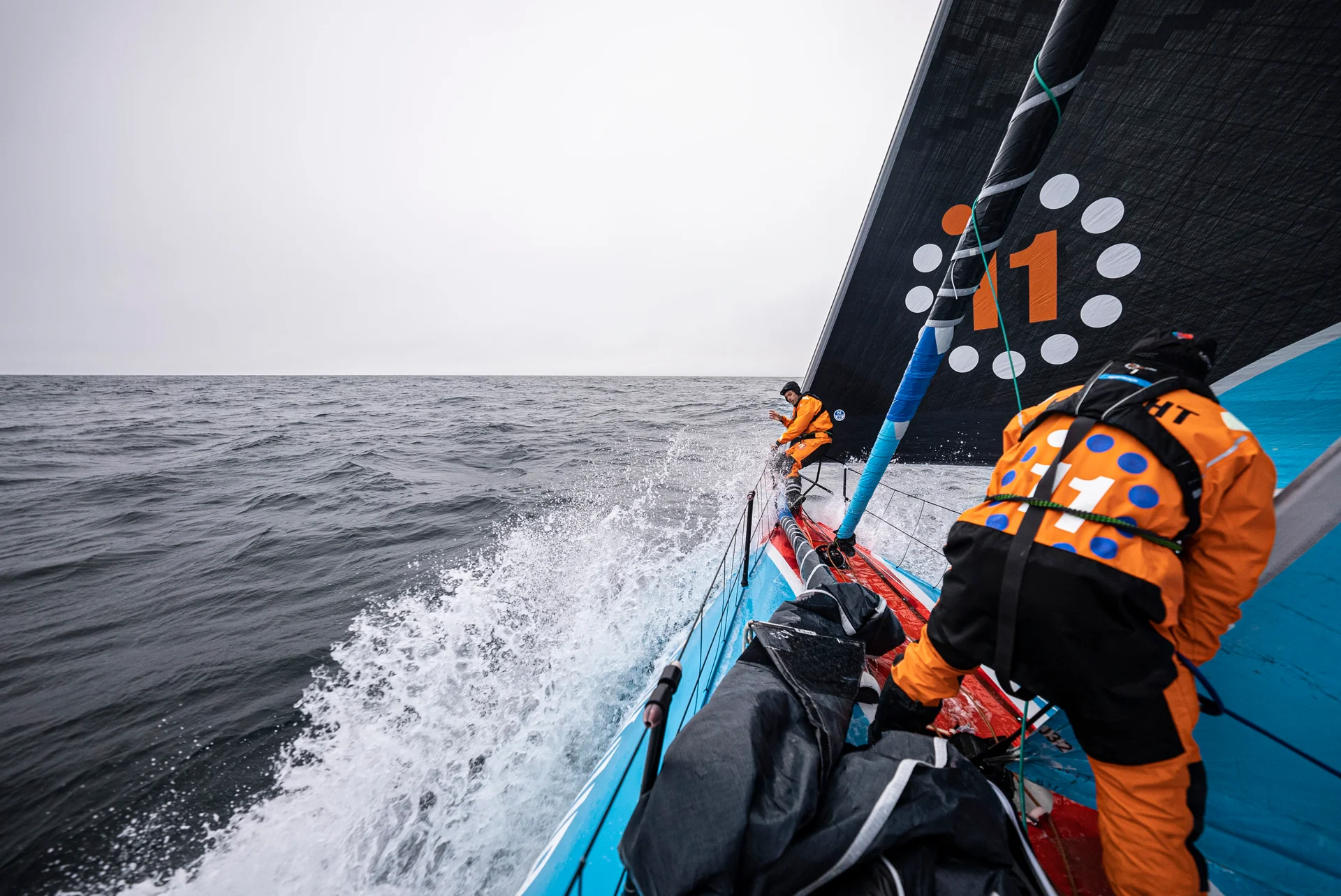
ADVICE FOR BUILDING AN OFFSHORE TEAM
The first thing to always talk about when going offshore is, what are the rules? They’ve created fantastic rules to be incredibly inclusive for people who may not otherwise have a chance to join high-profile sailing teams.
READ MORE
READ MORE
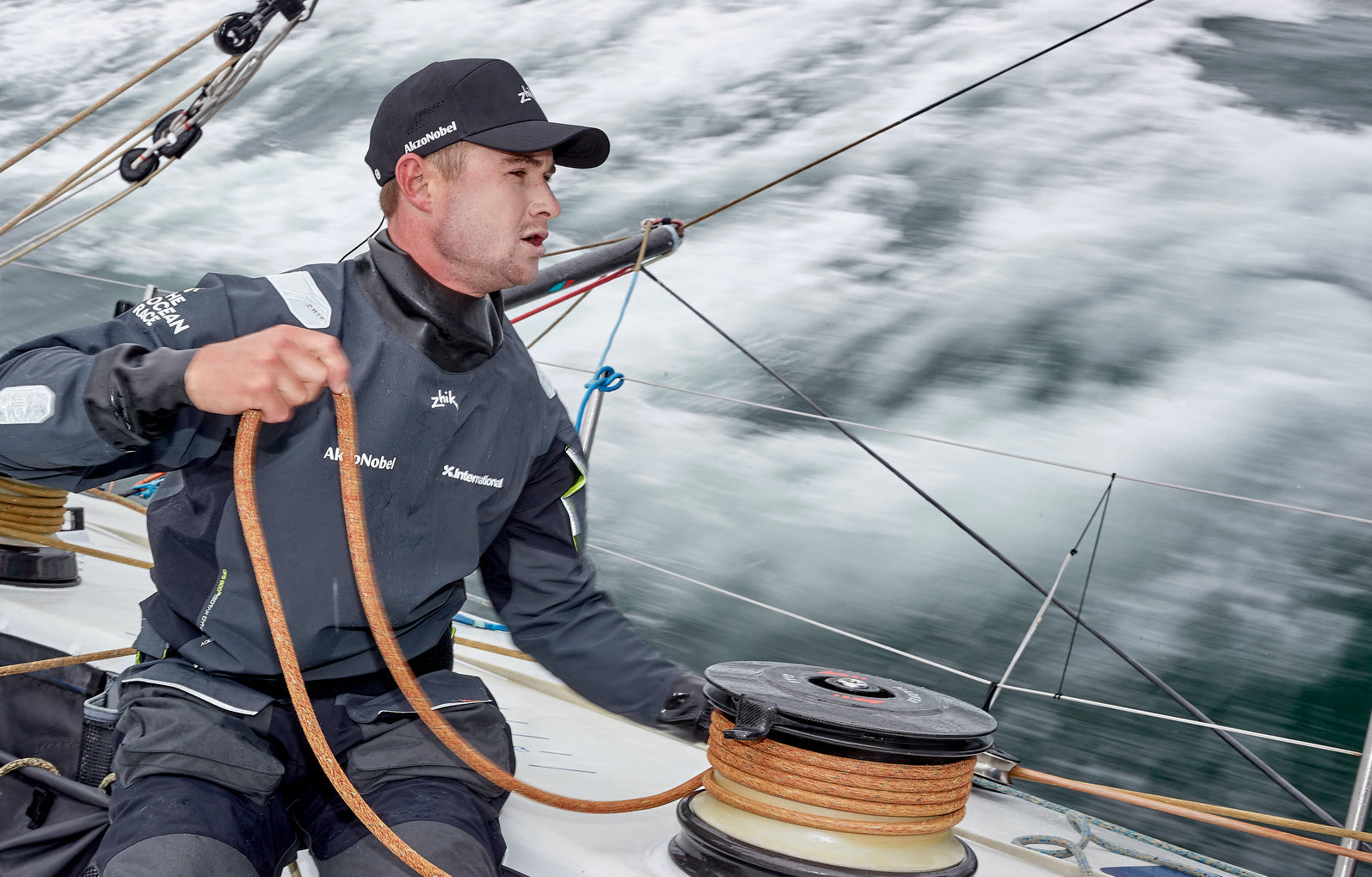
LETTER TO MY YOUNGER SELF: LUCAS CHAPMAN
LETTER TO MY YOUNGER SELF
Lucas Chapman, Watch Caption Onboard AkzoNoble Ocean Racing, Shares His Journey of Ocean Racing as a Dream Turned Reality
📸 Thierry Martinez / AkzoNobel Ocean Racing
The sailors and designers in the world of North Sails are some of the most inspiring people on the water, and we’re hoping to share more of their story with you. “Letter to my younger self” is a series told from our North Sails ambassadors. In each article, we bring to life their advice and personal journeys centered around the question: if your “now-self” could give your “younger self” advice, what would it be?
Dear 19 year old Lucas,
Right now you’re sitting in the university computer labs and you’re supposed to be working on the engineering dynamics assignment. Instead, you’re spending your time devouring every video you can from the 2011-12 Volvo Ocean Race yachts tearing their way through the Southern Ocean. They’re going at speeds you can’t even fathom, racing through massive weather systems and far off locations you are yet to know of. All of this seems a far cry off the 16ft skiff sailing you did over the weekend on the lake.
You see this year you will do something that will change the course of your life, you will do something that will, from that moment on, occupy your every thought, actions, and steps forward. You will go ocean racing. Don’t worry! At first it will be an easy introduction, a short coastal race from Sydney to the Gold Coast. But then later this year, you’ll do your first Sydney to Hobart yacht race. And boom– you’re hooked.
You’re probably wondering how two simple sailing races can make such a difference in your life, but, believe me, an addiction will be formed that even now, ten years later, I still struggle to explain. Standing behind the helmsman as he sends it down the coast on that first afternoon of the Hobart race you will begin to wonder what would it be like to race around the world, just like in those videos you watch from the yachts in the Southern Ocean. It’s this small insignificant thought that will someday allow you to make it to the top of the sport and race racing with and against the people in those videos. You will eventually sail on those boats and be one of the people in those videos. Almost seems impossible, right?
View this post on Instagram
A post shared by North Sails (@north_sails)
I guess it’s time for some advice– after all, how are you going to go from this computer lab to the Southern Ocean. Rule number one: Back yourself. You need to get your mind and thoughts aligned with what you want to achieve. If you want it and you begin to believe it, then all that’s left to do is to go and achieve it. Too often you will spend time doubting and wondering if it is really possible to get to that elite level, but thoughts become your actions so don’t waste time on those negative thoughts. Don’t be concerned if you haven’t won a World Title or Olympic medal– there is no right or wrong way to get to where you want to be.
Rule number two: stay in school. Before you get too carried away and jump on a plane to chase your dreams, it is important to finish your studies though. Although it may seem like a delay to your career as a professional sailor, these skills as a mechanical engineer will become invaluable in the future. Problem-solving and analytical thinking will become an integral part of what you do and make you a valuable member of many racing teams.
While you’re finishing your studies use the time in between to get as much experience sailing on good boats as you can. Chase down rides doing all deliveries and races you can, the experience and things you pick up along the way will all add to your resume, which in the end will make you a more well-rounded sailor. Make sure you are multiskilled, invest in doing some extra courses in basic navigation, learn skills in rigging and sail making, you want to make sure they have no excuses not to hire you.
Over the next five years you will achieve almost every goal you set your mind to. There will be sacrifices, hard times, long days on the road traveling around the world but believe me, it will be worth it.
Rule three: enjoy every step of the way, enjoy the small moments, the friendships, the incredible places and experiences you are so lucky to see along the way which most people are unable to do. Remain humble in every situation, become less impressed, and more involved. When you get to the top, learn to change your game in order to stay in front and always fuel that fire that keeps you motivated to achieve the impossible.
Enjoy every moment and stay safe,
📸 The Ocean Race
READ MORE
READ MORE
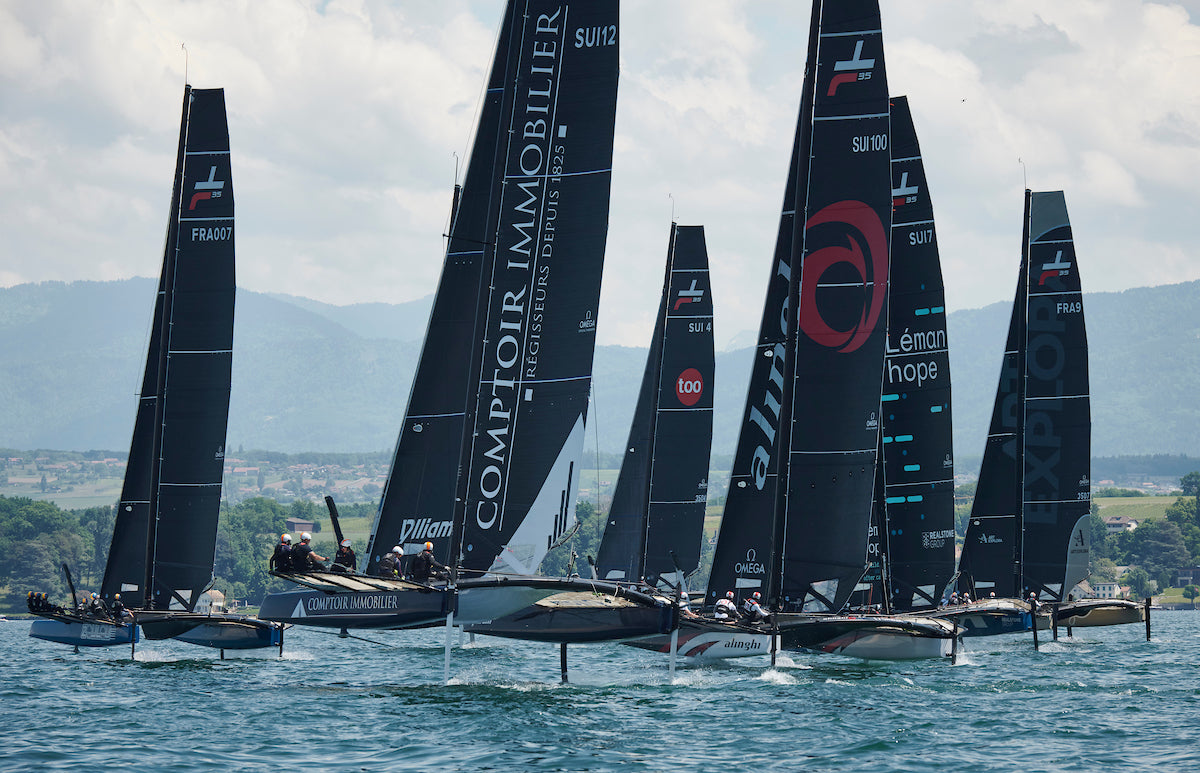
THE COOLEST REGATTA YOU HAVEN'T HEARD ABOUT
BOL D’OR MIRABAUD: THE COOLEST REGATTA YOU HAVEN’T HEARD ABOUT
Europe’s Biggest and Most Popular Annual Sailing Events
📸 Loris Von Siebenthal
If you don’t know anything about the Bol d’Or Mirabaud, you’re not alone—even though it began in 1939 and today is one of Europe’s biggest and most popular annual sailing events. The 66 mile course looks deceptively simple: start off Switzerland’s Société Nautique de Genève (SNG), sail to a mark off Bouveret, France, at the opposite end of Lake Geneva, and then finish again off the docks of SNG. But every year the course provides a different challenge, which keeps both professional and amateur sailors coming back for more.
26 boats participated in that very first Bol d’Or, and the winner finished in just under 24 hours. The current race record (set in 1994) is just over 5 hours, and today over 500 boats participate; everything from custom carbon multihulls to wooden classic cruisers. In 2017, the largest one design class, the 7.5m Surprise, had 132 entries.
Monohulls and multihulls start on separate lines and round different marks to minimize interactions between the fleets. The lake is known for its light wind and flat water, but every few years some serious weather rolls down from the Alps. In 2019, a well-predicted storm halfway through the race brought Southern Ocean conditions with gusts to 60 knots that kicked up huge waves, as well as hail that reduced visibility to almost zero. Competitors were forced to take shelter and drop sails, but thanks to excellent seamanship (and that accurate forecast), the only damage was to equipment.
📸 Loris Von Siebenthal
For the 2021 Bol d’Or Mirabaud, a new one design fleet of foiling T35s will join the fun for the first time. Pierre-Yves Jorand, Director of North Sails Switzerland and Team Director of Alinghi, has worked closely with the designers of this innovative catamaran for more than two years. “The T35 is an accessible foiler that can be sailed well with limited foiling experience,” he says. “This is possible because of flight control on the T-foils and rudders, for maximum stability and safety.”
The T35 is a direct descendant of Lake Geneva’s pace-setting Decision 35 and achieves lift-off in as little as 6 knots of breeze. They were designed to be easily transported around the world, but one stated goal is to beat the D35s on the longer races of their home waters.
To achieve that, sail and foil designs were carefully coordinated. “To succeed, constant exchanges of information and ongoing coordination is crucial,” North Sails designer Patrick Mazuay explains. “The surface area of the foils determines the speed of takeoff. If this area is too large, it slows the boat at high speed because the “T” foil remains in the water all the time. That affects which sails were suitable… so, everything is linked.” The 3Di 870 RAW sail plan includes a decksweeper mainsail, a low-aspect jib, and a drifter. For winds under 5 knots, there’s also a 3Di Downwind 600 gennaker.
Seven teams have been training and racing on the Swiss side of Lake Geneva since early May, with three Grand Prix events completed. RealTeam Sailing leads the overall results and Alinghi is in second, but it was Zoulou (one of two French teams) that beat Alinghi in the lake’s other iconic distance race, the 30-mile Genève-Rolle-Genève. Foiling in six knots of breeze—and a broach-near capsize by Alinghi when they were hit with an unexpected gust right after the start—enthralled the spectators.
There will definitely be more exciting action during the 2021 Bol d’or Mirabaud, which is available to stream live starting Saturday 13 June at 10am CET.
Click here for more info.
📸 Loris Von Siebenthal
READ MORE
READ MORE
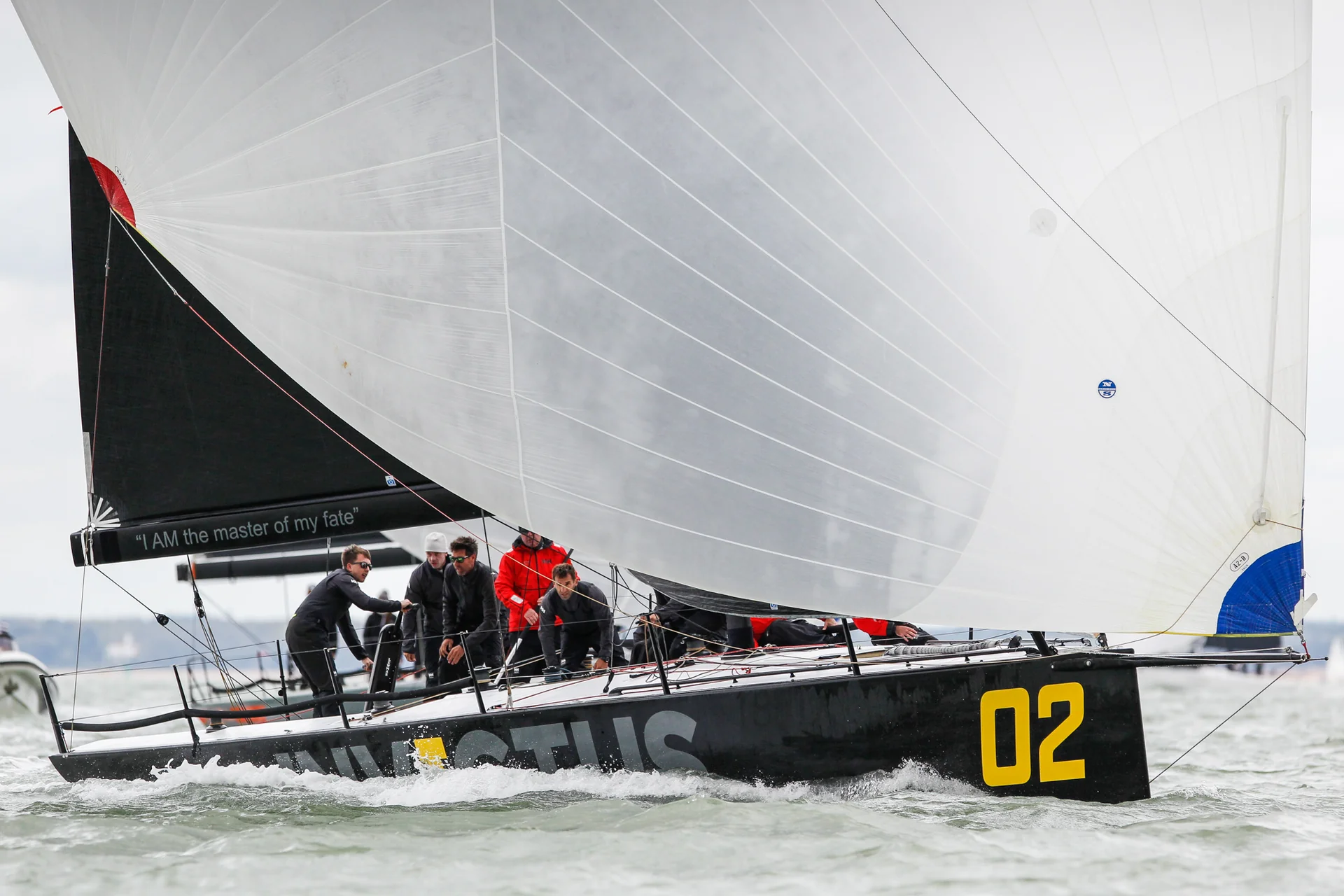
HOW TO: SPINNAKER ZIPPER SYSTEMS
HOW TO: SPINNAKER ZIPPER SYSTEMS
A Smoother, Cleaner, Quicker Hoist
📸 Paul Wyeth
When it comes to hoisting your spinnaker, there are some details to consider that make everyone’s life easier (or harder).
Angle off the wind is often underestimated and this can cause issues when the kite is hoisted too soon. Especially in heavier air, sneaking the halyard is really just to clear the head so it can freely go up in front of the spreaders as soon as the boat turns down around the windward mark or offset. If the kite is fully hoisted before the boat turns down, you can count on a broach or altercation if there is a boat close to leeward trying to make a mark. In a perfect world, the spinnaker is pre-fed, tack out, and the head flows freely, clear from the rigging and the jib or genoa, and as soon as the boat turns down it’s a game of who can ring the bell the fastest.
Why use zippers?
Zippers help keep the kite contained, making it easier to sneak and hoist your spinnaker. As the kite goes up, the zippers hold it together so it doesn’t fill, allowing a few more seconds for the mast position to get it fully hoisted. Zippers help keep the foot and the tack of the kite neat and tidy too, which your bowman will appreciate. The head is easier to bring forward if the kite is properly zipped, which will guarantee a smooth, clean hoist that can even help set you up for an immediate jibe if needed.
Older systems used velcro bands, woolies or rubber bands. They worked, but didn’t hold as long and after time would fail and the debris would be lost overboard. Having zippers instead of bands is a great way to simplify things and help keep trash out of the ocean. In offshore racing, it’s mandatory–as it should be. Here are the steps you should take when properly setting up your kite zipper system.
After the take-down, hook the head to the inside of the bow using a carabiner or slip knot. This will help hold the sail in place and make it easier, as you’ll be below deck while the race is still on!
From there, gather the material between the zipper sides like they are a hotdog bun, and feed the zipper onto the track (the same as zipping up your jacket, making sure the two zipper ends are even).
As you work your way down, very carefully run your finger along the underside of the zipper car to keep the spinnaker material out of the teeth. This is imperative as catching in the zipper will tear the material!
Once you get to the end, hold it together with one hand and pull the zipper off the track. Then use the fixed velcro strap to temporarily secure the zipper from unzipping, by pulling the velcro across and pressing it down to secure it.
Once the velcro retainer is in place, gently break the zipper end so under pressure it will naturally unzip.
Use this same technique on the foot, making sure to keep tension on the material as you work your way towards the clew. This will keep it from bunching up and not fitting in the zipper.
Once you are zipped, remove the zipper car and store it on the spinnaker bag, or below deck on the carabiner, ready for the next douse. You can pack the kite easily now that the spinnaker is more manageable.
It sounds easy, and generally it is! But keep in mind you’ll be doing this as soon as the kite comes down and some boats don’t have a ton of headroom. You also may be doing this alone. Hooking up the head so you don’t have to hold, feed and zip at the same time is very helpful. Practicing this method and timing yourself is a great place to start. Depending on how long the upwind leg is, you may be strapped for time. Getting comfortable using the zipper method and being able to do it on your own puts you on the fast track to becoming a great bowman.
Pro Tip: If the breeze is up and weight on the rail is necessary, try to position yourself down below so you are on the same side as your teammates.
READ MORE
READ MORE

IN THE MIDWEST, WE'VE GOT YOU COVERED
IN THE MIDWEST, WE’VE GOT YOU COVERED
North Sails Certified Service Lofts Keep Clients On the Water
Service no matter where you are. With three North Sails Certified Service locations across the Midwest, your sails are in good hands no matter where you are in your sailing adventures. What makes the difference in North Sails service? The quality of work and the extra mile the team goes to make sure your sails are 110%. The three lofts expertise expands beyond sailors and sailing needs; the teams are able to assist with kiteboarders, windsurfers, canvas or custom projects. As Detroit service manager Bill Lesnek says, “the service work, it’s just a higher level of standards compared to everybody else, you know? North people care a little more, and put a little more heart and soul into what they do.” Beyond that, Bill shares, he is grateful to have a really strong team in Mike Stark and Karl Kuspa. “Mike and I work really well together. He’s got a lot of experience, and we’re on the same page. We all get along like a little family over here. Which is the way it should be, you know?” This idea of teamwork is a common thread woven throughout the Midwest lofts and the North Sails environment. It is a consistency that holds everyone to a certain standard, ensuring customers' needs are met, no matter where they are. When Bryan Sims from Toronto took his Perry 57 down to Chicago, he was connected with the North Sails Chicago team, where Perry Lewis has been assisting him in getting ready for racing. Toronto North Sails expert Hugh Beaton shares, “It is really great knowing that when one of your long-time customers starts travelling around the Lakes, that the North Sails team will jump in to support him with local advice and excellent service.” The lofts work together on a consistent basis. If Chicago needs assistance, the Detroit team helps out and vice versa. The same with Milwaukee. Miles apart but the spirit and attitude across the Midwest lofts is the same. Backed by their years of experience, the team is ready for whatever walks through the door; whether it’s regatta service, annual inspection, sail washing, or a new UV cover. North Sails expert Tom Pease, with 40 years experience in sailmaking, from our Milwaukee loft shares, “From a sales standpoint I've found that one of our strengths is being able to support our clients throughout the Great Lakes region no matter what their sailing requirements or criteria might be. If one of our clients that I'm working with needs help right before one of the larger events out of the area, the lofts in Chicago and Detroit are standing by.” Our team has you covered wherever your travels take you in the Midwest. Connect with our team for your repair needs today.
FIND YOUR LOFT REQUEST A QUOTE
READ MORE
READ MORE
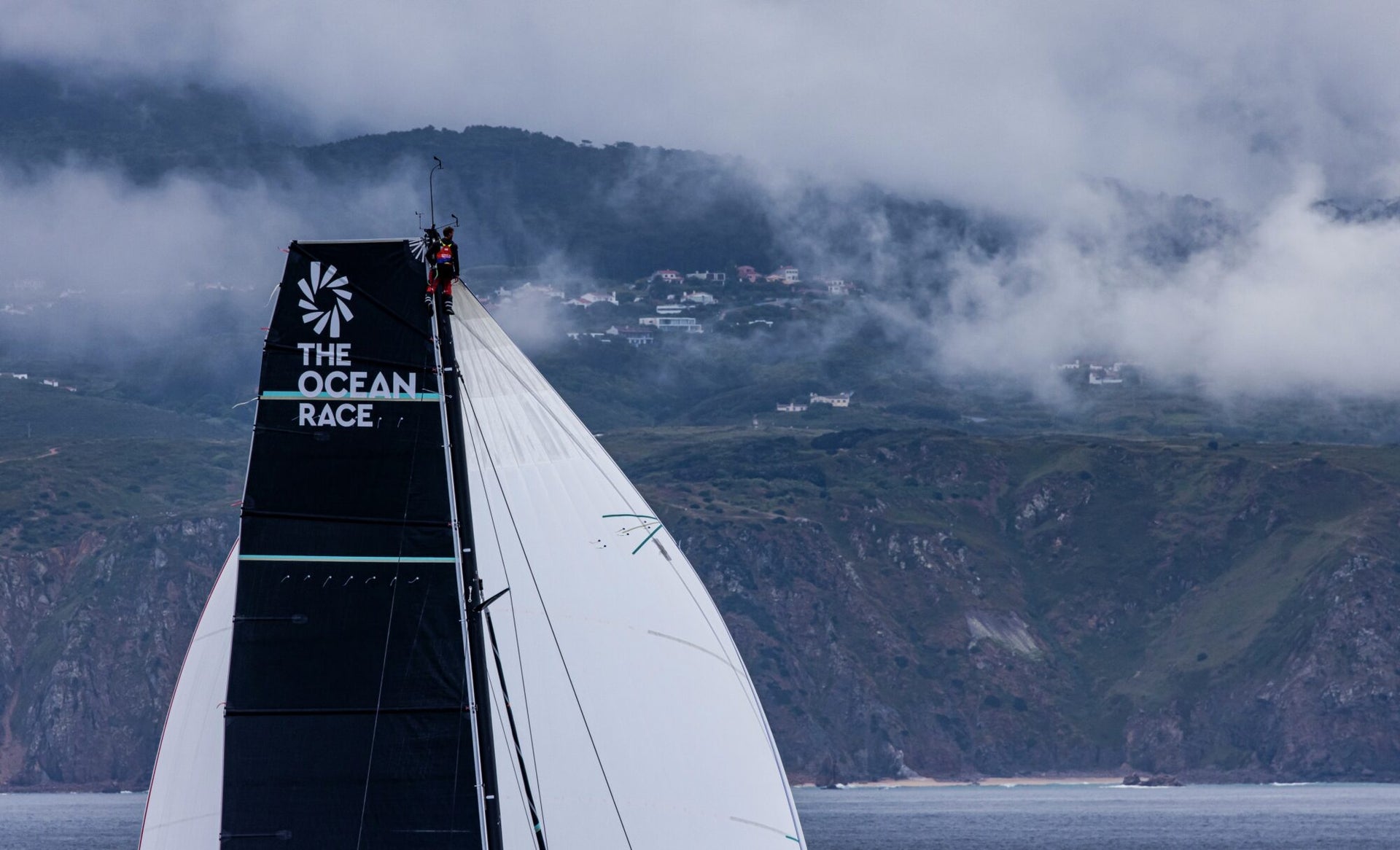
KEN READ RECAPS LEG 1 OF THE OCEAN RACE EUROPE
KEN READ RECAPS LEG 1 OF THE OCEAN RACE EUROPE
First of all, it’s great to see the boats back out there.
📸 The Ocean Race
Let’s face it. The world is itching for good things, and in the sailing world we’re just itching to get back on the water and do what we do. The Ocean Race is jumping into the season with a great idea that’s built a lot of enthusiasm in a very short period of time– the Ocean Race Europe. Simply a great showcase for the teams, the crews, and the programs to get miles in before they set off on an around the world adventure in 2022.
Practice is always good, and a vital element in preparation. Some of the boats are getting their feet wet. Newer teams, younger crews, all mixed gender, all trying to learn how to sail the boat. Other teams are pretty far down the path and have (for the most part) sponsorship reasonably secure and are a little more prepared to take on what a 56,000 mile around the planet race can throw at them. I think, for all the teams though, it’s just really great to get back out there.
Enter the IMOCA class as an additional class inThe Ocean Race, which feels more like the so-called “development era” of the past. The Volvo 70s for example were a reasonably tight box rule, but nonetheless allowed designers and teams creativity with regards to the final boat, the sail package, the setup– nearly everything. The IMOCA 60s take it one step further with only a few one-design parts like the keel fin, the mast and the rigging. But, for the most part, it’s a wide open development class. In my opinion, it feels like we’re getting back to those roots of The Ocean Race.
Yes, you could say the One-Design 65 footer class may have saved the Ocean Race a few years back when the event was looking to increase participation numbers. But now with the addition of the two different classes and the ability to choose whether it’s strict One-Design or wide open with crazy offshore development, it’s really a good thing for the race. Also it’s an outstanding thing for us as spectators to watch.
In the One-Design 65 fleet, there are very few changes to the rule. Head of operations, Neil Cox, still has to get all the boats through a mandatory checklist including any minor rebuilds in order to get them prepared to take on the rigors of offshore sailing . But besides that, it is still a strict One-Design rule with only one real “new” wrench thrown into the situation: the new A4 spinnaker.
Let’s talk about that A4 spinnaker. First and foremost, it opens up quite a few new opportunities, both tactically as well as boat speed wise. The teams are just going to have to figure out how and when to use them, and it really depends on weather systems and whether you need to go high and fast to the next weather system, or it’s more of a VMG situation where it’s optimal VMG towards the next mark.
From a North Sails perspective, it’s been fun developing the A4 with the sailors right down to a brand new sail bag that was modified to help sails get in and out of the hatches with ease. They’re going to have to get out there and spend a lot of time on the water with these new sails, put them to their test, and figure out how to use them and how the boat likes to use them.
On the other hand, the IMOCAs have a crazy amount of development in their sail plans. Very similar to the America’s Cup, with the engine above the deck and the engine below the deck needing equal development time with regards to how to make a boat go fast. It’s important to remember, if the development teams only concentrate on the radical hydrofoils, then they’re going to miss out on the other half of the operation. The sail plans and the sail sizes, the aspect ratios, the anticipated wind angles, and the ability to flatten sails quickly all take on a whole new dimension when it comes to these boats. It’s the ability to have depth and size in their sail plans to get the boat popped out of the water. Not all the way out of the water, but what’s called skimming. When the IMOCA 60s are skimming, the apparent wind goes forward and as the apparent wind builds;the sailors have to have the ability to flatten the sails dramatically just using conventional tensioning devices. Enter the huge advantage of 3Di to make this happen.
It’s an interesting set of lessons to be learned over the next year in the IMOCA class, and the sailors, I think, are just on the tip of the iceberg at this stage. We’re going to see some great new concepts and designs coming out of races like this, especially when the boats are now crewed, compared to solo or Double Handed, which is more typical for the IMOCAs. It’s anticipated, according to the sailors on board, that they can sail the IMOCA upwards of 15-20% faster on average than when they’re sailed by the rule maximum crew of 5 compared to short handed. Think of that for a minute. That is a massive amount of miles gobbled up around the world just by having a few extra crew. They still had the ability to use the autopilots, which essentially are steering the boats better than a human in most conditions at this stage, and the autopilot doesn’t have nerves. When the boats get going so fast, the autopilot doesn’t know to bear off, it doesn’t know to bail out of a big wave, it just sends it. So the sailors are going to have to figure out when to pull back on throttle a little bit to keep these boats in one piece.
Anyway, it’s a fresh, brave new world for the Ocean Race. It’s just great to see it back out of the water, and we look forward to sharing some of our observations as we go along.
📸 The Ocean Race
READ MORE
READ MORE
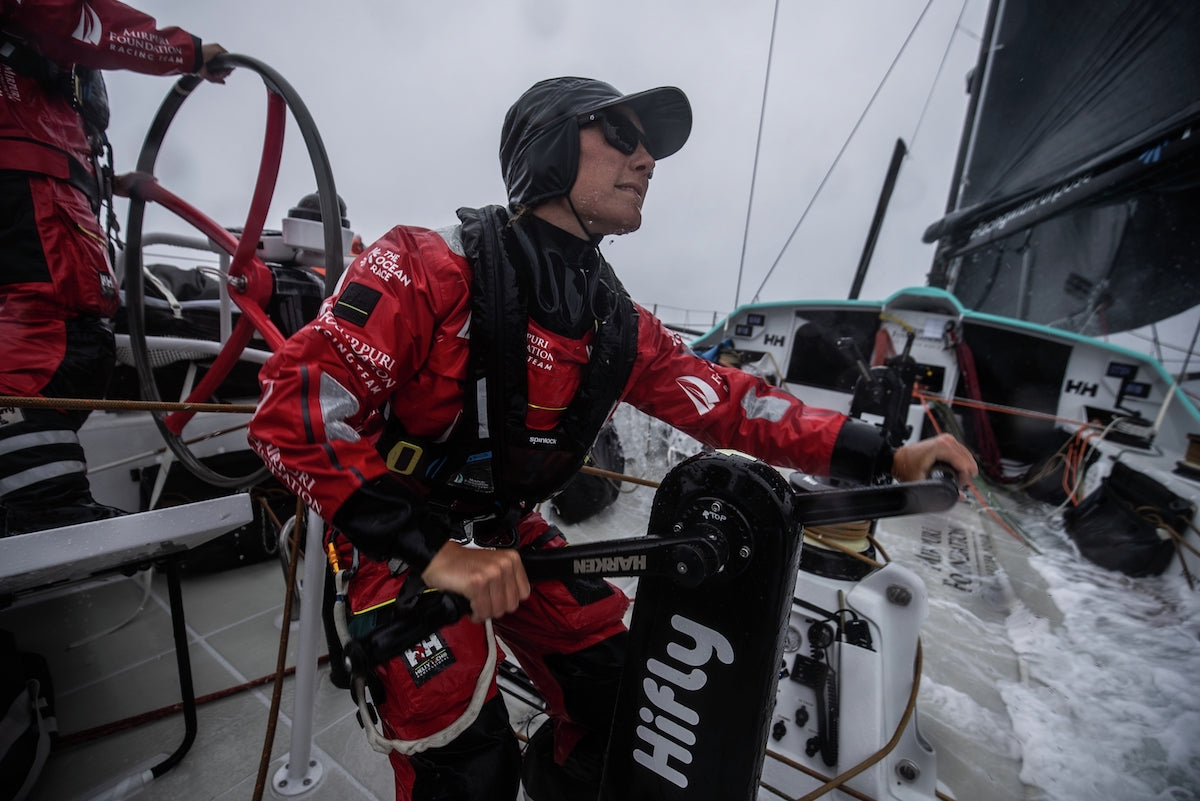
LETTER TO MY YOUNGER SELF: EMILY NAGEL
LETTER TO MY YOUNGER SELF
Emily Nagel from Mirpuri Foundation Racing Team Leads-Off Our New Series
📸 Martin Keruzoré / The Ocean Race
The sailors and designers in the world of North Sails are some of the most inspiring people on the water, and we’re hoping to share more of their story with you. “Letter to my younger self” is a series told from our North Sails ambassadors. In each article we bring to life their advice and personal journeys centered around the question: if your “now-self” could give your “younger self” advice, what would it be?
Dear 10-year-old Emily,
I promise you that one day your sailing dreams are all going to happen, but not until you start ignoring the people who say “you can’t.” I need you to stop getting out of people’s way and start fighting. I need you to go for it.
Yes, starting to sail the Opti at age ten was always going to be hard. It doesn’t help that you’re too big for the boat, and coming in last all the time is discouraging. I get it.
But your dream to race around the planet is not crazy. Whatever you do, do not give up on this dream. That might seem a little wild to hear right now but trust me, you will one day see albatross soaring in the Southern Ocean. Stay inspired by Ellen MacArthur and her book, “Taking on the World”– the way she puts her head down, works hard, and makes things happen. Even if people tell you that you can’t do it, pretend you are Ellen; just get after it, and eventually you’ll prove them all wrong.
One thing, though: you must listen to your parents. Go to school, study hard, get good grades and be practical (trust me, it will make sense one day). But don’t lose focus on your love of sailing. Because, 10-year-old-Emily, despite what so many people say, you’re really quite good.
One of the most instrumental projects you’ll work on is in 2016 (just over ten years away!) is a Red Bull project called “Flying on Water.” Together with Jimmy Spithill, Rome Kirby and Shannon Falcone, you’ll sail from New York to Bermuda. It will be intense, but it will be a real eye-opener. You’re going to really see that this dream you have now, at the age of ten, really isn’t so crazy after all. You’ll realize that your dream to sail around this world is in reach, and that all you need is a bit of a kick to get yourself moving. There might be some low days between now and then, but that fire inside you will always exist and the spark will reignite on this trip.
After “Flying on Water”, you’ll be mentored by Jimmy Spithill. You’ll ask him for advice and he’ll stay involved with your progress. He will keep inspiring you to chase after your “crazy little dreams,” whether it’s offshore sailing or high-performance foiling.
If you want to do professional sailing correctly, become as well-rounded as possible and get as many different offshore skills as possible. Get on the bow, be a trimmer, get to know a winch inside and out, and figure out how to fight for the helm. Get onto both big boats and little boats, and when Moths come on the scene, start racing on those as well. Match racing and other inshore tactics will come in surprisingly handy when you start racing VO65s. (These don’t exist yet, but one in particular will become your offshore home.)
Equally, don’t limit yourself to sailing. Your degree in naval architecture and engineering experience will lead you first to the design office and then to working with shore teams. You’ll get your hands dirty servicing winches and repairing carbon boats. And —this might sound funny because it’s only 2004– but computers are going to become an essential part of sailing. One day, your ability to crunch numbers and data will make you even more valuable.
View this post on Instagram
A post shared by North Sails (@north_sails)
One day not too far in the future, 10-year-old Emily, you’re going to work for some of the best teams in the sailing industry—and be an asset to each one. From the Ocean Race to the America’s Cup, you’ll get stuck into incredible projects, learn from the best, and share in the victories. You’ll love working towards these high-performance goals.
But, to do this, you’re going to have to make things happen. Opportunities won’t be handed to you, so you’ll have to stop worrying about what other people think and trust yourself. Stop listening to the haters. Get over any fear of failure, and give it everything. You can do it, even if it terrifies you, it will be a brilliant challenge to race around the world. This mental mindset will make you a little different. It will make you stand out. It will give you that cutting edge.
Decide now that you don’t want to be pushed around anymore and that you’re good enough. Once you do that, you’ll get your foot in the door with the high-performance world and you’ll break into professional sailing. You must back yourself, you have to shut out the noise. 10 year old Emily, believe me: you have to go for it.
Stay hungry,
📸 Martin Keruzoré / The Ocean Race
READ MORE
READ MORE
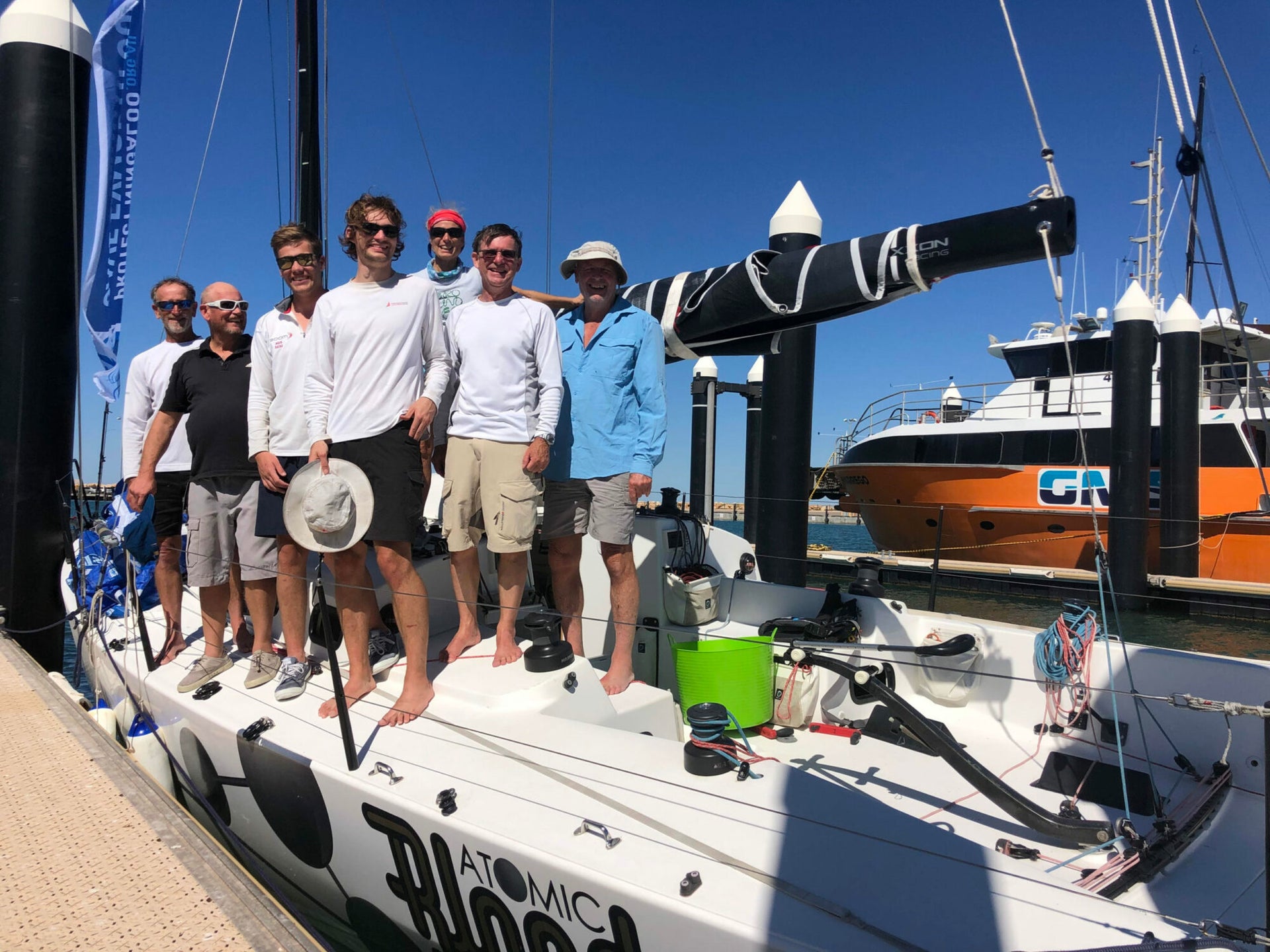
#NSVICTORYLIST: ATOMIC BLONDE WINS THE SISKA TROPHY
#NSVICTORYLIST: ATOMIC BLONDE WINS THE SEASON
Congratulations Team on Winning the WA Offshore Yacht SISKA Trophy
📸 Lindsay Preece
The JPK 10.80 Atomic Blonde placed 3rd overall in the recent Fremantle to Exmouth race, being also Division 2 line honours winner. Highly variable weather patterns ranging from drifting conditions to near gale force made it a challenging race. This capped off a very successful year for Atomic Blonde and her crew, and emphatically sealed the coveted SISKA trophy for overall best offshore race yacht in Western Australia. This is the first time in 14 years a Division 2 yacht has won the trophy and was especially pleasing for the crew who are all Corinthian sailors.
📸 Lindsay Preece
Atomic Blondes owner Dr Simon Torvaldsen filed the following report; “A key factor in the success was the decision to use North Sails for the new mainsail and jibs. Upwind performance is critical to winning races in Western Australia. Having the 3Di RAW sails resulted in 20kg less weight loft compared to the previous configuration and the one piece moulded construction delivered performance as promised, being precisely shaped to the boat design. The fact that North Sails had extensive experience in JPK sail design in Europe was a big factor in the decision to use their sails and the results speak for themselves. Utilising high tech construction and very precise design means that sail settings and rig tune need to also be very precise, small differences in settings can have a big impact on performance. So time needs to be spent by crew in getting the rig and sail settings correct. This is where after sails service and back up from the sailmaker is important, and the North Sails team spent considerable time on the water with Atomic Blonde and her crew to optimize the boat tune and enable the performance potential of the new sails to be unleashed. Winning the major offshore trophy over a whole season requires a lot of time, effort and teamwork, especially when competing against highly competent, motivated and professional opponents. It needs a top boat, crew, gear and sails. North Sails became an integral part of that team and the quality of the sails and tuning advice played a key role in securing the SISKA trophy for Atomic Blonde.”
📸 Lindsay Preece
READ MORE
READ MORE
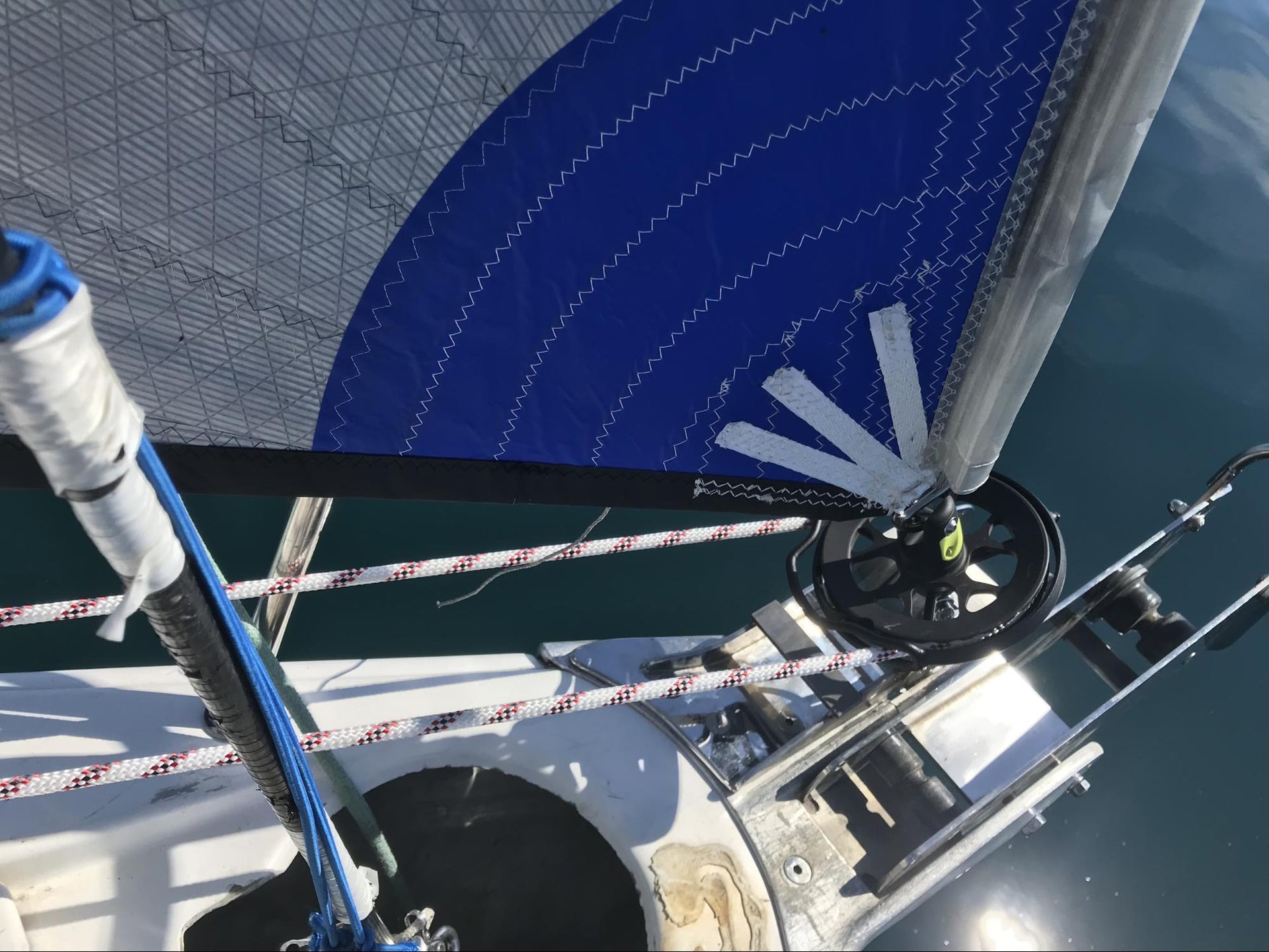
CODE ZERO'S: WHAT'S NEXT
CODE ZERO'S: WHAT YOU NEED
A Look Into What's Important to Think About When it Comes to Your New Code Zero
Local North Sails expert Hugh Beaton shares insight into what you need to think about when it comes to setting up your new Code Zero on your boat. So you’re either thinking about adding a code zero to your mix or you’ve already bought one and probably wondering what’s next. We’ve put together a list of what we’ve learned in the past year from our trials and tribulations with Code Zero’s.
Learned the Hard Way
You need more space at the top otherwise the sail can’t unfurl if it’s too close to the forestay. It’s not the swivel, it’s the head of the sail itself that needs room. Tip: Hoist your code just a few inches short, unfurl, and winch it up the remaining distance.
Helix Sails are the Easiest to Handle
Perhaps more important for the cruisers than the racers, Helix sails are lighter, more flexible and easier to stow away. You can fold it in half and put it in your car. Helix sails offer significant handling benefits that makes it a great choice for cruisers and racers alike.
UV Protection
We’re seeing more and more cruisers that are wanting to leave these things up so you need to have a plan for UV protection whether it’s paint or UV suncover. Whatever you do, do not leave it up without protection. Leaving it up for a long weekend is okay, but leaving it up long term is not. The material will eventually be broken down by the UV rays and you’ll be needing a replacement faster than you think. When thinking about how to set up your code zero, it’s best to ask yourself the following questions. Understanding your attachment options will help your sail expert design the best possible sail with the right fittings so you can sit back and enjoy your experience.
Where does your spin halyard come out at the top?
Where are you going to put the drum? Will the bow pulpit be in the way?
Do you need a prod?
Having a bowsprit isn’t necessary as it depends on the location of the drum and how much room there is in the pulpit.
Is your anchor roller strong enough to be used? Or would it need to be reinforced? This is especially important for cruisers.
There are a few hardware items you need to think about before your sail arrives to make sure your boat is ready to go.
Furlers
Yes your sail needs to furl around something! There are multiple setups that you can do that work best for your boat and sailing needs. We’ve had great success with the ProFurl NEX units for local sailors on Lake Ontario. When purchasing a furler, you can opt to get stanchion leads. These assist the furling line and cam cleats should you wish to have the furling line come all the way back to the cockpit; however it’s not a must. This would be most ideal for shorthanded crews.
Attachment Points
You’ll need to think about potential attachment points in relation to your furling unit. Almost any cruiser built in the last 10 years has attachment points already in place for Code Zeros. This is because there’s a bit of space above the mast therefore there is always a pass through via the pulpit. Hanse always has it built in already, same with Beneteau.
The Furling Line
When it comes to the furling line, there are two main things to consider: the grip and the length. It’s all about grip. The line needs to be able to spool in the drum and not slip when you’re pulling. We recommend talking to a rigger when getting a furling line, specifically Cam from Fogh Marine. We have worked with Cam many times to create furling lines for Code Zero’s; he is well versed in what line to use. The length itself for the furling line is critical. This all depends on where you want to control the line from therefore how far does it need to come back? Cruisers may want it to come through a cam cleat so they can stand up and pull the line from the back of the boat; whereas racers may want it to come through tweakers to the cockpit. Additionally, this also impacts usage if you get a velcro patch on the sail. Cruisers typically don’t need the velcro patch on the sail whereas racers like the velcro patch so that it keeps the sail closed once it’s furled up (which also makes it easier to drop).
Tweakers
An additional add-on to your setup that could be beneficial. Many racers use them because they allow you to set the sail for all kinds of different wind angles. We recommend speaking with Fogh Marine about options and sizes for your boat specifically.
READ MORE
READ MORE
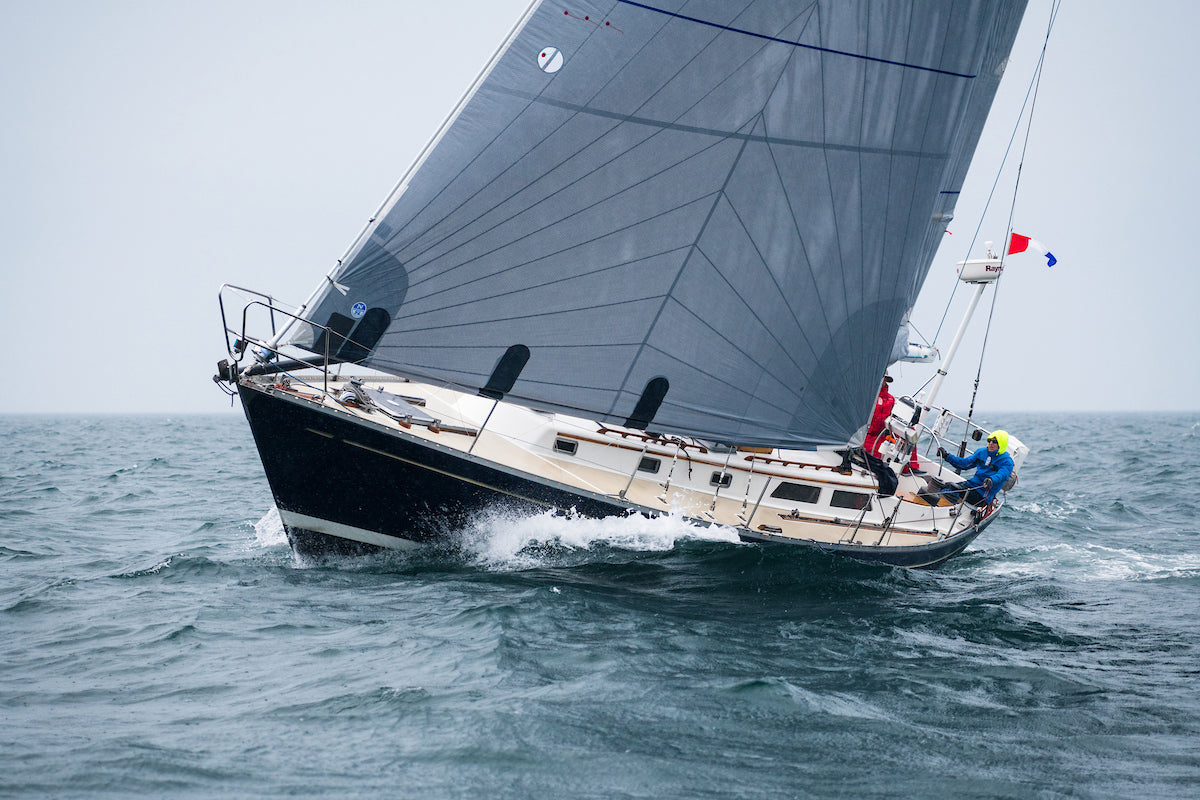
Consejo North Sails
CONSEJO NORTH SAILS
Elegir un inventario a medida de nuestras necesidades y las características de nuestro barco puede parecer complicado
📸 Cate Brown
Afortunadamente, la combinación de eslora y plano vélico reduce las opciones y podemos centrarnos en el material que mejor cumple nuestros objetivos. A partir de ahí, nuestro agente especializado nos indicará cómo afinar detalles en base al uso que vayamos a dar a nuestras velas.
"Si alguien busca durabilidad, le dirigiremos a nuestra gama 3Di Endurance", indica JB Braun, director de diseño e ingeniería de North Sails. "Si lo que busca son prestaciones, la 3Di RAW. Si prefiere un compromiso entre ambas, también tenemos opciones".
Otra forma de que los agentes puedan ayudarnos a elegir la vela más apropiada para nuestros intereses es midiendo el barco, incluso si ya está en la librería de diseño de North Sails, que cuenta con datos de todas las velas fabricadas desde 1990.
"Un cliente puede haber variado la caída del mástil o tener un enrollador diferente. Hay quien prefiere un puño de escota más alto o más bajo". Para todos ellos, North Sails ofrece un producto a medida.
READ MORE
READ MORE
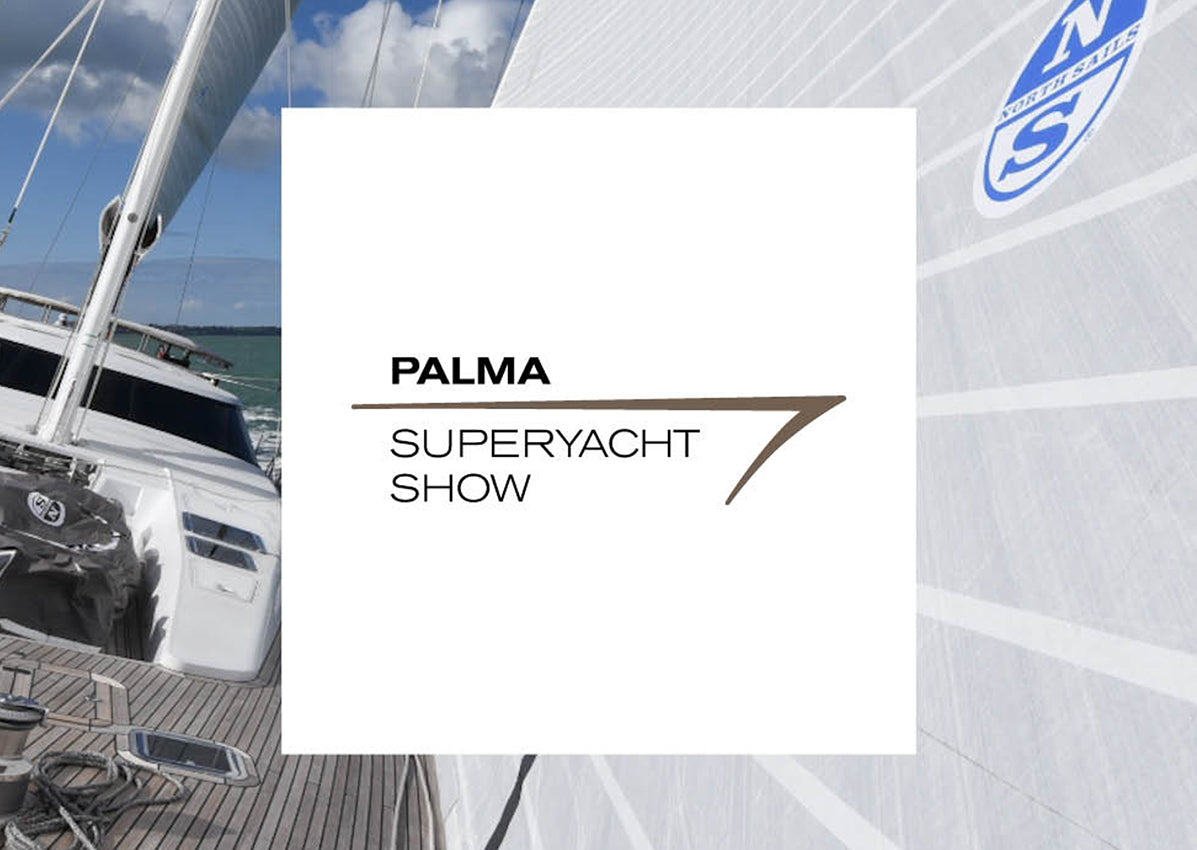
CALENDARIO NORTH SAILS
CALENDARIO NORTH SAILS
A las puertas de la temporada de verano, el equipo de North Sails España continúa organizando charlas, webinars y presentaciones
Del 3 al 6 de junio estaremos en el Palma Superyacht Show; visítanos en el stand SY03.
El 10 de junio, en la previa del Trofeo Carburo de Plata de Cartagena (11 a 13 de junio), el equipo North Sails España al completo impartirá un interesante webinar sobre materiales de crucero.
Y recuerda que puedes contactar con nuestros expertos para resolver cualquier duda a través del email info@es.northsails.com
READ MORE
READ MORE
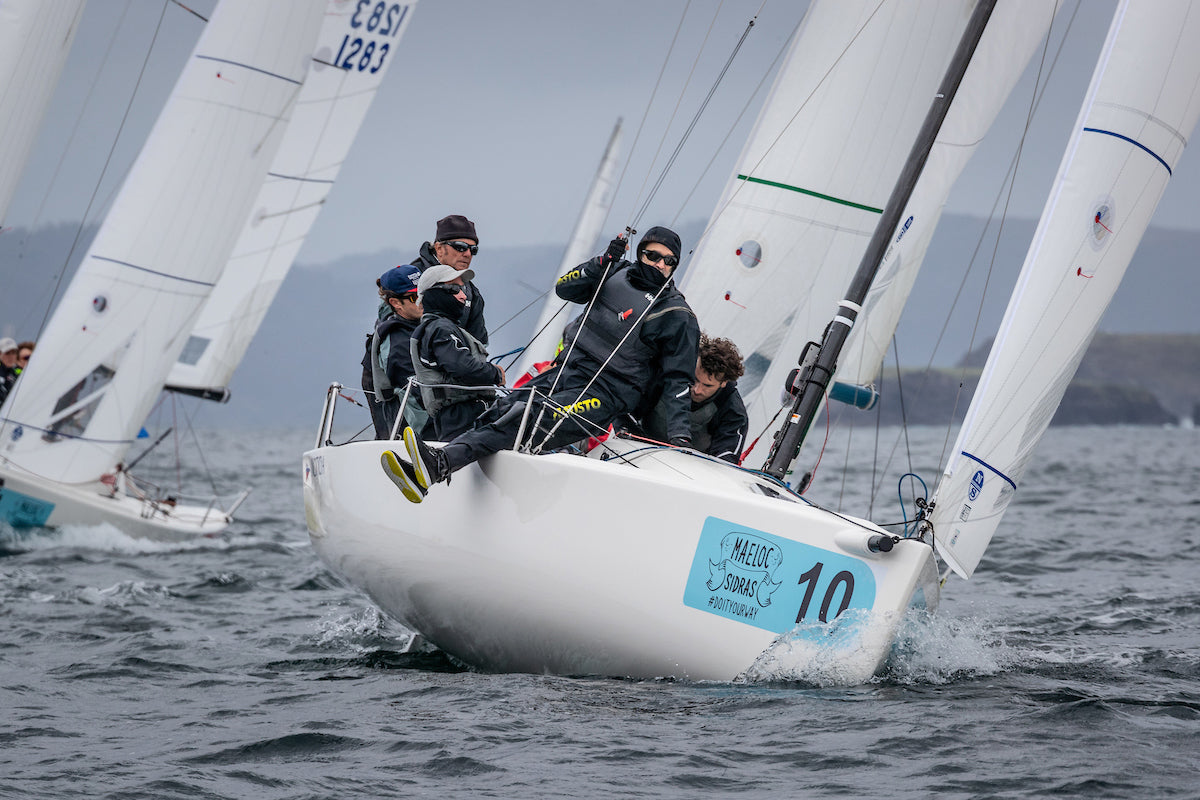
NORTH SAILS COPA EL PODIO EN J70
NORTH SAILS COPA EL PODIO EN J70
Barcos equipados con inventarios North Sails coparon el podio del Maeloc Open de España
📸 Maria Muina / Sailing Shots
Barcos equipados con inventarios North Sails coparon el podio del Maeloc Open de España, regata de J70 que reunió a una potente flota formada por 19 equipos de España, Argentina, México, Finlandia y Portugal en aguas de A Coruña entre los días 14 y 16 de mayo.
Un intenso programa de nueve mangas resolvió el título en favor del Noticia de Pichu Torcida, seguido por el Solventis de Alfredo González y el Marnatura de Luis Bugallo. El Noticia será el único representante español en el próximo mundial de J70 (que se celebrará en Marina del Rey, California, del 7 a 15 de agosto), y desde North Sails España le deseamos la mejor de las suertes.
¡Gracias por confiar en North Sails!
READ MORE
READ MORE
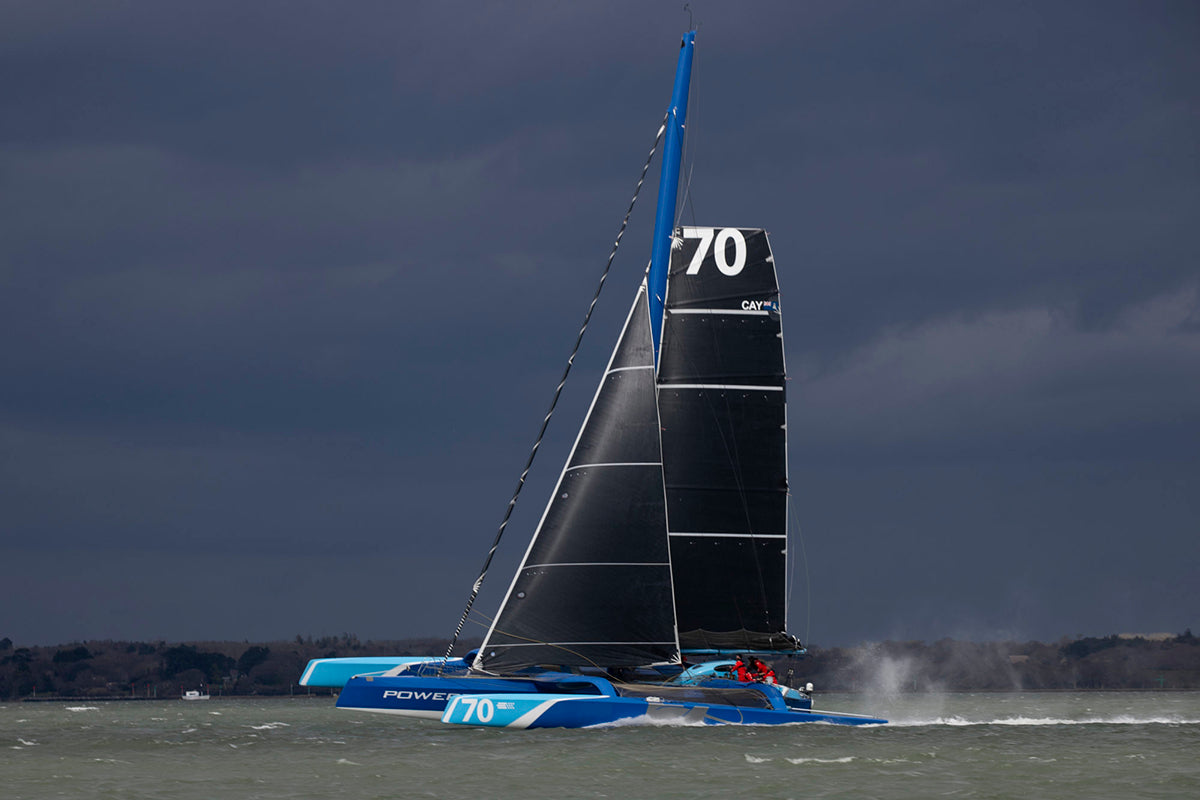
NUEVO RÉCORD DE LA FASTNET
NUEVO RÉCORD DE LA FASTNET
A tres meses de la mayor edición en la historia de la Rolex Fastnet Race, se ha establecido un nuevo récord
📸 Lloyd Images
A falta de tres meses para que se celebre la edición más multitudinaria de la historia de la Rolex Fastnet Race, el trimarán MOD70 PowerPlay, patroneado por Ned Collier, ha establecido un nuevo récord en el recorrido de 595 millas náuticas entre Cowes y Plymouth vía la mítica roca Fastnet.
El tiempo de 25 horas, 04 minutos y 18 segundos (pendiente de ratificar por el World Sailing Speed Record Council) mejora en casi tres horas la anterior marca oficial, fijada por el Maxi Edmond de Rothschild en la pasada edición de la regata.
Enhorabuena a todo el equipo, ¡y gracias por confiar en velas North Sails!
READ MORE
READ MORE

NORTH SAILS, VELA OLIMPICA DE 49ER Y 49ER FX
NORTH SAILS, VELA OLÍMPICA DE 49ER Y 49ER FX
North Sails ha sido elegida proveedora de velas para las clases 49er y 49erFX
Tras meses de pruebas y comparativas con otras velerías, un comité formado por medallistas y entrenadores olímpicos, los medidores de ambas clases, un representante del astillero y los propietarios de la marca ha elegido la tecnología 3Di de North Sails para propulsar a los 49er y 49erFX en el próximo ciclo olímpico de París 2024.
"Es la primera vez que una clase olímpica puede elegir un equipamiento que optimiza prestaciones, consistencia y longevidad con un bajo impacto medioambiental, todo en un mismo paquete", explica el actual campeón mundial y olímpico de 49er, Blair Tuke.
Los equipos de 49er y 49erFX utilizarán mayores y génovas 3Di tanto para entrenar como para competir en las regatas previas a los JJ.OO. de París.
READ MORE
READ MORE
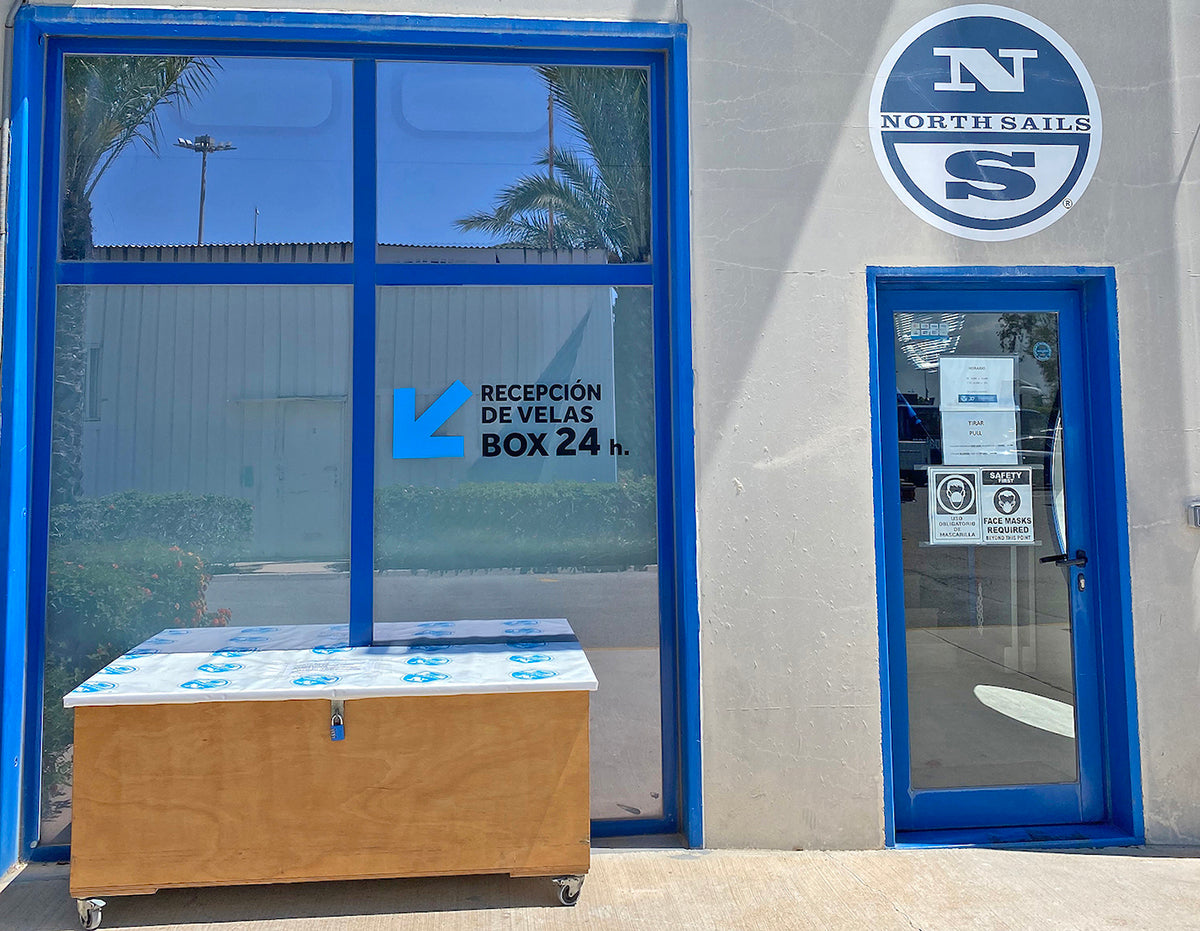
NORTH SAILS BOX - EL SERVICIO 24H DE VELERÍA
NORTH SAILS BOX
El servicio 24h de velería
North Sails Valencia prueba un nuevo concepto de servicio de velería que permite al cliente entregar sus velas para reparación o mantenimiento a cualquier hora del día (o de la noche). North Sails Box es el nuevo acceso directo al Servicio Certificado North Sails en horario 24h.
Un correcto mantenimiento resulta clave para garantizar el rendimiento y la longevidad de las velas, y una revisión antes del inicio de la temporada de navegación es el mejor antídoto para evitar problemas cuando más las necesitamos. A través de su red de velerías, North Sails ofrece el Servicio Certificado realizado por los profesionales más cualificados, con protocolos estandarizados que garantizan la máxima calidad en revisión, modificación, puesta a punto y reparación de velas de cualquier fabricante.
Ahora, North Sails España avanza un paso más en la calidad de servicio con la creación de North Sails Box, un ingenioso sistema de recogida de material abierto 24 horas al día y siete días por semana. De momento, se ha implementado a las puertas de North Sails Valencia como prueba piloto.
El sistema está especialmente indicado para operar los fines de semana y fuera del horario de la velería, lo que permite al cliente entregar las velas en cualquier momento con la garantía de que quedan en manos del equipo North Sails. "La idea es facilitar al cliente el acceso a nuestro servicio de velería", explica desde North Sails Valencia Nacho Braquehais. "En el Box hay un número de contacto al que el cliente llamará para recibir el código de apertura del contenedor. Sólo tiene que abrirlo, meter sus velas, y nosotros pasaremos a recogerlas para realizar el servicio que necesite". Las medidas de la North Sails Box (180 cm de largo por 70 cm de alto y 70 cm de ancho) permiten albergar todo el inventario de un barco de 40 pies.
A través de la North Sails Box, los clientes pueden acceder a cualquiera de los servicios de las velerías North Sails: revisión, modificación, puesta a punto y reparación. "Una vez completado el trabajo, devolvemos las velas por el método elegido por el cliente, enviándoselas por servicio de mensajería o llevándoselas nosotros mismos al barco", apunta Braquehais.
La primera North Sails Box ya ha comenzado a operar con éxito, y pronto se replicará en otros puntos de España. "Dada la buena acogida de esta prueba piloto, ya estamos trabajando para implantarla en diferentes marinas y clubes de toda la costa española", avanza Luis Martínez Doreste, director comercial de North Sails España.
En España, tres velerías ofrecen el Servicio Certificado North Sails: Lluchmajor, Palma y Valencia. Las delegaciones de Málaga y Barcelona incrementan la presencia de la marca con labores de apoyo y gestión, y la utilización de empresas de mensajería permite ampliar el alcance del servicio a todo el territorio nacional.
Revisa aquí los diez puntos de revisión del Servicio Certificado North Sails.
READ MORE
READ MORE
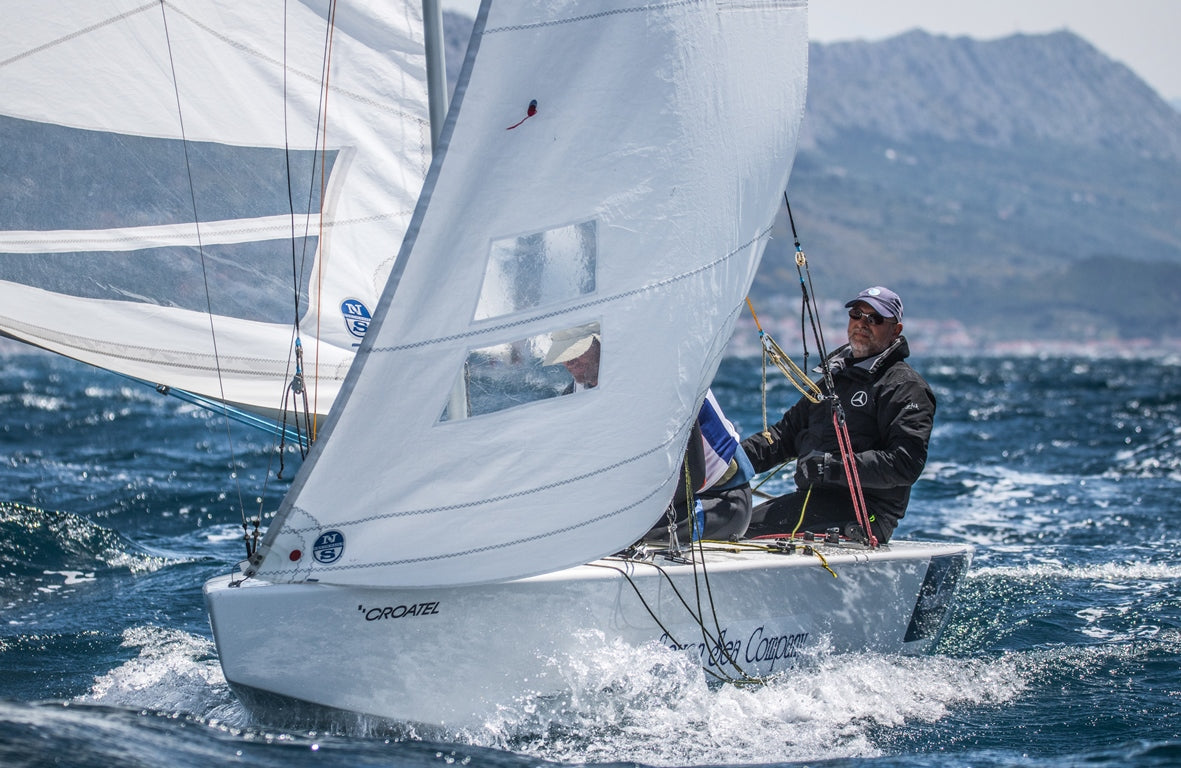
PRVENSTVO 17. DISTRIKTA ZA KLASU ZVIJEZDA
Prvenstvo 17. distrikta za klasu Zvijezda
📸 regate.com.hr
22 jedrilice klase Zvijezda zajedrile su u Splitu na ovogodišnjem Prvenstvu 17. distrikta, regati koju je za njih organizirao jedriličarski klub Mornar. Na ovu prvu veliku regatu, a ujedno i uvertiru za predstojeće Europsko prvenstvo stigle su posade iz Njemačke, Argentine, Danske, Sjedinjenih Američkih Država, Italije, Mađarske, Ukrajine, Češke, Švicarske i naravno, Hrvatske.
Hrvatska je na startnoj listi imala čak šest posada. Najbrojniji su bili predstavnici kluba organizatora, a čak tri među njima bile su u konkurenciji za osvajanje jedne od medalja. Da ne bi sve ostalo samo na statusu favorita pobrinuli su se Tonči Stipanović i Tudor Bilić koji su osvojili zlato, te Mate Arapov i Ante Šitić koji su doma odnijeli broncu.
Između njih smjestila se Njemačka posada Merkelbach - Weise, a Arapov i Šitić imali su vrlo ozbiljnu konkurenciju u Argentinskoj kombinaciji Kouyoumdjian - Voltolini koji su završili regatu na samo bod iza njih.
Regata se jedrila tri dana, ali flota je na moru bila samo u petak i subotu, jer je nedjelja bila prevjetrovita. Odjedren je maksimalno moguć program za ta dva dana, ukupno četiri plova. To je inače jedno od pravila kojih se pridržava ova flota, maksimalno se jedre dva plova na dan. Vjerojatno u tom ima svoj udio i činjenica da je flota uglavnom sastavljena od jedriličara u zrelim godinama kojima nije više toliko do klasičnog dokazivanja i jedrenja do ruba snaga. Istina, na većim natjecanjima koja traju koji dan više moguće je jedan dan organizirati i tri plova, ali to se koristi samo kad uvjeti to omogućuju.
U petak se jedrilo po maestralu. Lokacija je bila klasična za regatu u Splitu, a to je pozicija pored Čiova i Gospe od Prizidnice. Puhalo je laganih 10 do 12 čvorova, ali zato su dan kasnije svi imali priliku pokazati kako se nose i sa zahtjevnijim uvjetima duplo jačeg vjetra i puno većeg vala. Za tu priliku Regatni odbor flotu je odveo ispred Žnjana.
Pobjednička posada, Stipanović - Bilić, jedri zajedno od 2019. i nastupa na Bahamima na finalu Star Sailors League za tu godinu. Nakon te regate postali su standardna posada i nastupali su zajedno u svakoj prilici koju je bila ispred njih, a vrhunac te svježe suradnje bile je 4. mjesto na Europskom prvenstvu prošle godine.
📸 regate.com.hr
U petak smo imali maestral, ali nije bila klasična shema tko prije do Čiova njegovo je sve, već je bilo iz vani. Stvarno je bio jači pritisak s vanjske strane i kako smo se približavali bovi or orce tako je prevladavao veliki lijevi dric, tako da se sve trebalo jedriti s te strane. To sam dobro prepoznao i iskoristio i napravio treće i drugo mjesto s tim da smo se u petak još malo tražili.
Možda smo trebali pobijediti u tom drugom plovu, ali prvu krmu smo pustili Matu da ode vani i onda nas je prošao s vanjske strane. Nakon toga smo imali par grešaka kroz orcu i eto nismo ga uspjeli stići. Ali na kraju smo bili stvarno zadovoljni jer nam je to bio prvi regatni dan s novim brodom i nismo znali kako će sve to izgledati. Bilo je i par manjih problema s opremom, ali uspjeli smo dobro odjedriti.
A subota... kako je vjetar jačao sticali smo dojam da smo išli sve brže i brže.
Oba starta smo mali kasnili. Prvi plov smo htjeli jedriti lijevo, ali sva sreća što nismo tako dobro startali jer smo se morali izvući desno i odmah nakon tog čišćenja smo skužili da nisu uvjeti bili da idemo klasično lijevo kao i uvijek po jugu, već je bolja bila desna strana. Tada smo odmah uspjeli proći sve koji su bili ispred nas ali s lijeve strane i stvarno, što je bilo više vjetra to smo se osječali komodnije i brže u orcu. Posljedica tog osjećaja bila je da smo u drugoj regai s 5-6 mjesta prošli na drugo, a da je bilo još 100 metara krme možda bi ušli i prvi.
Tonči Stipanović, JK Mornar
Što se tiče nedjelje, uvjeti na moru bili su poput onih na kraju drugog subotnjeg plova... konstantno preko 20 čvorova. S obzirom da je ispred sviju još uvijek i Europsko prvenstvo, a u subotu je bilo značajnijih šteta po jedrilicama, natjecatelji su se složili da nema potrebe forsirati i svi su se jednoglasno složili da ne izlaze na more po tako jakom vjetru.
Po pitanju štete definitivno je najveću imala posada iz SAD-a gdje je kormilar globalna legenda i u Zvijezdi i u Šljuci, Augie Diaz. On i flokista mu Christian Nehammer doživjeli su lom jarbola u prvoj krmi drugog subotnjeg plova. Također su bila prijavljena pucanja pataraca, a naša posada Marinović - Akrap ostala su bez pramčanog štraja odmah nakon starta istog tog plova.
Vrlo ozbiljna konkurencija pobjedničkoj ekipi bila je u vidu drugoplasirane posade. Od četiri odjedrena plova rezultati su im se razlikovali samo u jednom plovu. Jedni i drugi imali su po jedno 1., 2. i 3. mjesto, ali prevagu na stranu Mornareve posade odnijelo je drugo mjesto u četvrtom plovu u odnosu na šesto mjesto koje su u trećem plovu osvojili Nijemci.
Borba za treće mjesto između posade Arapov - Šitić i Kouyoumdjian - Voltolini također je bila neizvjesna od samog početka. Juan Kouyoumdjian, kormilar Argentinske posade, također poznat i kao Juan K - jedan od najpoznatijih svjetskih dizajnera regatnih jedrilica, pokazao je malo veću stabilnost po pitanju rezultata, dok je Arapov malo više oscilirao. Razlog nisu bile samo odluke na regatnom polju, već i problemi s opremom, što konkretno čut ćete od Mate:
Zadovoljan sam sa svim, osim što smo u subotu imali dva veća tehnička problema. Prvo je pukao bocel od škote nakon starta prve regate, tako da smo cijelu regatu odjedrili bez njega, a imali smo odličan start i dobru brzinu. Mislim da bi tada ušli u prvih pet bez ikakvih problema.
Drugu regatu nam je isto odmah na startu pukla gornja letva na glavnom jedru, tako da smo cijelo vrijeme morali jedriti bez nje. Tu smo malo izgubili na brzini, ali u prvoj krmi, kad je najjače puhalo, prošli smo neke brodove i napravili razliku toliku da smo drugu orcu mogli izdržati bez te letve i na kraju smo ušli treći.
A trenirat smo počeli iza nove godine. Imali smo plan odmah krenuti ozbiljno se pripremiti. Odjedrili smo desetak treninga, ali onda sam proveo vrijeme u Portugalu do kraja ožujka na pripremama s Austrijancima. Nakon toga sam imao problema s koljenom tako da smo prije regate napravili samo jedan trening.
Ali uspio sam malo naštimati brod. Išli smo dosta dobro i stvarno sam sretan zbog toga. Čak smo i 20 kg laganiji od sviju ostalih, svi imaju nove brodove, a ovaj naš je napravljen 1984.
Nadamo se da je sad puklo sve što je imalo puknuti i da će biti dobra zabava i na Europskom :)
Mate Arapov, JK Mornar
📸 regate.com.hr
Naša treća posada koja je bila u konkurenciji za postolje, Mišura - Barač, završila je na petom mjestu. Solidno su jedrili tijekom cijelo prvenstva, a bljesak koji je dokazao njihove mogućnosti bio je treće mejsto u trećem plovu.
Mjesto ispred njih u toj regati osvojila je naša iduća posada, još jedna pod Mornarevom zastavom, Višić Toma - Lulić Mario. Njih dvojica u petak su bili u sredini flote, ali subota je trebala biti njihov dan. Finiš tog plova imao je svoju dozu dramatičnosti jer je Mario pred samim ciljem upao u more, ali uspio se uhvatiti za klizač vanga na palubi i brzo se vratiti u brod i tako ne dovesti u opasnost ovaj fenomenalni rezultat. Što se tiče nastavka dana, nažalost nisu pristupili četvrtom startu, te su bodovani s UFD, a prvenstvo završavaju na 11. mjestu.
Na 16. mjestu završila je posada Marinović - Akrap. Da nije bilo pucanja čelične sajle koja s pramčane strane drži jarbol i da su četvrti plov uspjeli odjedriti do kraja možda bi bili za jedno ili dva mjesta naprijed, ali u svakom slučaju mogu biti zadovoljni konstatntnošću svojih rezultata po širokom rasponu uvjeta na moru.
Odmah iza njih završava dvojac De Micheli Vitturi - Olujić. Oni su dobro odjedrili u petak, ali u subotu su se prije starta trećeg plova povukli s regatnog polja jer su htjeli sačuvati opremu za Europsko prvenstvo.
A na dvadesetom mjestu završila je posada Han Robin - Žaja Mate.
Kompletne rezultate Prvenstva 17. distrikta možete pronaći na ovom linku, dok je bogata i atraktivna fotogalerija subotnjih jedrenja dostupna na ovom linku.
READ MORE
READ MORE

MIRPURI SAILING TROPHY PREVIEW
GETTING RACE-READY IN CASCAIS WITH THE MIRPURI FOUNDATION SAILING TROPHY
North Sails Named Official Sailmaker for the Second Edition
📸 Mirpuri Foundation Sailing Trophy
North Sails is proud to be named Official Sailmaker to the Mirpuri Foundation Sailing Trophy. First sailed in 2020, this plastic-free sustainable regatta combines competitive sailing with marine conservation, directly linking our sport to protecting the beautiful but fragile ocean.
Around 100 offshore boats, including both conventional and high-performance cruisers, are expected to participate in the second edition, June 3rd-6th, 2021 in Cascais, Portugal.
“The Mirpuri Foundation Sailing Trophy aims to be one of the main sailing events in the world,” says Paulo Mirpuri, President of the Mirpuri Foundation. “Marine conservation is a crucial cornerstone of our activities at the Foundation and inspires The Mirpuri Foundation Sailing Trophy. We believe in the power of sport to bring people together and raise awareness of our planet’s challenges.”
📸 Mirpuri Foundation Sailing Trophy
The regatta will overlap with The Ocean Race Europe. When the fleet of IMOCA 60s and VO65s arrives in Cascais for the first stop of their summer adventure. A coastal race will contribute to the fleets’ overall race scores. One of those VO65s is the Mirpuri Foundation Sailing Team. Another important vehicle for the Foundation’s central message of ocean health.
North Sails Cascais will provide overnight repair services, including pickup and delivery service for all sailors during the regatta.
Please contact the loft directly at +351 916 830 166, speak with our local service team phone loft manager Vincente Pinheiro at: +351 916 857 896.
READ MORE
READ MORE
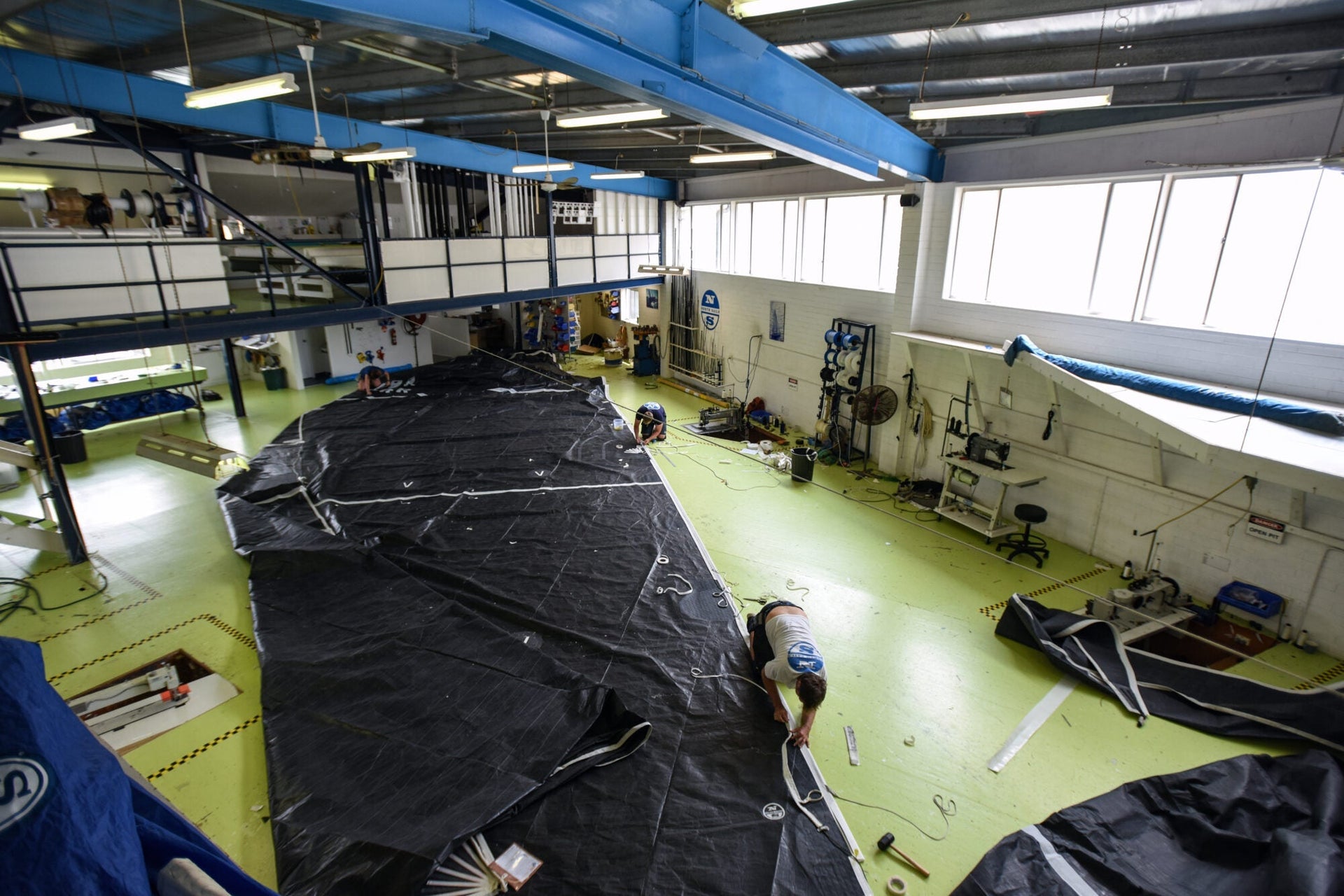
YOU'RE INVITED: SYDNEY OPEN HOUSE
YOU'RE INVITED: SYDNEY OPEN HOUSE
We Look Forward to Seeing You There
North Sails invites you to an Open House day at the Sydney loft on Saturday 3rd July at 10:00. Joined by North Kiteboarding and North Sails Performance clothing, our experts will run live One Design and Cruising seminars, sail repair lessons, unveil the latest North kites, talk all things foiling and take a look at the newest dinghies from NB Sailsports. Secure your spot and RSVP today!
10:00:
Welcome
11:00:
One Design seminar panel with Rob Greenhalgh and special guests Scott Babbage and Phil Harmer. The group of experts will share their knowledge of dinghy and small boat sail trim. The seminar will be hands-on, with the panel using a rigged skiff as an example of mast setup and what to look for.
13:00:
Cruising sails seminar: what should you look for in a cruising inventory? What is new from North? Our experts talk Helix Furling Gennaker, Tradewind sail, and 3Di OCEAN to share how these products might benefit you. They will also discuss Furling vs. Snuffing, Furlers, and In-Mast Furling. Special guests include Jan Scholten from Selden Masts.
15:00:
Close
RSVP TODAY
READ MORE
READ MORE
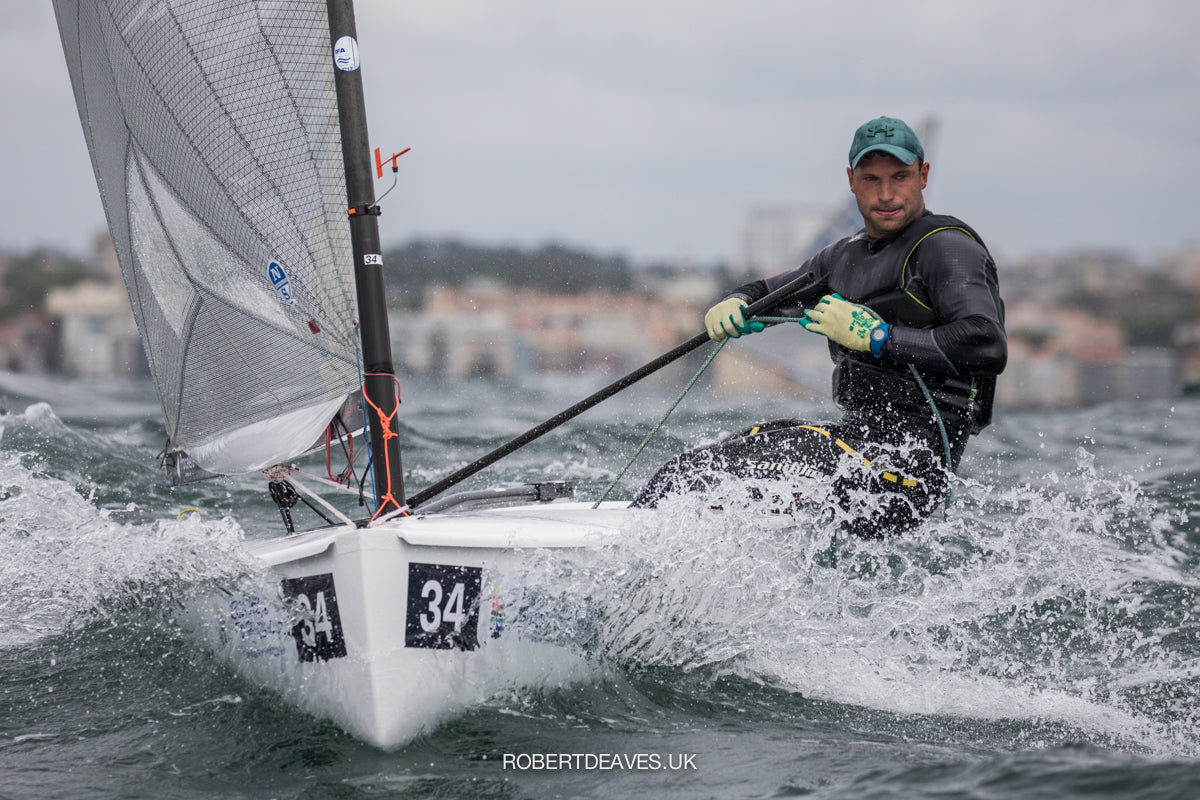
NENO JE 5. NA SVIJETU!
Neno je 5. na svijetu!
📸 Robert Daves
Ovogodišnji svjetski centar jedrenja, Portugal, bio je domaćin jedne od regata za Finn Gold Cup. Regata se jedrila u gradu Portu, a ujedno je imala i status Svjetskog prvenstva klase i bila je adresa na kojem se mogla dobiti posljednja karta za odlazak na Olimpijske igre u Tokiju koje će se organizirati ovog ljeta.
Na regati koja je bila organizirana između 5. i 12. svibnja sudjelovala su naša tri najbolja jedriličara u ovoj klasi. Najiskusniji među njima bio je najbolji europski master prošle godine, Milan Vujasinović - JK Val, Šibenik, a u konačnom plasmanu smjestio se između dva člana JK Labud iz Splita. Jedan od njih je Josip Olujić, a drugi je Nenad Bugarin koji je ostvario rezultat karijere i regatu u Portu završio na fenomenalnom petom mjestu!
Nažalost, to peto mjesto nije sa sobom donijelo i glavni cilj sudjelovanja, odnosno kartu za Tokio, jer je nju osvojio Španjolski jedriličar Joan Cardona koji je ovo Svjetsko prvenstvo završio na drugom mjestu.
📸 Robert Daves
Što se tiče jedrenja ona su trebala trajati pet dana, međutim, vremenski uvjeti na Atlantiku nisu baš dozvolili da jedriličari postavljaju svoje zahtjeve. Najveći problem bio je val koji se formirao tko zna koliko daleko od Portugala i koji dok je došao u pliće vode ispred kontinenta polako prerasta u brda visočija od jarbola. Kako je to izgledalo na licu mjesta saznali smo od Nene:
Evo došli smo doma prije dva dana, vozili smo u komadu od Porta do Splita, tako da sam se uspio malo odmoriti. A što se tiče regate, od pet dana jedrili smo samo tri.
Svaki od tih dana jedrili smo po tri plova. Ostala dva dana nismo uopće izašli na more. Uvjeti su nažalost bili nejedrivi. Vani je bio ogroman val... imali smo swell od 4 metra, plus što je vjetar je stalno mijenjao smjer. Jedan od tih dana smo proveli šest sati na moru i jedrenje po takvim uvjetima je stvarno bilo strašno.
Uvjeti su bili stvarno neuobičajeni za nas i nisam siguran da li je itko bio na njih stvarno spreman. Trebalo se brzo na njih adaptirati i to je bila totalna nepoznanica za veliku većinu flote.
U dolu vala bi skroz ostali bez vjetra iako je puhalo do 15 čvorova. Tako da su to bili uvjeti koji su iziskivali jedan težak fizički rad i mislim da je na kraju bilo presudno to tko je ta tri plova uspio odraditi kako treba da je i imao dobar rezultat.
Sve je puhalo iz vani... raspon kuteva bio je od juga do zapada.
Svaki plov prvog dana nam je trajao u prosjeku sat i petnaest minuta. Kasnije je RO to smanjio na sat i 5, ali svejedno su bile ekstremno duge regate.
Razlog tako teškom moru bilo je to što nas je uhvatio rep ciklone koja je prelazila preko Atlantika. A jedan od ta dva dana kad nismo jedrili nismo uopće ni izašli na more. Dobili smo zabranu od lučke kapetanije, jer kako se sve to odigravalo na ušću rijeke, tu se stvarao kontra kurenat, val je bio veći i uopće se nije moglo izaći na more. I taj dan je kapetanija naložila da se moramo vratiti na kopno do 14 sati.
Najviše mi je žao trećeg plova regate, kad sam ušao 21. Imao sam nesreću da je ispod mene na startu bio jedan Portugalski master koji je taj plov bio preko linije i onda sam njemu upao u šiju odmah nakon starta. Još sam se našao i na krivoj strani, a uvjeti uopće nisu bili takvi da napravim tako loš rezultat.
A ostale plovove sam napravio na vrlo dobroj razini i stvarno mogu biti ponosan na to. S druge strane Španjolac je jedrio bez greške cijelu regatu, vrlo disciplinirano, na vrhunskom nivou i zasluženo je osvojio mjesto na Olimpijadi.
Nenad Bugarin, JK Labud
Neno se za tjedan dana vraća u Porto i u Santander, jer ima obaveze prema svom Mađarskom kolegi s kojim je proveo posljednje dvije godine u zajedničkim treninzima i pripremama. Mađar se uspio plasirati na Olimpijadu i njih dvojice će imati pripreme do kraja lipnja, a početkom srpnja Neno s njim putuje u Japan gdje će mu biti podrška i sparing partner.
A nakon završetka olimpijske regate Neno završava s aktivnom sportskom karijerom i okreće se svojoj profesiji. Kako je završio Pomorski fakultet kreće s pomorskim zanimanjem i navigavanjem po svjetskim trgovačkim rutama.
8. lipnja se očekuje konačna informacija o statusu klase Finn na Olimijskim igrama, ali 99% su šanse da su Igre u Tokiju posljednje na kojima će se nadmetati ovi teški samci.
Primat definitivno preuzimaju "leteće" klase, odnosno daske, kiteovi i jedrilice s foilovima, odnosno klase koje pomalo gube dodir s tradicionalnim jedrenjem na koje je naviknula većina jedriličara i okreće se modernim super brzim klasama koje garantiraju atraktivnost u većoj mjeri, a što je prvenstveno traženo za postizanje televizičnosti, odnosno povećanja minutaže koje će prosječni gledatelj nadmetanja na OI provesti uz male ekrane i morske sportove.
Sa sličnim odlukama po pitanju nastavka sportske i profesionalne karijere susreće se i drugi Labudov predstavnik iz klase Finn, Josip Olujić.
📸 Robert Daves
Josip je također cijelu svoju seniorsku karijeru posvetio jedrenju u klasi Finn i nakon što se potvrdi najava o izbacivanju iz Olimpijskih sportova ni on nema namjeru pokušavati u nekoj novoj disciplini koju World Sailing definira kao budućnost.
Valove te veličine nismo susreli niti za vrijeme treninga ni inače dok smo bili i u Portu i na Kanarima. Sjeverno od nas je prolazila ciklona i taj val je dolazio od nje, a da nije bilo nešto što je uobičajeno govori i to što nas port authority jedan dan nije pustio na more, a jedan smo se morali vratiti do vremena koje su nam oni zadali. Naime, kako nam je klub u kojem smo boravili bio u ušću rijeke, taj kurenat od plime kad okrene smjer stvarao je još divljije valove.
A uvjeti po kojima smo jedrili su bili oceanski... istina, zbog tolikog vala su bili drastično drugačiji od onih na koje smo naučili, tako da ne moru reći da sam bio skroz spreman plus neke moje greške, imao sam za posljedicu to da nisam mogao složiti dobru regatu.
Nažalost zbog ta dva dana bez jedrenja i toga što smo imali po tri duga plova tih dana što smo jedrili, nije bilo prilike da se resetiram i posložim.
Ne bi rekao da sam imao tremu zbog kvalifikacija na Olimpijadu i da je trema imala svoju ulogu u rezultatu, jednostavno nažalost nisam bio na razini na kojoj sam inače.
Nažalost ni ja ni njih dvojica nismo uspjeli ostvariti normu, koja je definitivno bila cilj svakome od nas. Evo već treći put smo bili nadomak realizaciji, dva puta ja (Aarhus 2018. i u Grčkoj 2019.) a sad Neno.
Možda je razlog ovome i to što nam je obojici ovo prva ozbiljna olimpijska kampanja u dosadašnjoj karijeri. Konkretno što se mene tiče, ja sam tek nakon što sam diplomirao na ekonomskom fakultetu 2016. godine počeo s kompletnim fokusom na jedrenje. Tako da mislim da smo tim neiskustvom na neki način platili ovu cijenu.
A po pitanju nastavka sportske karijere, evo i ja čekam objavu što će biti s Finnom nakon Tokija. Po svemu sudeći ta priča se završava, a i ja ću se onda povući iz olimpijskog jedrenja, jer nema smisla da se sad okrećem nekoj drugoj klasi. To bi bio neki potpuno novi početak u kojem bi se sigurno trebao spustiti za desetak kilograma ili i više, a pitanje da li bi mi takva egzibicija s tijelom dala željeni rezultat.
Eventualno bi mogao probati s Laserom, ali kroz tu klasu sam relativno brzo prošao davnih juniorskih godina... a tu su već Tonči i Gašo, tako da mislim da to ne bi bila dobra odluka i onda mi ne preostaje ništa drugo nego počet raditi i živjeti ozbiljno :)
Josip Olujić, JK Labud
Inače je Josip regatu završio na 25. mjestu, dok je naš treći predstavnik u ovoj, kako se znalo govoriti - kraljevskoj klasi, Milan Vujasinović završio na dobrom 15. mjestu.
📸 Robert Daves
Do Milana nismo uspjeli doći jer je njegov i privatni i profesionalni život trenutno vezan uz Valenciu. Tamo živi i radi i zasnovao je obitelj, a po svim objektivnim okolnostima uzimajući u obzir njegove godine, ovo je i njemu bio posljednji pokušaj da kao natjecatelj sudjeluje na Olimpijskim igrama.
Kako su u cilj ulazili u svakom od odjedrenih 9 plovova možete pronaći u rezultatima na ovom linku.
Sigurno je kod svih ljubitelja jedrenja prisutna žal za nesudjelovanjem CRO jedra na regati u Tokiju, ali možemo biti sigurni da su naši momci dali sve od sebe i žalimo im puno uspjeha u nastavku karijere u kojem god smjeru izaberu da je nastave.
READ MORE
READ MORE
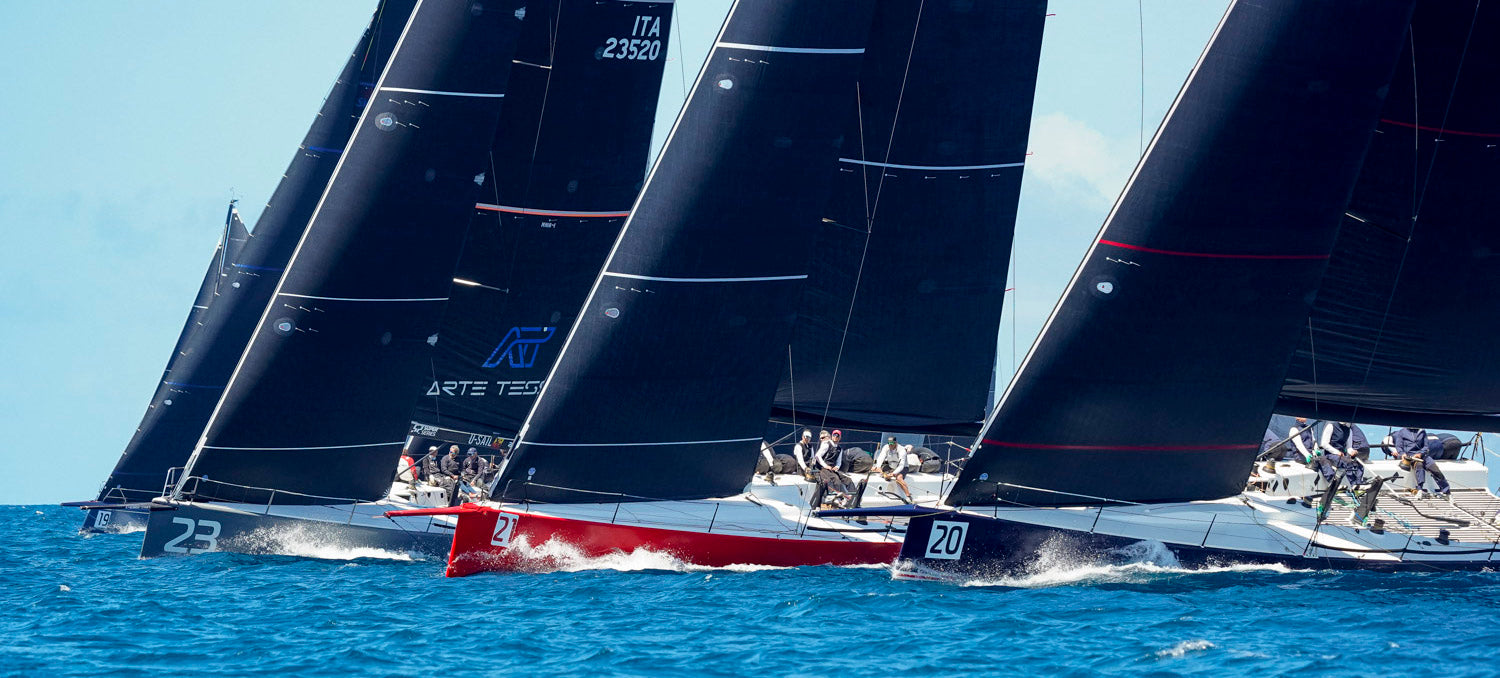
#NSVICTORYLIST: ORC EUROPEANS
#NSVICTORYLIST: ORC EUROPEANS
High-Level Competition Marks the First Major Event on the Med
📸 Carlo Borlenghi / ORC European Championship
The Gulf of Naples in Italy challenged 62 teams for the 2021 edition of ORC Europeans, the first big event on the Mediterranean. Sailors from around the world competed in a mix of offshore and inshore buoy races . Teamwork and speed were the key to transitioning through tricky wind conditions, and North clients turned North Sails 3Di into a winning recipe.
Five races were fit into the first two days, and day three decided the top spots. Marco Serafini’s TP52 XIO won Class A, with Fever and Freccia Rossa rounding out the podium.
North Sails expert Daniele Cassinari who sailed on XIO commented:
“This year Class A had more participants, so the starting line was full of highly competitive sailors. It feels great to walk away with a win–especially considering how tough our competition was. The venue is beautiful and having the turnout amongst the classes was nice to see after the pandemic. I want to congratulate the race committee officials for running a fantastic event, and with some lingering restrictions they were professional and did a really nice job. North Sails clients sailed a great regatta, taking the overall win across the board as well as the top five spots in two of three divisions– clear dominance!
Team XIO did a great job, with the crew being our key to success. We have great sailors onboard, 3Di sails, and a new asymmetric spinnaker that helped us make it happen. My brother, also a North sail expert, Giovanni Cassinari, Ciccio Celon, North Sails Alessandro Battistelli, Alberto Fantini, Michele Gnutti, Ciccio Scalicci and Luna Rossa’s Francesco Mongelli made a very good team. A big thanks goes to XIO owner, Marco Serafini and the team manager Gabriele Giardini for bringing us together to sail this event. It was a lot of fun.”
Vincenzo De Blasio’s Italia 11.98 Scugnizza triumphed in Class C. In Class B, Swan 42 racing was very close, and the one point lead held by Andrea Rossi on Mela after five races wasn’t enough to hold off Simonelli’s Fantaghirò’s bullet on the last day. Another Swan 42, Renzo Grottesi’s Be Wild* lost a tiebreaker with Mela for third. Close behind in fourth was Catalin Trandafir’s Essentia44, a Grand Soleil 44.
A prize was awarded to the best performing ClubSwan 42 in the largest class, which went to Fantaghirò, owned by North client Carlandrea Simonelli in Class B. In the Corinthian divisions, clients Alberto Magnani’s Tengher and Dr. H. Bruening’s Topas took first in Class A and C.
Bruno Finzi, President of the Offshore Racing Congress, commented: “The Gulf of Naples has a fantastic regatta course, displayed to its fullest during this European championship. If it had not been for the restrictions on travel, we would certainly have had a record number of participants. This year with 62 boats on the water, we can safely say that this regatta marks a return to racing.”
📸 Carlo Borlenghi / ORC European Championship
📸 Carlo Borlenghi / ORC European Championship
📸 Carlo Borlenghi / ORC European Championship
📸 Carlo Borlenghi / ORC European Championship
READ MORE
READ MORE
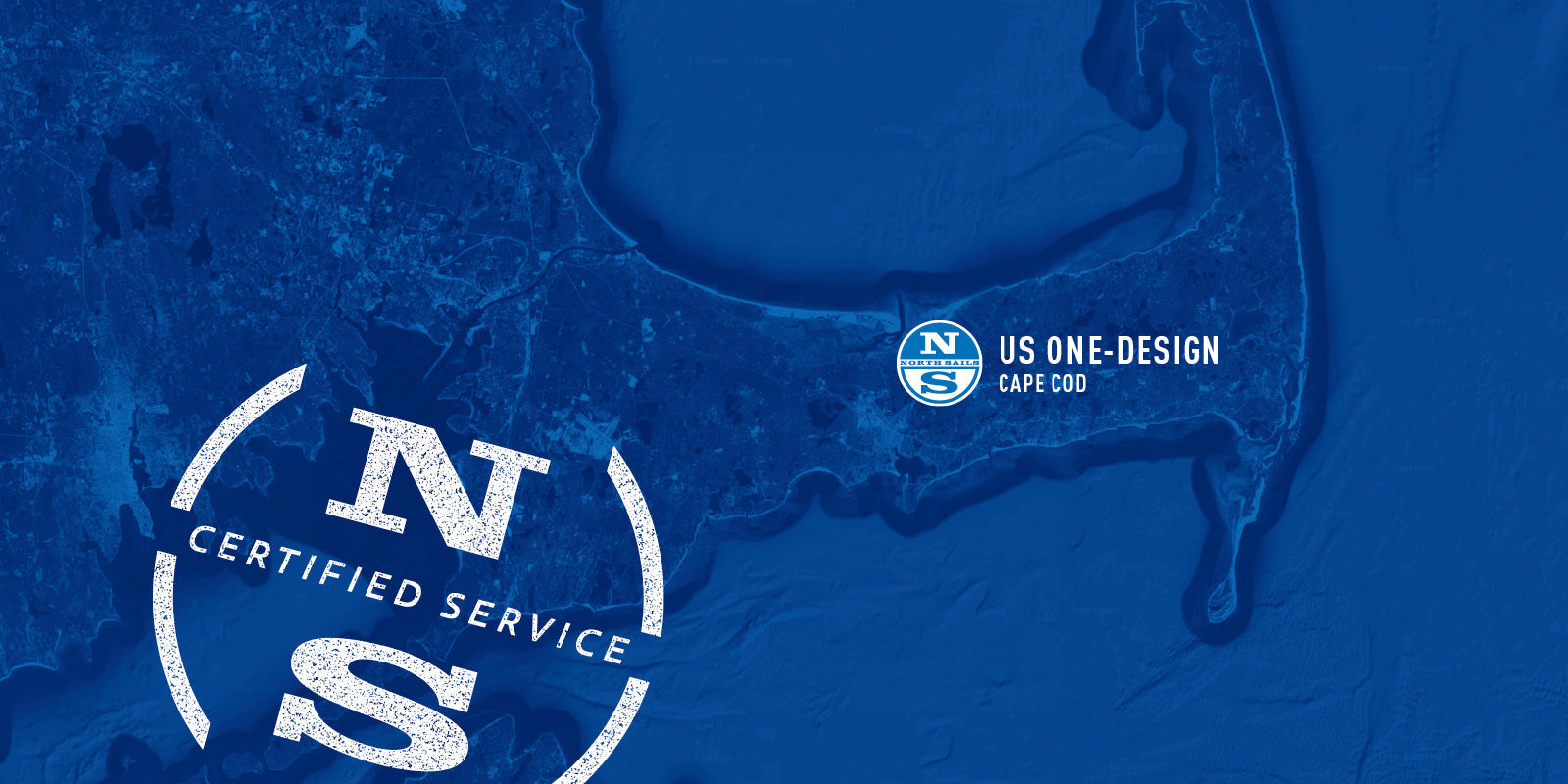
NORTH SAILS TEAMS UP WITH US ONE DESIGN
NORTH SAILS PORTSMOUTH TEAMS UP WITH US ONE-DESIGN
New Drop-Off Location to Support All Sailors in The Cape
North Sails Portsmouth is excited to announce their partnership with US One-Design in Yarmouth, Massachusetts. The partnership will see US One-Design become a Certified drop-off location for North Sails Service, with the intention of providing top-of-the-line sail service for sailors on the Cape and Islands.
US One-Design
Sail Drop-Off & Pick Up
80 Mid Tech Drive
West Yarmouth, MA 02673
North Sails Service Manager Eric Wakefield shares:
"North Sails RI is excited about the new drop off location at US One-Design. This will allow us to work more closely with the sailing community out on the Cape. As we know, logistics can be an issue in the height of our season and having this functioning drop-off site will allow us to help more clients in the future."
The most experienced team in sailmaking, North Sails is positioned to deliver expert repairs, maintenance, and upgrades in a timely manner. Whether you need an emergency repair, recut or annual washing and storage, your Certified Service team will keep your sails looking their best.
MAP ME THERE CONTACT THE LOFT SCHEDULE DROP-OFF
READ MORE
READ MORE
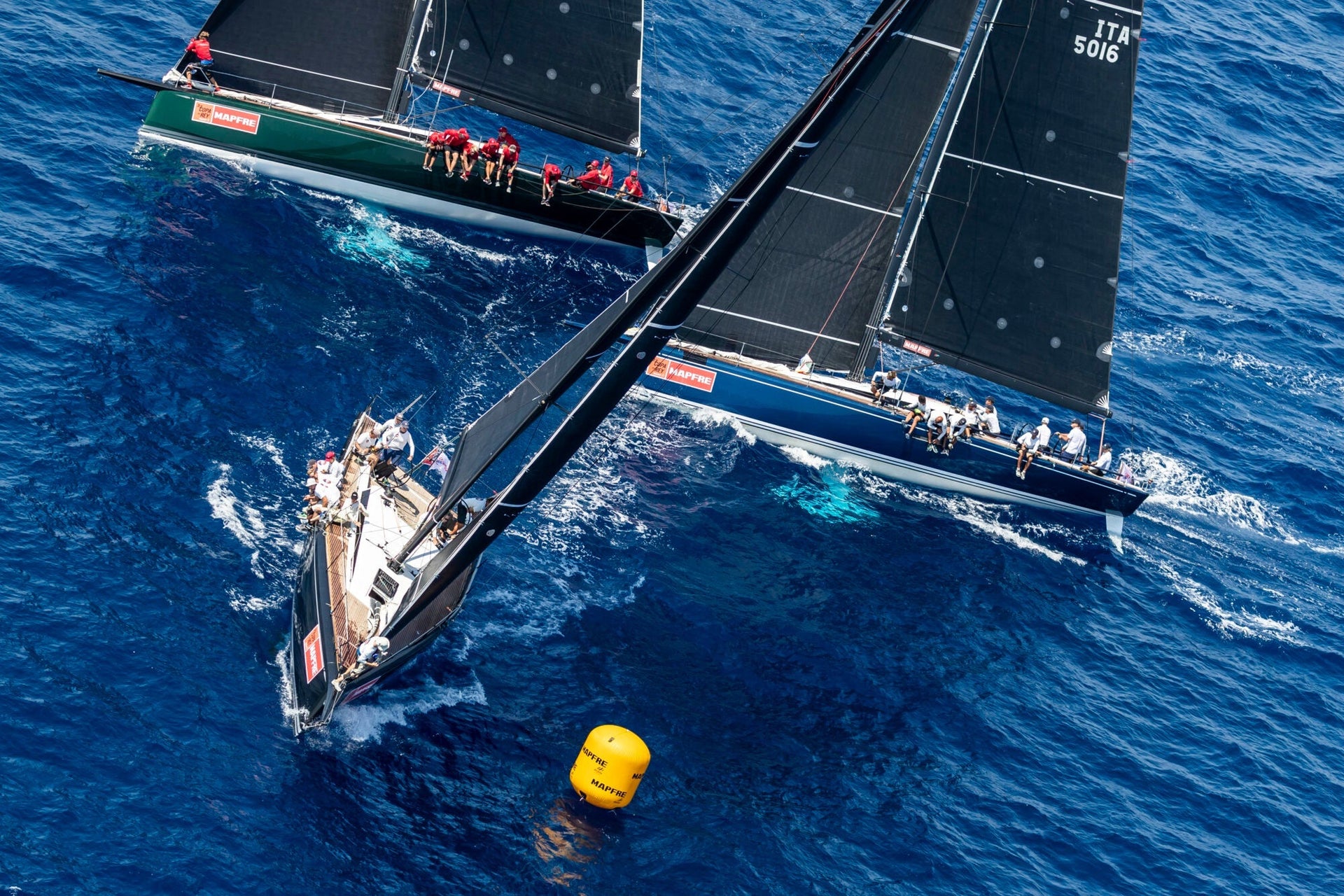
HOW NORTH SAILS BECAME THE GLOBAL LEADER IN SAILMAKING
THIS IS HOW NORTH SAILS BECAME THE GLOBAL LEADER IN SAILMAKING
By combining innovation and excellence with consistency and worldwide reach, North Sails is at the top of its industry.
📸 Carlo Borlenghi
When Lowell North left an aerospace engineering job in 1957 to establish North Sails, he didn’t realize he was starting a company that would soon become the global leader in sailmaking. But his unique style—science-based sailmaking, rather than the usual seat-of-the-pants approach—couldn’t have been better timed.
By 1960, polyester Dacron had begun to replace stretchy cotton as the sail material of choice. Suddenly it was possible to build repeatable, predictable sail shapes, kicking off a mid-century sailmaking revolution that affected every part of the industry—much the same way that 3Di is currently changing every aspect of sailmaking today.
Scientific firsts
Lowell’s first science experiment was to test different types of Dacron for durability. “We began by attaching to the antenna of my car,” Lowell said in a 2017 interview celebrating 60 years of North Sails. “We called it flutter testing, and later built an in-house machine, which spun the attached samples on a rotating wheel or arm.” The result? A new understanding of warp and weave that would inspire North Cloth, the company’s in-house producer of proprietary materials. Today, the North manufacturing team tests every lot of woven or laminated sailcloth used in a North sail, using proprietary processes and equipment, to evaluate performance and durability.
Other innovations followed that first flutter test. CEO Tom Whidden says Lowell North achieved a long list of firsts in the 27 years he was president. “He was the first to use patterns; he was the first to use computers; he was the first to use cutting machines. He made software that looked at sail design very logically, and software that measured stress and strain.”
As the company grew, North gained a reputation for fast, repeatable designs around the globe. Sails with the round blue and white logo logged wins at all the big events, from the Olympics and Star Worlds to the America’s Cup. North products also began to dominate long-distance racing fleets like the 1981-82 Whitbread Round the World Race (now The Ocean Race).
📸 Raphael Demaret
Sail Molding
In 1987, when Whidden took over as CEO (right after his successful recovery of the America’s Cup, as tactician for Team Dennis Conner), he embraced what had already become a North trademark: innovation. Hearing about a new approach to sail manufacturing, a patented sail molding process, Whidden was certain it was the right step forward. “We’ve been building sails the same way for so many years… Finally, there was a technological system; we could actually make sails and the sailcloth together.”
What would become 3DL, and has since evolved into today’s ground-breaking 3Di, required an enormous technological and financial investment. But it would cement the position of North Sails as sailmaking’s global leader.
Fastest Sails Around the World
On Christmas Day of 2016, Thomas Coville shattered the previous solo around the world record (57 days) with a final elapsed time around the planet of just over 49 days. He called North Sails a trusted partner—because the company believed in him before he succeeded, but also because his 3Di sails were completely trouble-free. “Before we succeed, we fail a lot. We make mistakes, but we never give up. And now North Sails is the fastest sailmaker around the world today. It’s a fantastic achievement!”
In December 2017, Colville’s impressive record was broken once again—this time by François Gabart, who finished his own circumnavigation in just under 42 days. “All our sails are North Sails 3Di,” he says. “I started working with North because they had made a big investment in R&D to get to a material that was strong, light, and solid. They also have a team that is super successful at working with people. It’s important to create a closeness between the sailing team, the design team, the architects, and the sailmaker. It’s a team effort to ensure that across the board, the boat goes fast. And this is what we’ve done with North for a long time now, and we are delighted. There are many good reasons to work with them.”
📸 Christophe Launay, Sodebo
Outside the box, but in-house
Today, North continues to deliver the top-quality products customers have come to expect, while also constantly moving forward with that important company culture—science-based innovation. One reason both are possible is North’s unique proprietary approach to all aspects of sail design and manufacturing. A worldwide network of expert designers and manufacturing teams work together on a wide spectrum of sailmaking projects: from testing materials, to molding a 3Di Grand Prix jib, to finishing a paneled cruising mainsail.
With so many different ground-breaking projects going on at once, cross-pollination happens quite naturally. Adventure sailing ideas help build more reliable cruising products while theories tested in AC75s will help win races at local races around the world. Meanwhile, consistency is maintained around the globe because everyone in the company—local loft experts, a roster of world-renowned sail designers, and the manufacturing teams at the dedicated facilities (Minden, Nevada and Sri Lanka)—is held to the very high standards laid out in the North Sails Blue Book.
📸 Ian Roman
Teamwork
Fast sails can’t stand up on their own, though, which is why the North Technology Group also includes two sister companies: Southern Spars and Future Fibres. North Sails also designs and manufactures its own sail hardware.
The only way to remain the global leader of sailmaking is to continue to deliver consistently excellent and innovative products to customers all around the world. Fortunately, North Sails has spent more than half a century doing just that: a natural expansion from the original vision and culture established by its founder. As CEO Tom Whidden points out, Lowell North’s “whole model of looking at things scientifically made it pretty easy for the people who followed behind him.”
For more North Sails history, read our 60 Years stories.
📸 Jesus Renado / SailingEnergy / North Sails
READ MORE
READ MORE
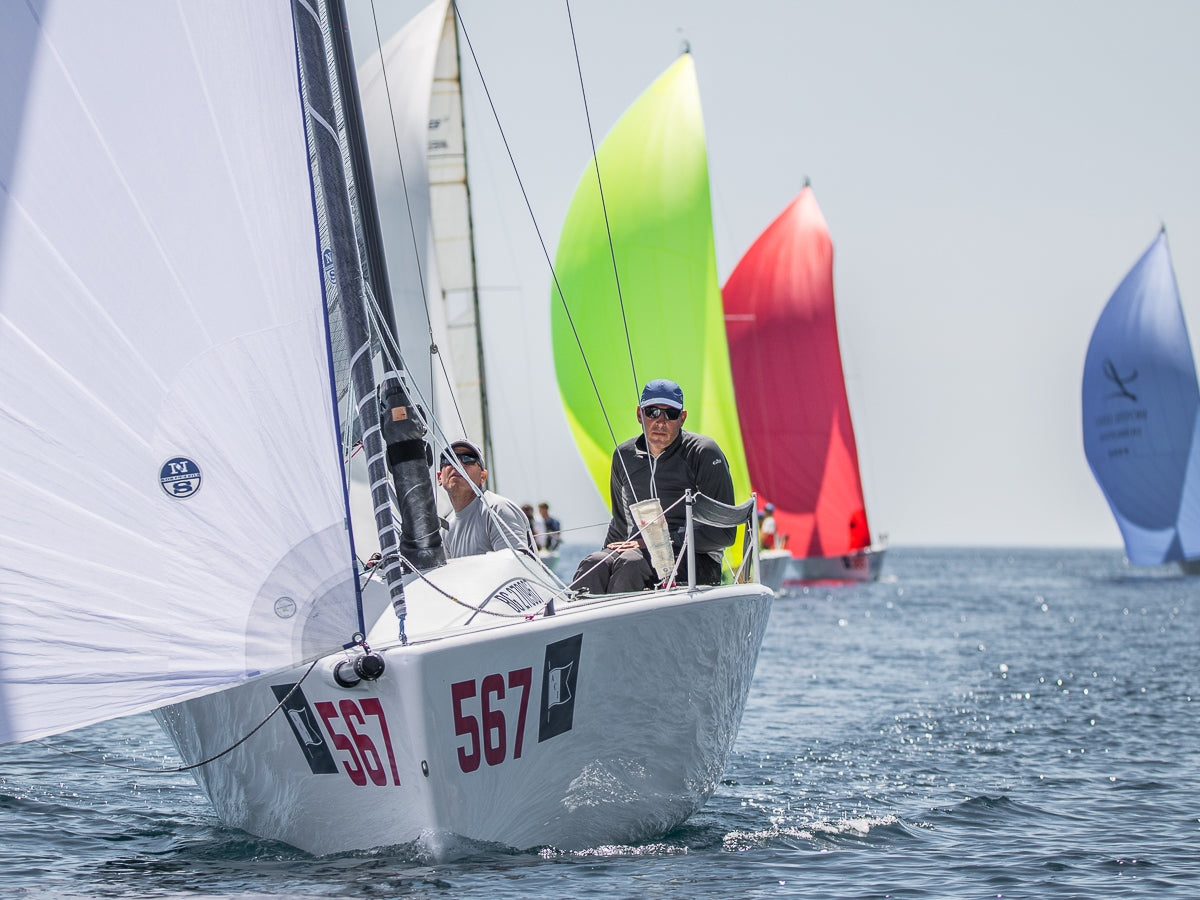
TWO LIONS CHALLENGE PONOVNO POSADI MELGESA 24 - 567
Two Lions Challenge ponovno posadi Melgesa 24 - 567
📸 regate.com.hr
Hrvatska liga klase Melges 24 uspješno je nastavila s jedrenjem i u ACI marini Ičići, partnerima YC Croatia - organizatora regate, okupila sedam posada među kojima su dvije imale svoj premijerni nastup.
Nove ekipe u ovoj atraktivnoj monotip klasi su posada Cro-a-sail tima i ekipa na jedrilici Iggy.
Cro-a-sail tim vjerojatno ne treba posebno predstavljati, osim možda mlađim čitateljima koji nisu upoznati s jedriličarskim akcijama ovog tima od prije dvadesetak godina. Za njih ćemo se prisjetiti da je to (za to vrijeme, a vjerojatno i u današnjim okvirima) bio jedini pravi Hrvatski profesionalni jedriličarski tim s iskustvom jedrenja na najvišoj svjetskoj razini.
Ovu ekipu okupio je Miroslav Reljanović, a najpoznatiji njihovi nastupi bili su na ORC regatama na Firstu 36.7, odnosno na njihovoj jedrilici klase RC44, u vrijeme kad je klasa bila apsolutni hit na svjetskoj jedriličarskoj sceni.
To je trajalo nekoliko godina, a nakon toga jedrenje nastavljaju na manjim jedrilicama, poput Melgesa 20 s kojim aktivno jedre posljednjih godina. Ovo im je bila i inače prva regata u klasi Melges 24, a jedrili su na jedrilici Strilica, posuđenoj u Splitu.
Druga ekipa koja je prvi put zajedrila na ovom eventu je posada jedrilice Iggy. Posada je kombinirana od vrlo iskusnih jedriličara od kojih su neki i u suvlasničkim ulogama, a u njenom sastavu u monotip se ponovno uključuje Karlo Kuret naš višestruki olimpijski jedriličar u klasi Finn.
Ostali sudionici bili su Blue Label - domaćini i organizatori regate, Panjić, Lero, Noplizić (ex.Obi) i Cezibordo.
Za jedrenje su iskorištene obje predviđene lokacije. Ranojutarnja zona bila je u samom kutu Riječkog zaljeva, ispred Voloskog na jutarnjoj tramontani, a druga lokacija je bila par stotina metara južnije od marine u Ičićima, a tu se odjedrio jedini poslijepodnevni plov u subotu.
Oba dana prvi startevi bili su zakazani za 06:30, a isplovljavanje je bilo oko 05:45. Nekima je ovo bio prvi susret s ovom praksom koja je praktički svakodnevica za lokalne jedriličare, dok su se neki prisjetili juniorskih i kadetskih dana kad su ovaj akvatorij posjećivali dok su jedrili u Optimistima i Laserima.
Subotnja tramontana bila je nešto slabija nego ona u nedjelju i kraće je trajala. Taj plov je ujedno i jedini skraćen. Skraćenje se odigralo kod drugog dolaska na offset i stvarno je bilo napravljeno u pravi trenutak jer je uskoro vjetar nestao s regatnog polja. Nakon toga RO nije imao previše opcija na raspolaganju i najnježnija prema natjecateljima bila je da se svi vrate u marinu i pričekaju da zapuše najavljeni maestral.
Čekanje je trajalo do podne i ubrzo se starta po laganom vjetriću iz čistog juga. Jedrenje je bilo dosta zanimljivo jer su bile česte promjene u redoslijedu, a to je najbolje da vidite u playbacku.
Nakon ulaska posljednje jedrilice u cilj vjetar ponovno iščezava s mora i flota ide natrag u marinu i to je bilo sve za subotu.
Što se tiče nedjelje, prvi start je signaliziran desetak minuta prije nego u subotu, a i snaga tramontane je bila sigurno duplo veća. Možda najmjerodavnije mjerilo bila je prisutnost surfera u istoj zoni.
S obzirom na brzinu vjetra i udaljenost između starta i oznake orce, prvi plov se odjedrio u tri kruga. Respektabilne brzine i atraktivnost jedrenja na jednakim jedrilicama ovog puta je povećalo užitak praćenja regate malobrojnoj publici na moru. Ovog jutra apsolutnu dominaciju cijelo vrijeme imala je posada Panjića. Prednosti ostvarivane nakon starta nisu više ispuštali do cilja, a samo povremeno znali su im se približiti posade Iggyja, Noplizića i Cro-a-saila. Što se njih tiče možda bi primjereno bilo reći da su tijekom ta dva plova oni bili dosta izjednačeni po prikazanom jedrenju jer nitko od njih nije posebno dominirao, a stalno su bili na bliskoj udaljenosti.
Pred kraj prvog nedjeljnog plova tramontana je ponovno malo popustila pa RO donosi odluku da se četvrti plov jedri u dva kruga. Nakon starta dosta izjednačeno se jedri prema orci, ali Panjić ponovno izbija na čelo i ostvarenu prednost ne ispušta do kraja.
Slabljenje tramontane se nastavlja i tijekom ovog plova, ali je ipak ostaje dovoljno da se pokuša i treći plov.
Nakon samo par minuta pauze kreće predstartna procedura, jedrilice kreću, ali nakon nekoliko stotina metara RO podiže November i šalje flotu na kopnu, da bi se nakon dodatnih sat-dva zaključilo da je to bilo sve za ovaj vikend podno Učke.
O regati smo popričali s predstavnikom domaćina, Petrom Smojverom:
S organizacijske strane bilo nam je dosta napeto, što zbog Korone i pratećeg pitanja koliko će na kraju posada doći, te zbog otkazivanja u posljednji tren i najavljenih sudionika i volontera koji su nam na početku ponudili svoju pomoć kako radom, tako i gumenjacima i ostalom opremom.
Tako da je taj segment regate bio buran, pogotovo posljednjih nekoliko dana, ali na kraju je sve ispalo super.
Mislim da nitko nije imao primjedbe. Regatni odbor je odlično odradio svoj dio posla i izvukao maksimum iz vremenskih uvjeta koji su nam bili na raspolaganju. Ljude nismo previše gnjavili... i to je to. Mislim da smo se dobro predstavili kremi Hrvatskog jedrenja.
Mislim, sve posade su se pojačale od Biograda, što s ljudstvom, što s opremom. Vidi se da je bilo ulaganja u jedra, pozivanja novih članova posada i drago mi je da jedan drugog guramo naprijed!
Meni osobno i Davoru Jelačić, kao jednima od prvih vlasnika Melgesa u Hrvatskoj, stvarno je drago da smo dio te priče.
Realno gledajući mi smo tu potpuni amateri i stvarno nam je drago sudjelovati u svim ovim događanjima. Mislim da se sad stvorila jedna kritična masa i da je u pitanju priča bez povratka. Naravno, svaka klasa ima svoje uspone i padove i sad je ovo svima vrlo zanimljivo. Možda se za nekoliko godina nekim posadama više neće biti toliko zanimljivo sudjelovati, ali ono što je važno je da su jedrilice tu i može doći netko drugi iz Hrvatske. Brod je super. Pruža zadovoljstvo i profesionalcima i amaterima. S njim se može jedriti i na vrhunskom nivou i biti konkurentan na lokalnim regatama. Tako da je to to... nema povratka!
Petar Smojver, Blue Label - YC Croatia
📸 regate.com.hr
Susret u Ičićima iskorišten je i za prvi susret Hrvatskih posada sa službenim premjeračem klase Melges 24. Iz Slovenije je stigao g.Branko Parunov u prijateljski savjetnički posjet našim jedriličarima. Svi koji su htjeli mogli su doći dan ranije i s Brankom napraviti pregled usklađenosti njihovih jedrilica s pravilima klasa, a održan je i jedan sastanak na kojem se razgovaralo o svemu što je važno kako za opremanje jedrilica, tako i za jedrenje.
U svakom slučaju to je bilo vrlo korisno iskorišteno vrijeme u subotnjoj pauzi između tramontane i maestrala.
Kompletne rezultate regate možete pronaći na ovom linku, dok u nastavku članka možete pronaći playbackove sva četiri plova.
P L A Y B A C K - 1. PLOV
P L A Y B A C K - 2. PLOV
P L A Y B A C K - 3. PLOV
P L A Y B A C K - 4. PLOV
Iduća regata iz Melges 24 Croatian Sailing Series u kalendaru je rezervirala vikend od 25. do 27. lipnja i jedrit će se u Dubrovniku.
READ MORE
READ MORE
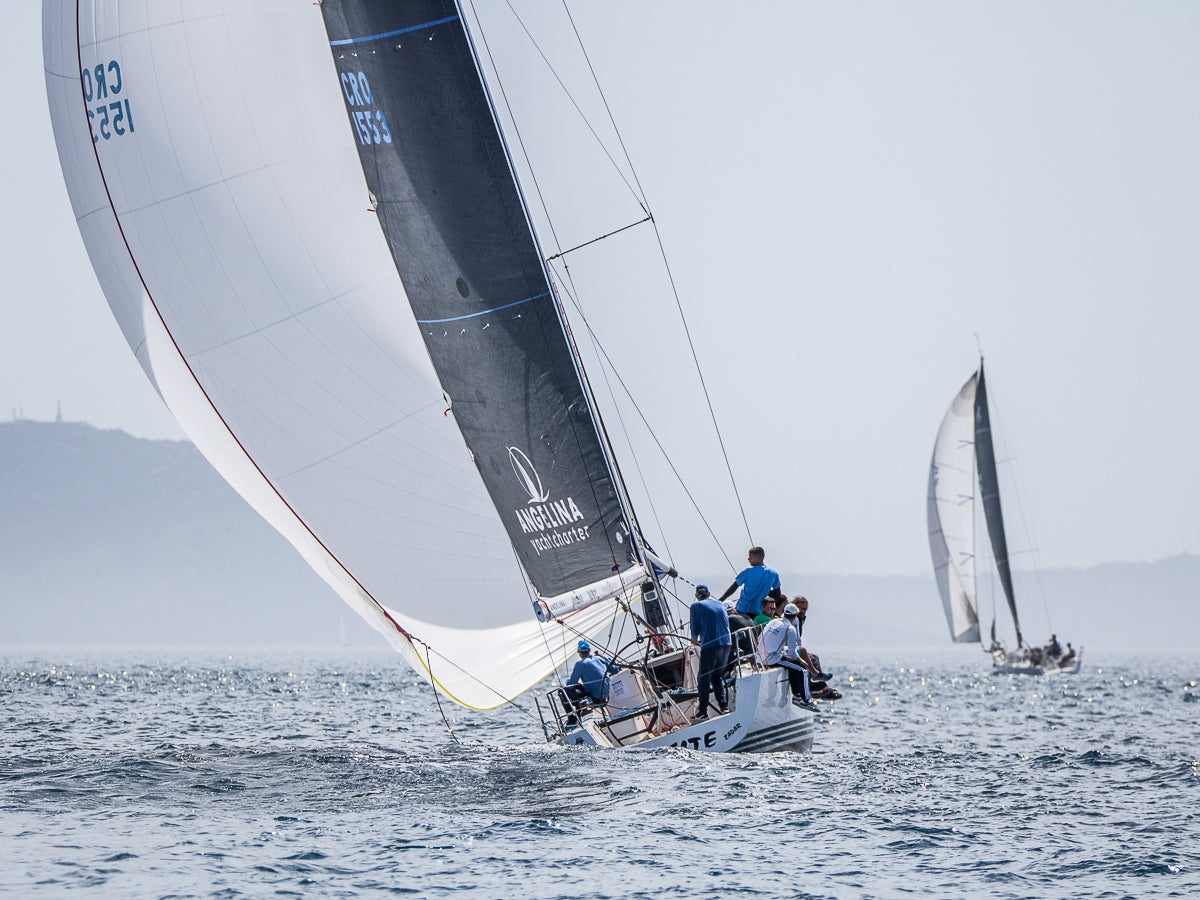
SVA TRI MJESTA NA POSTOLJU NS KLIJENTIMA!
Sva tri mjesta na postolju NS klijentima!
📸 regate.com.hr
Šibenik ORC Cup bio je jedna od zahtjevnijih ORC regata posljednje vrijeme, a glavni razlog su zahtjevni vremenski uvjeti koji su išli od laganog juga praćenog s ne baš zanemarivim valom, koje je pojačalo na preko 25 čvorova, da bi idućeg dana bio skoro pa nedostatak vjetra. Ali detaljnije o svemu u nastavku.
Pozitivna atmosfera oko CRO ORC D-Marin Cupa koja je vladala na prvoj regati u Zadru nastavila se i u Šibeniku na regati čiji domaćini su bili glavni sponzori regate iz D-Marin Mandalina i JK Val kao organizator. Ono što sigurno najviše veseli sve uključene u ovu priču je to što je flota bila čak i brojnija nego u Zadru, a među novim sudionicima bile su čak tri posade kojima je ovo bio prvi nastup u touru.
Od sudionika iz Zadra nedostajali su samo ekipe s JOD-a 35 - Žut i Elana E5 - Elaya, ali zato su svoju promociju imale posade na Archambaultu 40 - Erco D', bivšem Gringu 2, Saloni 34 - One (zajedrila je nova ekipa predvođena njenim novim vlasnikom Antom Kovačevićem koji je ranije jedrio kao taktičar na Mareusu II) i mladi Trogirani na Melgesu 32 OD - Mataran 32.
Kako su se vlasnički odnosi po pitanju ovih jedrilica mijenjali u proteklih pola godine, a u tom periodu nije bilo ozbiljnijih regata, ova regata im je uglavnom služila kao uigravajući test u najjačoj konkurenciji koja se može naći u Hrvatskoj kad su krstaši u pitanju, tako da su i dalje glavnu riječ imala standardna imena i posade na koje smo već godinama naučili vidjeti u vrhu ORC rezultata.
Regatno polje bilo je smješteno na uobičajenoj lokaciji kad je Šibenski akvatorij u pitanju, u trokutu između Zlarina, Prvića i Obonjana, dok se navigacijski plov jedrio po istoj ruti kao onaj kojeg smo imali priliku pratiti na Prvenstvu Hrvatske prošlog studenog, a možda najvažnije za spomenuti je da se uspjelo odjedriti svih pet predviđenih plovova. U subotu su se odjedrila dva, oba po jugu. To jugo je krenulo vrlo lagano i bilo je praćeno dosta nemirnim morem s valom koji je poprilično usporavao manje jedrilice.
Kako je dan odmicao vjetar je polako jačao, a s njim je rasla i nervoza na startnoj liniji, pa se start drugog plova morao ponoviti zbog preuranjenog prelaska startne linije nekolicine sudionika. Zbog procedure koja se u tom slučaju mora poštivati "izgubljeno" je desetak minuta koje su se jedriličari u idućem plovu mogli mnogo bolje iskoristiti. Naime, vjetar u drugom plovu bio je nešto jači nego u prvom i osiguravao je dosta dobro jedrenje tijekom prve orce i prve krme, ali dok je flota jedrila drugu orcu naglo je počeo jačati. Veliki su to relativno dobro podnosili u orcu, dok su maleni bili značajno usporeni, a vjerojatno bi izabrali i manje flokove. Ovako su morali jedriti u "overpowered" modu.
S druge strane taj mod jedrenja velike jedrilice dočekale su u trenucima obilaska offseta, pa su neki od njih imali i problema s genakerima i spinakerima.
Vjerojatno najveći problem, a potencijalno i najopasniji u ovom plovu, doživio je Damaco. Sreća u nesreći je to što im se nezgoda desila prilikom spuštanja genakera prilikom obilaska gatea, dok vjetar još nije drastično pojačao. Njima je genaker završio ispod trupa i zbog problema s izvlačenjem izgubili su dosta vremena tako da su taj plov morali odustati.
Naravno, kad je vjetar ekstremno pojačao RO je mogao donijeti samo jednu odluku, a to je da se nakon ulaska posljednje jedrilice u cilj flota šalje u marinu i nastavlja se u nedjelju.
📸 regate.com.hr
Vremenski uvjeti u nedjelju su bili sušta suprotnost. Oko 10 sati, za kad je bio predviđen prvi start, puhalo je svega nekoliko čvorova sa zapada, tako da se slobodno moglo krenuti s navigacijskim plovom, jer uvjeti za jedrenje u štap polju stvarno nisu bili zadovoljeni.
Ruta navigacijskog plova bila je već isprobana prije sedam mjeseci na ORC PH 2020. Ukupna duljina bila je nešto veća od 19NM, a jedriličari su je prejedrili čak i brže nego prvi put. Zapadnjak sa starta počeo je jačati već prilikom izlaska iz Zmajanskog kanala. Smjer vjetra i kurs jedrenja bili su vrlo zahtjevni u smislu jedrilja koje su imali na raspolaganju.
Riječ je o jednoj od novosti koje je ORC počeo primjenjivati u 2021. a odnosi se na "penalizaciju" flying jedara. Ovisno o ORC certifikatima za pojedinu jedrilicu, ona mogu imati značajan utjecaj na kalkulaciju rezultata u štap jedrenjima, a u kojima bi se koristila u rijetkim uvjetima. Tako da ih je većina posada izbacila iz svoje opreme za ovu sezonu, ali bi im bila od ogromne pomoći u ovoj navigaciji. Tako da su se neki pomagali sa spinakerima, a neki su mogli koristiti jedino najveće flokove...
Nakon završetka navigacijskog jedrenja odmah se krenulo , sad po sjeverozapadnjaku, jedriti još jedan štap.
Ciljano vrijeme od oko sat vremena jedrenja sve jedrilice su uspješno ispunile, pa je ostalo vremena i za peto jedrenje. Orca u ovom plovu bila je postavljena na istom mjestu kao i u prethodnom plovu, ali vjetar je počeo slabiti i okretati u lijevo, pa se morao usidriti i "charlie". Pozicija mu je bila oko 30° više u lijevo nego prvoj orci, a s obzirom da je vjetar počeo i slabiti na njemu je skraćen ovaj plov.
Kako su se jedriličari snalazili u svim tim situacijama možete vidjeti na playbackovima, a također i zainteresirani mogu napraviti i numeričku analizu pomoću podataka u statističkoj sekciji, a ako vas jedino zanimaju konačni rezultati, njih možete pronaći na ovom linku.
Rezultati
1. plov
2. plov
3. plov - navigacija
4. plov
5. plov
Statistika
STAT - 1. PLOV
STAT - 2. PLOV
STAT - 4. PLOV
STAT - 5. PLOV
Playbackovi
P L A Y B A C K - 1. PLOV
P L A Y B A C K - 2. PLOV
P L A Y B A C K - 3. PLOV - NAVIGACIJA
P L A Y B A C K - 4. PLOV
P L A Y B A C K - 5. PLOV
READ MORE
READ MORE
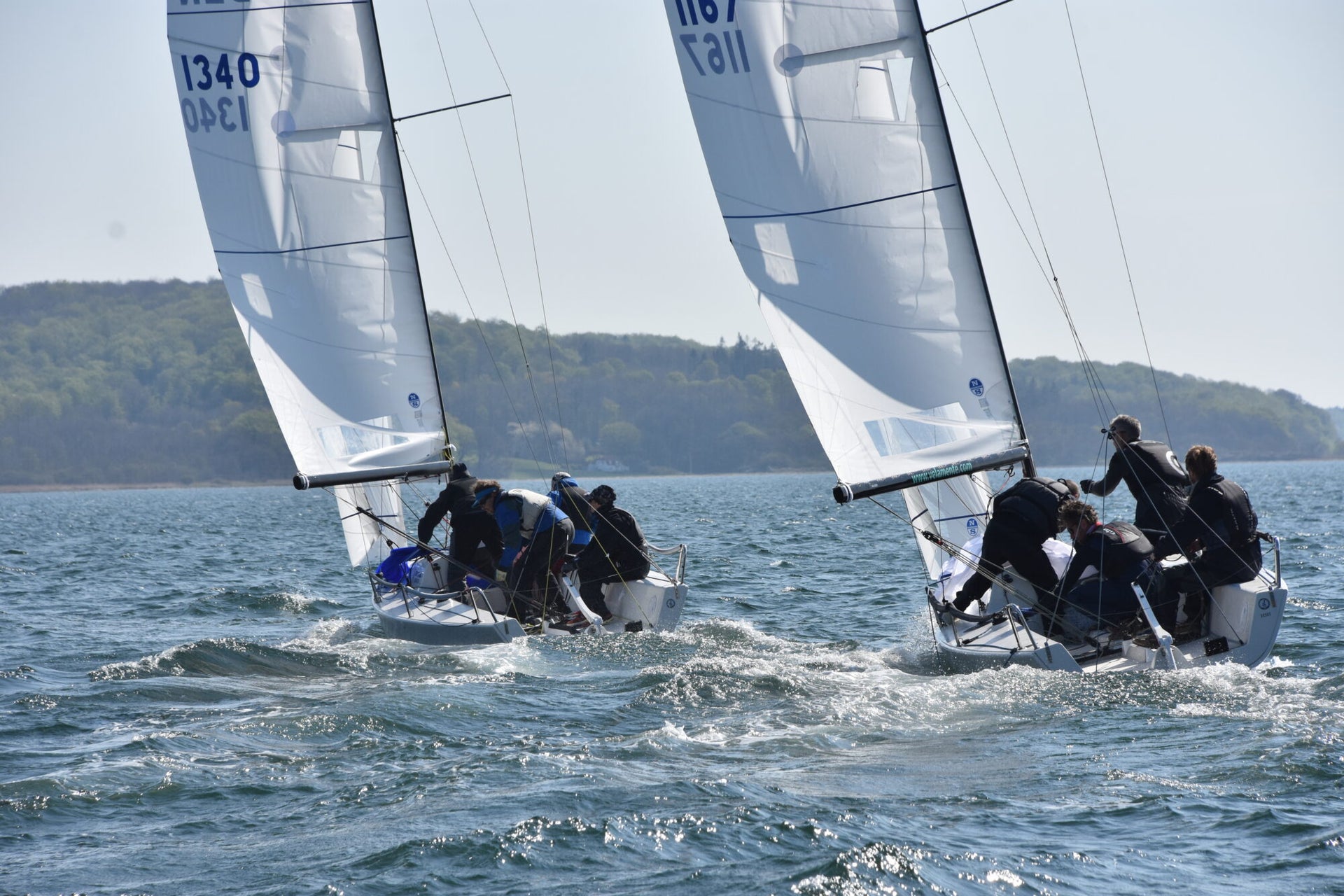
GRUNDIG SAILING CUP SKUDT GODT I GANG
GRUNDIG SAILING CUP SKUDT GODT I GANG
Weekendens vinder førte an med det nye XCS-4 storsejl og mandskab fra North Sails
📸 Jan Jacobsen/ Grundig Sailing Cup / Sejlklubben Neptun Vejle
Holdet og jeg har sejlet en del sammen i sejlsportsligaen men havde ved årets første J/70 stævne lånt en båd af min gavmilde kollega fra North Sails, Henrik Søderlund. Tak Henrik.
Vi kender hinanden godt og og har styr på bådhåndteringen. Det giver en god ro i båden og overskud til at se ud over banen.
Vi var virkelig sultne efter at komme på vandet og komme i gang med den sæson der ser ud til at blive en hel del sjovere end 2020.
Som trimmer ombord havde jeg nok at se til, da vi sejlede inde i Vejle fjord. Med super springende vind og alt fra 8-18 knob. Det var en stor udfordring at blive sat rigtigt op i de forhold. Så omstilling var nøglen til et godt resultat.
Jeg er sikker på at baneleder, Peter Lûbeck, også havde nok at se til i de krævende forhold tæt ved land.
Sejlklubben Neptun Vejle havde sat en del kræfter ind så alle følte sig velkomne og det lykkedes. Alt blev afviklet på bedste måde. Godt gået SNV.
Vi fik endelig set det nye storsejl XCS-4. Efter at havde sat båden op og skruet lidt på sagerne, fik vi godt styr på sejlet og fandt en fin balance. Sejlet er jævnt og nemt at arbejde med.
J/70 feltet vokser i Danmark og der kommer flere og flere dygtige sejlere i klassen, jeg er sikker på vi vil have et godt kompetitivt felt inden for få år.
Det er tydeligt at klassen har set at North Sails har brugt en masse kræfter på at bygge gode sejl til J/70.
Der er blevet bygget gode sejl og sammen med en god trimguide virker det. Båden bliver glad.
Vi ser alle sammen frem til det kommende EM på Øresund hvor 150 hold fra hele Europa kommer og viser vejen. Altid sjovt at sejle mod de bedste.
Denne gang vandt vi og vi glæder os til vi skal sejle igen allerede næste weekend ved Sejlsportsligaens første stævne i 1. Division i Middelfart.
📸 Jan Jacobsen/ Grundig Sailing Cup / Sejlklubben Neptun Vejle
📸 Jan Jacobsen/ Grundig Sailing Cup / Sejlklubben Neptun Vejle
📸 Jan Jacobsen/ Grundig Sailing Cup / Sejlklubben Neptun Vejle
📸 Jan Jacobsen/ Grundig Sailing Cup / Sejlklubben Neptun Vejle
📸 Jan Jacobsen/ Grundig Sailing Cup / Sejlklubben Neptun Vejle
📸 Jan Jacobsen/ Grundig Sailing Cup / Sejlklubben Neptun Vejle
READ MORE
READ MORE
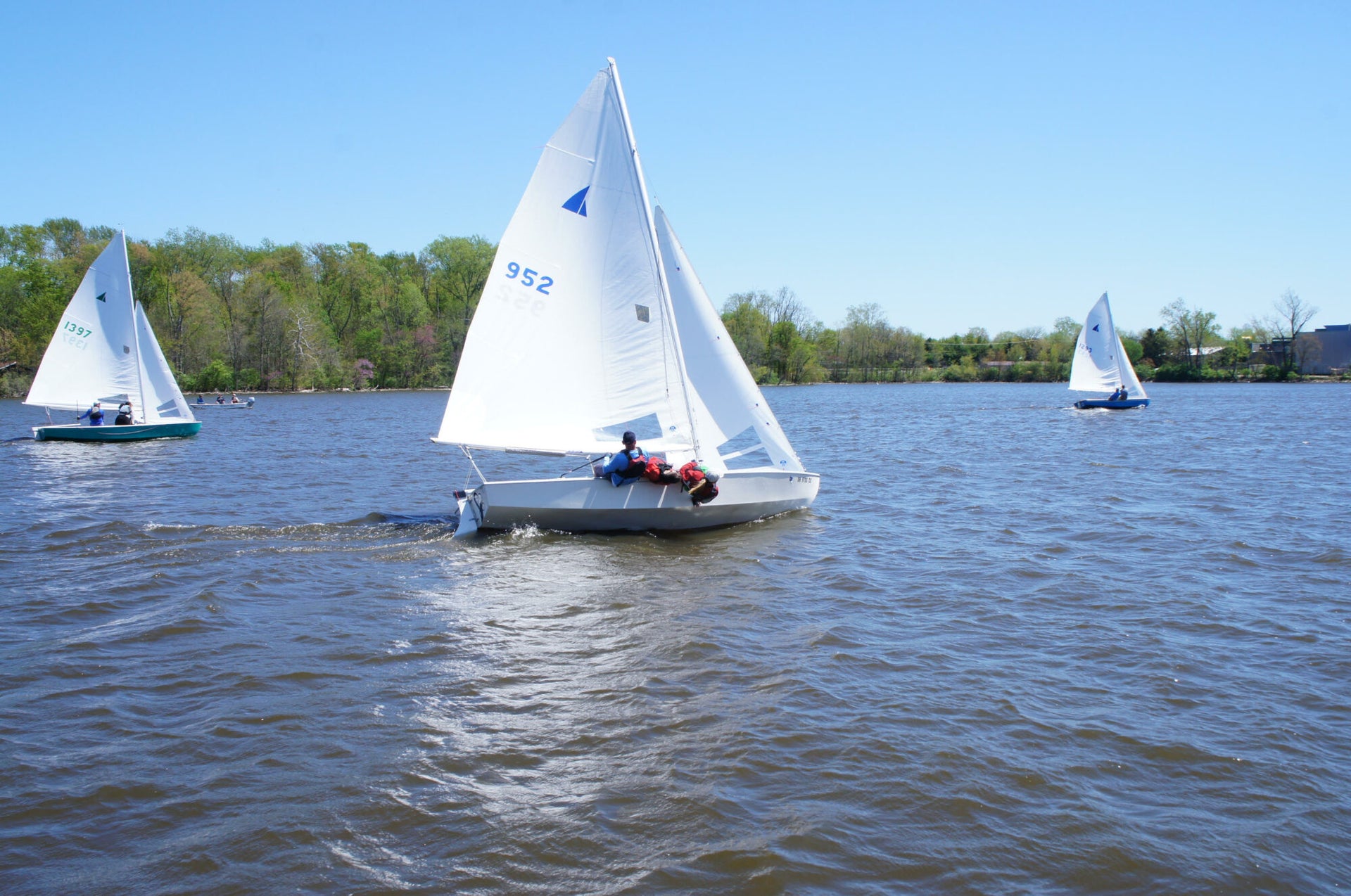
INTERLAKE CHIEFS REGATTA, A FAMILY AFFAIR
INTERLAKE CHIEFS REGATTA, A FAMILY AFFAIR
Congratulations to the Ireland Family!
Team Ireland hiking hard! 📸 J.P. Clowes
The Interlakes Chiefs Regatta, hosted by Leatherlips Yacht Club, brought challenging conditions to the 19 teams participating. Sailing on the damned Scioto River in Columbus Ohio, Nate Ireland held on for a one-point victory over Tim Boucher and 4 points over third-place AJ Savage in the four-race series. It was a total North Sails sweep of the podium. Nate was joined by his wife Bridget and eleven-year-old son Vincent to round out the winning team.
“Getting to the first mark after a short first beat was very important” states Nate. “Even though we didn’t have the greatest of starts or positioning at times, we still managed to work our way towards the top of the fleet every race”, Nate continues “The one race we did have a great start we held on to the lead and extended the whole way”.
The Irelands showed great boat speed working their way through the fleet using their new North VII Main, VII Jib, and il Maxo Spinnaker.
Nathan loves bringing his son Vincent along on events like this. This season they are training him to do the spinnaker work on the boat. Eventually, Nathan, says Vincent, will go on to crew for other club members opening up a crew spot for Vincent’s nine-year-old brother Quinton to join the family team.
Congrats to Team Ireland!
SHOP INTERLAKE SAILS
📸 J.P. Clowes
📸 J.P. Clowes
READ MORE
READ MORE
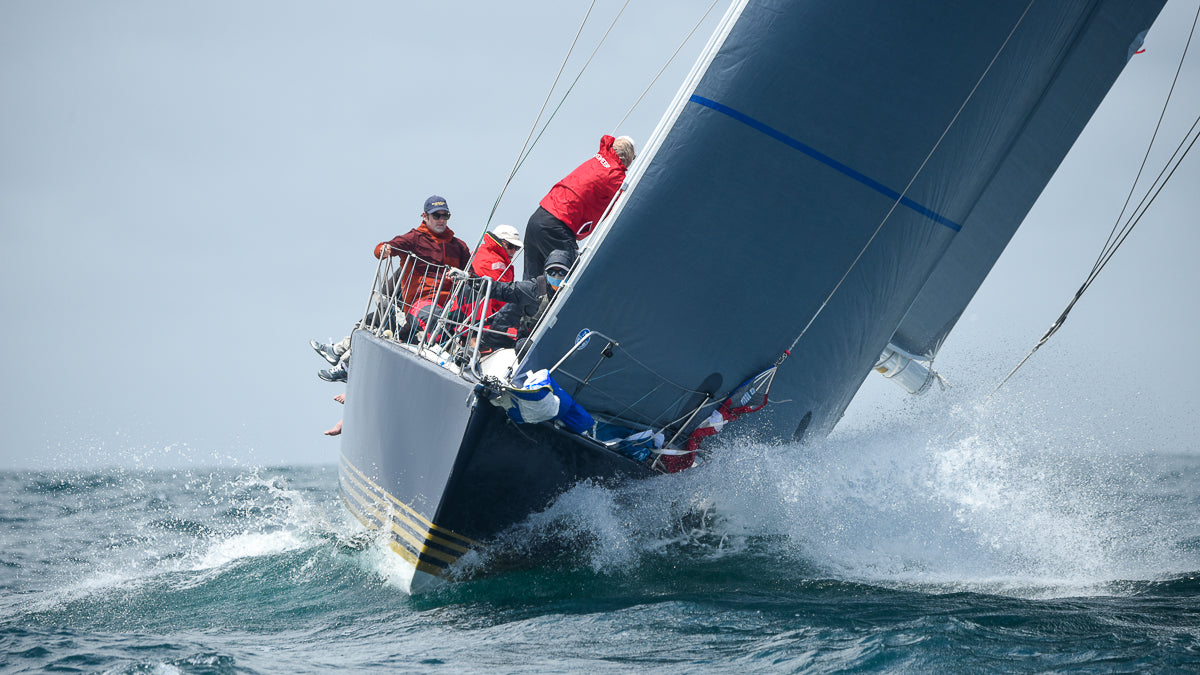
A YACHTING CUP TO REMEMBER
A YACHTING CUP TO REMEMBER
Getting Back On The Water Has Never Been So Great
© Mark Albertazzi
Tell us about the conditions of the race/event.
Saturday started out with light to medium southerly breeze that shifted a bit to the right (West) through the day, but stayed on the lighter side. The fleets from the offshore course sailed a long “race to the barn” that was a windward leeward course followed by an upwind beat to channel marker SD 1 with the finish line back into the bay, close to SDYC.
Sunday was a different story. A rough sea state and more breeze filled in throughout the day. The pressure started a bit less than expected, but came up as the day went on with reports of wind speed in the low 20’s. The combo and the breeze made for a serious day on the water for all teams. There was a bit of attrition across the board as teams struggled with the rough conditions.
How did this year's race differ from 2019? More or less competitors, more OD? Or more PHRF?
The fleet this year was on the smaller side with 46 boats, but a significant increase from the 30-boat fleet in 2020. We had strong One Design racing in the J/105, Beneteau 36.7, and 40.7. We also had strong fleets in the 40’ PHRF group–the racing was extremely competitive.
Who stood out during the weekend of racing?
We have a couple of North Sails clients that stood out during the event. The infamous Pyewacket, featuring a complete 3Di Raw sail inventory, came 1st in PHRF A while Blue Blazes finished 2nd in PHRF A. The RP 50 features 3Di 760 Endurance sails. Finally, J OK, a J/105, were the overall regatta winners with North Sails headsails, Li6 and Mi5, onboard.
In your opinion, what was the main highlight of the regatta weekend?
The race to the barn on Saturday was a highlight, but the conditions that the fleets had to deal with on Sunday for sure would be the overall highlight. Having some shoreside activities after racing on Saturday was also very well received; not to mention some drinks and live music (with guest Patrick Murray!) The entire weekend felt like things are starting to get close to how they were pre-Covid.
© Mark Albertazzi
Who should everyone keep an eye on this season?
The Beneteau 40.7 Lugano is a boat to keep a close eye on. They won their class easily, with North Sails duo John and Mark Baxter on board. They will be even faster when John gets the 3Di sails on the boat–look out!
The Farr 40 Dark Star was coming on strong on Sunday in the rough conditions, but had dug too big of a hole on Saturday to get to the top of the leaderboard. If they get going sooner, they’ll be serious contenders.
The Thomas 35 Echo was crewed by a majority of the SDYC junior sailors. For sure, they’re getting better all the time with more experience on the big boats. It was great to see them out there doing well and having fun. They had a bit of a hard time in the rough conditions on Sunday, but really well done by team Echo–keep an eye out for them.
Why should clients on the west coast choose North Sails?
North Sails hosted a webinar previewing the event providing knowledgeable intel on what was expected on the racecourse. Those who logged on got tips about the trends on the racing area lately with a few hot tips on the left and a bit of insight on the breeze being a fair bit higher than forecast.
What’s next on the horizon for racers?
For the most part, the southern California sailing scene is going to be going into “offshore” mode. We have the California offshore race week coming. This is a relatively new event that has combined three races: Spinnaker cup (SF-Monterey) Coastal Cup (Monterey -Santa Barbara) and the So Cal 300 (Santa Barbra - SD by way of the cortez bank offshore buoy). This is one of the last chances for teams to warm up for the Premier offshore event on the west coast Transpac, starting Mid-July.
© Mark Albertazzi
© Mark Albertazzi
READ MORE
READ MORE
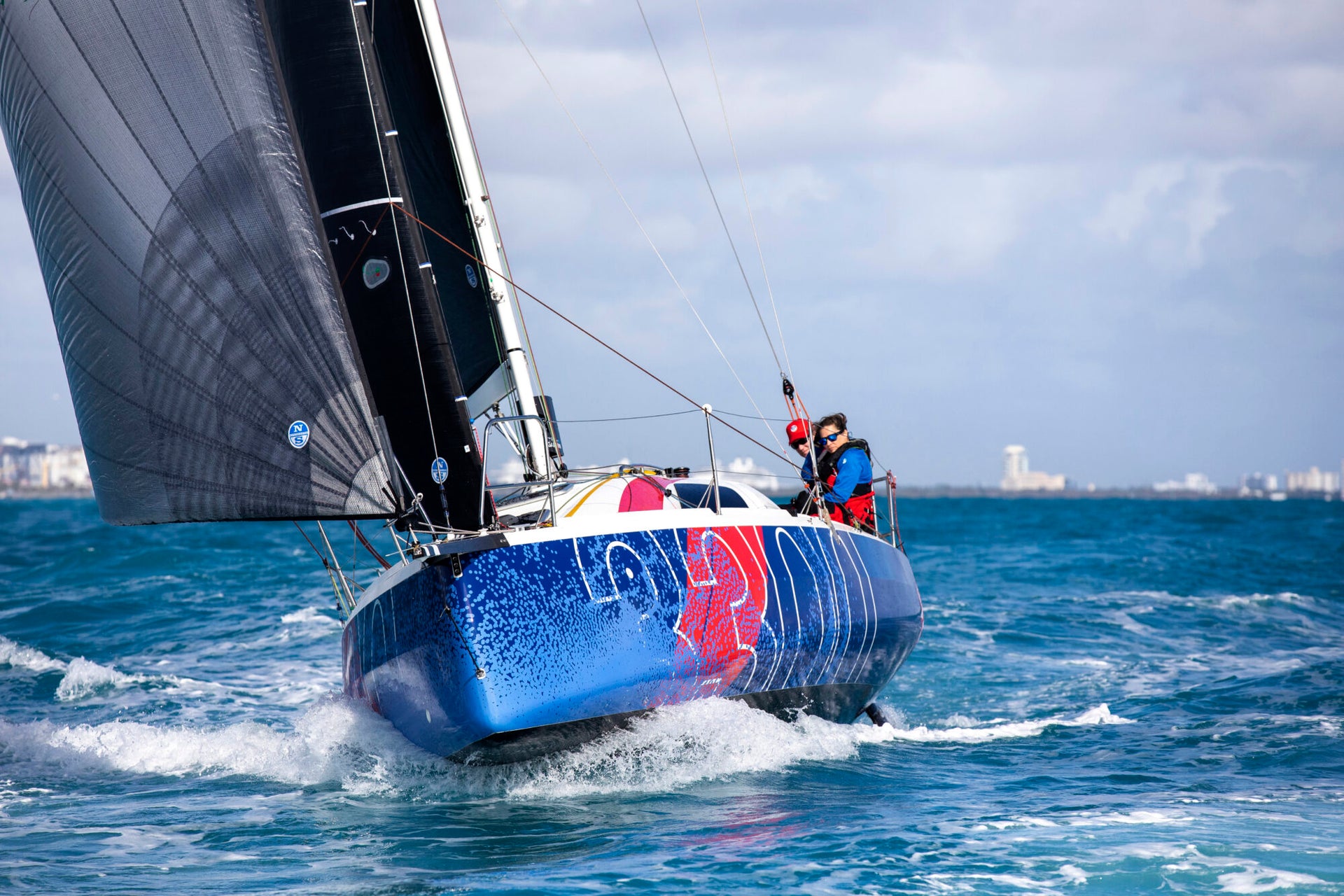
THAT ONE THING: SUZY LEECH
THAT ONE THING: SUZY LEECH
Every Sailor Has It: That “One Thing” they do when they go sailing. Pro sailor Suzy Leech’s thing? Counting.
We’re weeks away from summer in the Northern Hemisphere and getting back out on the water is a top priority. But, as we start to gear up, have you been wondering what can give you the cutting edge? We’ve turned to our best sailors and sailmakers to find out the ONE THING they do every time they go sailing to make them just a little bit better than the rest.
“My friends will tell you…” Suzy pauses for a chuckle. “I count everything! And I just can’t stop.”
Suzy’s resumé includes navigator, engineer, and professional bowman. Last year she took on a new challenge, doublehanded sailing with Ken Read, and together they won the Fort Lauderdale Key West Race. Ken called her a “badass,” so we figured she’d definitely have something to add to our new series, That One Thing.
Counting down accurately was an important part of Suzy’s success as a bowman, because she could judge the distance to the line without having to constantly look at her watch. But she says the countdown from her teammates on the final approach to the windward mark was even more helpful. “The navigator can see best 2-3 minutes out, but as you get closer the leeward trimmer needs to take over. Everyone counts down a little differently, but knowing whether you’ve got a minute or thirty seconds is key, because then you know if you can take a little extra time to make sure it’s all good.”
📸 Billy Black
Another way Suzy uses counting is to predict any breeze changes that require an adjustment from trimmers and helm. In addition to calling in significant puffs and lulls, Suzy tries to work in some context about what to expect for the next fifteen to thirty seconds. It takes a lot of practice to get the balance of priorities right. She’s learned that if you give too much information, everyone will tune it out. Too little and the team is not ready for what comes next.
Like most sailing skills, Suzy says practice and repetition are key because counting down has to remain accurate even while you’re also doing something else. Unlike most sailing skills, Suzy reminds us we can all practice calling the breeze from on land, as long as we can see the wind moving across water. And if you’re on a boat where someone else is the designated breeze caller, “Just say it to yourself,” Suzy suggests. “When you get better than they are, volunteer—and then it’ll be your job.”
Suzy’s Superstition
Even being able to keep time accurately with her eyes closed won’t help Suzy deal with her own niggling superstition. Whenever someone asks, ‘Is the spinnaker packed?’, she gets quite nervous. “Even if I’ve just packed it, I have to go down and do it again,” she admits. Then she adds a pro tip: “Always make sure to pull out a couple feet of the tack and lay it back on top, to make sure it’ll run free when you’re ready to set.”
📸 Billy Black
READ MORE
READ MORE
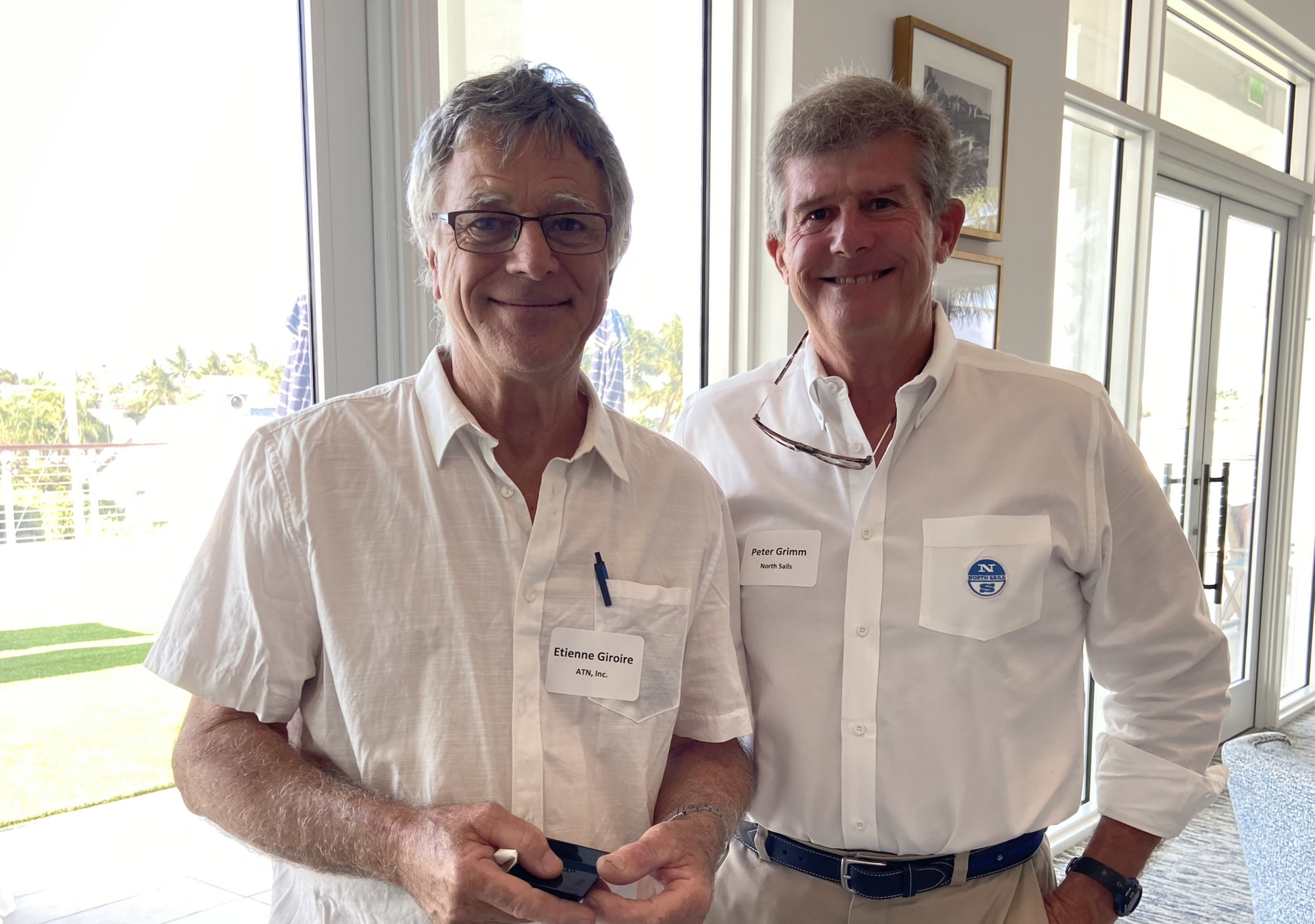
CHECKING IN WITH NORTH SAILS FT. LAUDERDALE
CHECKING IN WITH NORTH SAILS FT. LAUDERDALE
North Sails and ATN Bring Everyone Together
A dozen of Fort Lauderdale's most accomplished multihull and monohull brokers assembled at the Lauderdale Yacht Club last Wednesday for a reception sponsored by North Sails and ATN, Inc. Enjoying refreshments, good company, and gorgeous views, these knowledgeable professionals learned more about North Sails' new Helix Furling Gennaker and the many products offered by ATN including their spinnaker dousing sleeve, catamaran trampolines and sun shades, and new dock nets. The Helix Furling Gennaker, new from North Sails in 2021, eliminates the heavy cable needed for traditional furling and is the most reliable and easy to use top-down furling cruising sail in the world. The Helix Structured Luff transforms how sails fly and is key to building a modern inventory. Our cruising sails with structured luff provide a more reliable furl than a sail weighed down with a heavy furling cable, are lighter and easier to handle, and have a wider range of wind angles. That cuts down down on the number of sails needed onboard, and reduces wear and tear, making the Helix Furling Gennaker your new favorite cruising sail. Local North Sails expert Bob Meagher shares, “Cruising sailors always need to reduce clutter, expense, and hassle. The Helix Furling Gennaker wins the whole trifecta -- a sail that can live up and furled on the bowsprit, doing almost all the job of both a code zero and a gennaker.” One attendee summarized it best, "It was the perfect group. We all get caught up with work and personal minutiae, and hardly get an opportunity to connect with our industry friends for social gatherings. Thanks for organizing the outing!"
READ MORE
READ MORE

3Di AND PANELED SAILS: HOW IT’S MADE IS WHY IT’S DIFFERENT
3Di sails are fundamentally different from paneled sails. We’ll walk you through those elements so you can make the best choice for your next sail.
READ MORE
READ MORE
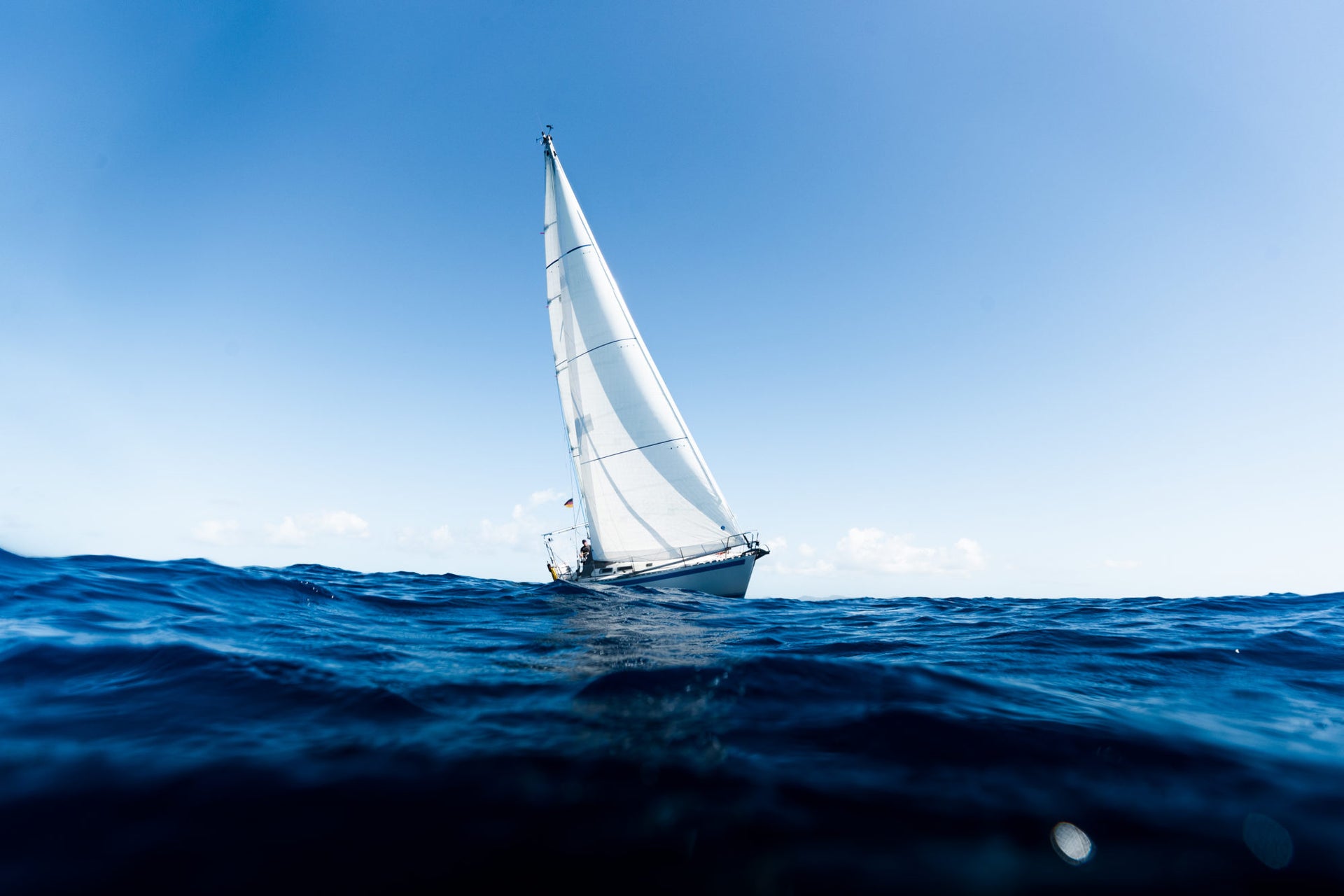
LES MEILLEURES VOILES DE CROISIÈRE
LES MEILLEURES VOILES DE CROISIÈRE
North Sails a une option pour tous les croisiéristes
Découvrez les différences entre les voiles de régate et les voiles de croisière, ainsi que les options qui s'offrent à vous pour trouver la voile qu'il vous faut.
Les voiles de régate et les voiles de croisière sont-elles identiques ? Non. Ici, nous allons considérer tous les matériaux des voiles de croisière North. Une fois que vous avez défini votre programme de navigation, les options seront plus faciles que vous ne le pensez. Gardez à l'esprit que vous n'avez pas à faire ces choix tout seul : nos experts North Sails sont prêts à vous aider dans votre sélection. Et pour prolonger la durée de vie de vos voiles, découvrez les meilleurs conseils d'entretien à ajouter dans votre routine d'utilisation.
NOUVEAU GENNAKER HELIX POUR CROISIÉRISTES : Manœuvres simplifiées, plaisir accru et performance accessible pour tous
En cette année 2021, North Sails lance un tout nouveau produit sur le marché de la croisière, le Gennaker Helix sur enrouleur, qui vient étoffer sa gamme de voiles Helix sans câble anti-torsion.
Exclusivement conçu pour les croiseurs et doté d’un guindant Helix structurel, ce Gennaker innovant met l’accent à la fois sur la simplicité d’utilisation et la fiabilité pour naviguer en toute liberté, sécurité et détente.
La nouvelle voile s’affranchit du poids excessif du câble de guindant traditionnel, diminuant ainsi les charges à l’enroulement et facilitant les manœuvres. Libérée de son câble anti-torsion, la voile se projette plus facilement au vent et génère une force propulsive plus importante pour pousser le bateau vers l’avant. Elle couvre également une large plage de conditions de vent aux allures portantes pour naviguer plus longtemps sans changer de voile et réduire le nombre de voiles embarquées à bord. Lire la suite
Quel matériau dois-je choisir ?
Pour les voiles à panneaux sur les bateaux de croisière, nous proposons les voiles NPC CROSS-CUT, NPC RADIAN, NPL SPORT et NPL TOUR. Dorénavant, nous avons également un nouveau type de voiles moulées 3Di ; notre ligne 3Di OCEAN se compose de trois types de matériaux 3Di, conçu pour des bateaux de tailles différentes : OCEAN 330, OCEAN 370, et OCEAN 700. Et n'oublions pas que la ligne 3Di ENDURANCE représente une zone ""polyvalente"" avec des voiles bien adaptées à la fois à la croisière et à la régate.
Et puis il y a les nylons tissés, les laminés, et les options 3Di Downwind à considérer quand on envisage le remplacement d'un spinnaker asymétrique ou symétrique.
Que vous soyez propriétaire d'un voilier de 22 pieds ou d'un yacht de 22 mètres, l'astuce consiste à travailler avec votre expert pour affiner rapidement les choix de tissu en fonction de vos besoins. Le processus consiste à décider exactement ce qui vous convient le mieux en termes de matériau, de LP, de la valeur du rond de chute, de configuration des lattes, de nombre de ris, de couleur, etc. Cela peut et doit être amusant.
Les éléments que vous devez prendre en compte pour réduire vos options :
Votre budget.
Vos attentes quant à la durée de vie d'une voile.
Vos attentes quant à la facilité et la manipulation d'une voile.
Votre désir de réduire le poids de la voile tout en respectant les critères ci-dessus.
Voiles à panneaux
Si l'on s'en tient pour l'instant aux matériaux des voiles de près et que l'on commence par les voiles à panneaux, le point de départ est le polyester tissé, souvent appelé "Dacron". Le fil de polyester est un bon matériau polyvalent pour les bateaux de petite et moyenne taille. Il résiste aux dommages causés par l'exposition aux UV. Il est solide. Et le prix d'une voile en Dacron se situe dans le bas de la fourchette. Résumons en quelques points :
NPC CROSS-CUT - Coupe Horizontale en Dacron
Budget : lorsque le prix doit être aussi bas que possible, une voile NPC Cross-Cut est le bon choix.
Durabilité : ces voiles résistent bien même après plusieurs saisons d'utilisation intensive.
Tenue de la forme de la voile : change beaucoup avec les heures d' utilisation.
Poids : Ces voiles ne sont pas légères. C'est un problème peu important sur les petits bateaux, mais très perceptible lorsque la taille augmente.
NPC RADIAN - Coupe Orientée en Dacron
NPC RADIAN est une version haut de gamme de la voile à panneaux en dacron. Les panneaux sont orientés, ce qui confère une bonne amélioration de la tenue de la forme de la voile.
Budget : le prix de la Radian est un peu plus élevé que celui de la NPC Cross Cut.
Durabilité : ces voiles restent en une seule pièce, même après plusieurs saisons d'utilisation intensive.
Tenue de la forme de la voile : assez bonne à l'état neuf, mais attendez-vous à un changement de forme avec l'âge.
Poids : plus léger qu'une voile NPC Cross-Cut. Non disponible pour les grands bateaux.
NPL - Coupe Orientée en tissu laminé
Si l'on s'en tient aux matériaux des voiles de près et des voiles à panneaux, le niveau suivant est le tissu laminé (en langage North, "NorLam"). Les laminés offrent la possibilité de réduire le poids de la voile, d'améliorer la tenue de la forme et d'incorporer des fibres à haut module (faible étirement) et à haute ténacité (résistance). Lorsqu'il est conçu et fabriqué correctement, il est très durable, tout en contribuant à maintenir le poids de la voile à un niveau raisonnable et en offrant de très bonnes performances en matière de forme de la voile.
NPL TOUR & TOUR ULTRA
"Les modèles Xi Cruise sont destinés aux bateaux de croisière de taille moyenne qui recherchent à la fois un prix modéré et des performances de navigation accrues. Les styles Xi Cruise présentent des couches extérieures tissées en polyester entourant un film de polyester et une fibre aramide (haut module) à l'intérieur. Les couches extérieures protègent le fil d'aramide, tandis que la teneur en aramide réduit le volume et l'étirement.
Budget : prix moyen.
Durabilité : moyenne à élevée.
Tenue de la forme des voiles : très bonne.
Poids : bon. Le gain de poids est très appréciable par rapport au dacron."
NPL TOUR ULTRA – NorLam Ultra X
Les voiles Ultra X sont disponibles pour les bateaux de croisière de taille moyenne à grande. La principale différence entre le Xi Cruise décrit ci-dessus et l'Ultra X est l'utilisation de la fibre UltraPE dans l'Ultra X. L'UltraPE offre des performances de fibre quasi idéales, avec un module et une ténacité très élevés, ainsi qu'une robustesse et une résistance à l'environnement remarquables. Dans le tissu laminé, nous tissons l'UltraPE et nous introduisons une grande quantité de cette fibre dans le tissu. Cette approche n'est pas très économique, mais elle permet d'améliorer les performances et de prolonger la durée de vie des voiles.
Budget : niveau de prix un peu plus élevé.
Durabilité : excellente.
Tenue de la forme de la voile : très bonne.
Poids : moyen.
NPL SPORT – NorLam Ultra XC
"Prenez tout ce qui a été dit plus haut sur le Norlam Ultra X, et ajoutez la fibre de carbone. Supposons que tout le monde connaît la fibre de carbone de nos jours, étant donné son omniprésence dans les voitures de course, les vélos qui semblent ne peser presque rien, les bateaux de 80 pieds ultra légers, et à peu près tous les produits à haute performance qui semblent ne peser presque rien. Depuis plus de vingt-cinq ans, North Sails utilise de l'UltraPE et de la fibre de carbone pour fabriquer des voiles de croisière destinées à de grands bateaux, et les résultats sont toujours aussi remarquables.
Budget : niveau de prix élevé.
Durabilité : excellente.
Tenue de la forme de la voile : très bonne, approchant l'excellence.
Poids : moyen (plus léger que l'Ultra X, mais il faut beaucoup de fibres pour le long terme).
Et maintenant… en 3D!
Nous avons récemment établi une ligne complète de produits 3Di fabriqués pour les bateaux de croisière sous le nom de OCEAN. Un élément clé de cette ligne a été l'introduction d'un nouveau type de ""matériau"" 3Di appelé 3Di OCEAN 370. Examinons un peu plus en détail ce qui fait que le 3Di OCEAN convient parfaitement à la croisière.
Tout d'abord, si vous ne comprenez pas bien les différences entre les voiles 3Di et les voiles en panneaux, jetez un coup d'œil à notre page sur les matériaux pour plus d'informations. Le 3Di représente un changement de technologie dans la fabrication des voiles. Il s'agit d'une méthode de production révolutionnaire et donc plus coûteuse.
Pour les croisiéristes, cette complexité présente des avantages évidents : une meilleure tenue des formes pour des voiles plus légères, tout en améliorant la durabilité. Tous les navigateurs de croisière doivent-ils pour autant oublier les voiles à panneaux, étant donné la supériorité technique du 3Di ? Non. Les voiles à panneaux restent un choix viable pour toutes les raisons mentionnées ci-dessus et, en fonction de vos priorités et de votre budget, restent une bonne option pour de nombreux navigateurs.
3Di OCEAN 330
"Conservez les avantages du NORDAC décrits ci-dessus et améliorez-les grâce à la technologie 3Di - c'est OCEAN 330. Appelé à l'origine 3Di NORDAC, OCEAN 330 tire le meilleur parti de la fibre polyester dans les voiles de près.
Budget : prix moyen selon les normes des voiles ""dacron"", bas selon les normes 3Di.
Durabilité : excellente.
Tenue de la forme de la voile : bonne (très bonne, sinon excellente, selon les normes des voiles en polyester tissé).
Poids : moyen.
3Di OCEAN 370
OCEAN 370 associe l'UltraPE au polyester, ce qui augmente considérablement la résistance tout en améliorant les performances à l'élongation. Lorsque les charges dans les voiles sont élevées ou si les voiles sont destinées à une utilisation intensive il n'y a pas d'autre alternative que l'Ocean 370. L'OCEAN 370 va là où l'OCEAN 330 n'est pas viable - elle le fait de manière rentable, tout en équilibrant performance de navigation et durée de vie prolongée.
Budget : moyen.
Durabilité : excellente.
Tenue de la forme de la voile : très bonne par rapport aux voiles de croisière directement concurrentes.
Poids : moyen.
3Di OCEAN 700
OCEAN 700 est une solution de croisière performante idéale pour les grands bateaux dotés de voiles très sollicitées. L'UltraPE est le principal type de filament/fibre, l'aramide étant judicieusement introduit dans les zones de charge maximale de la voile. Robuste, peu extensible et conçu pour offrir de nombreuses années de navigation, OCEAN 700 est la référence en matière de croisière pour les bateaux de taille moyenne et les superyachts.
Budget : moyen.
Durabilité : excellente.
Tenue de la forme des voiles : très bonne.
Poids : moyen.
Cela décrit notre gamme complète de voiles de croisière. Votre équipe North Sails ont l'expertise nécessaire pour vous guider vers la voile qui vous convient le mieux au sein de cette large gamme. Si vos plans incluent une part de course en plus de la croisière, les voiles de la série 3Di ENDURANCE se situent dans l'enveloppe de performance forme/poids de voile que les coureurs exigent. Restez à l'écoute pour une mise à jour sur les meilleurs choix de matériaux pour les voiles de vent arrière/de portée, que ce soit en croisière ou en course.
READ MORE
READ MORE
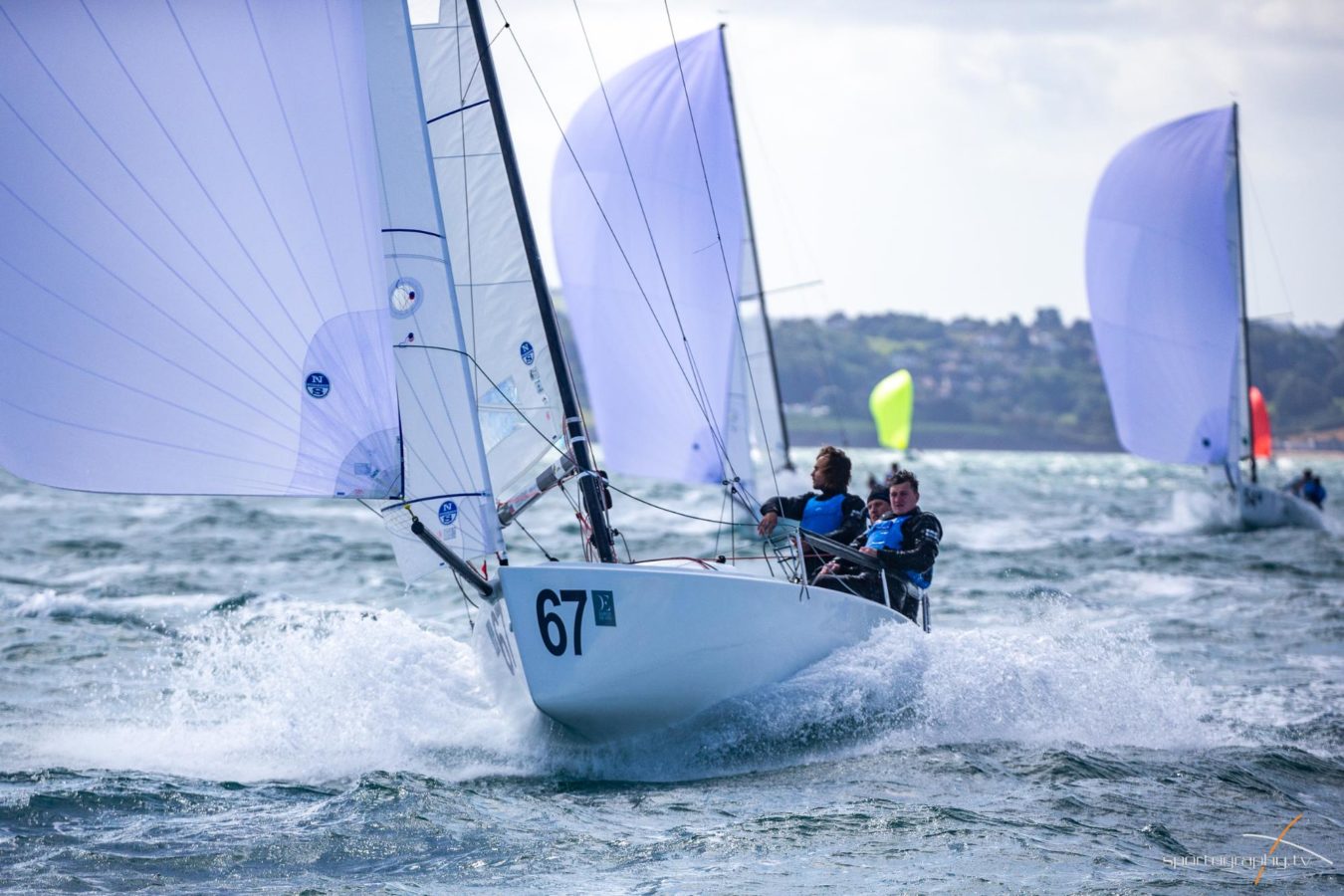
J/70 NORTH AMERICAN CHAMPIONSHIP TOOL KIT
Bring Your Best Game to the J/70 North American Championship
We are excited to get back out racing again, and we wanted to reshare some of our favorite articles and webinars before you head to Annapolis for the J/70 North American Championship. This Tool Kit covers all the bases, including tips on boat speed in light air, how to make the most of our on-the-water coaching, and our updated J/70 Tuning Guide.
On-the-Water Coaching for Everyone
North Sails J/70 Class Expert Eric Doyle will be available on the North coach boat from Tuesday-Thursday offering tips on fine-tuning your sails. Contact Eric in advance to let him know you would like your sails checked.
Contact Eric
Rewind and Rewatch
While we were unable to go sailing, the North Sails team switched their motto to “Let’s Get Faster” and produced a number of J/70-specific webinars that are filled with invaluable information from the top sailors in the class. Don’t leave the docks before watching them all!
Downwind Techniques Downwind Boat Handling
Mainsail Trim Lessons Learned in Miami
Have You Read our New Tuning Guide?
With the introduction of the new XCS-4 Mainsail and J-2+ Jib to our J/70 sail designs, our Class Experts have revised the North Sails Tuning Guide. Countless hours of sailing, testing, and competing in the J/70 fleet have gone into this revised editions which is a must-read before the North Americans.
Learn More
Bitesize Tips for Light Air
Read our easy-to-follow tips on rig tuning, sail trim, and boat trim to help you sail your J/70 faster when the breeze is light.
Learn More
Optimize Your Downwind Performance
Displacement mode, wing-on-wing, or full plane? Understanding the J/70’s different downwind modes will help you make the right move at the right time when racing.
Learn More
Why is Headstay Sag Fast Upwind in Light Air?
What is headstay sag and how can you use it to your advantage to maintain better speed in light-air conditions? One Design expert Tim Healy describes the risks and rewards.
Learn More
North Sails Certified Service Has You Covered
The North Sails Annapolis Certified Service Team is ready for you with overnight sail service and repairs during the regatta. Call Ridgely Mackenzie to arrange a sail pick up on 443-995-7188.
Contact Ridgley
READ MORE
READ MORE


